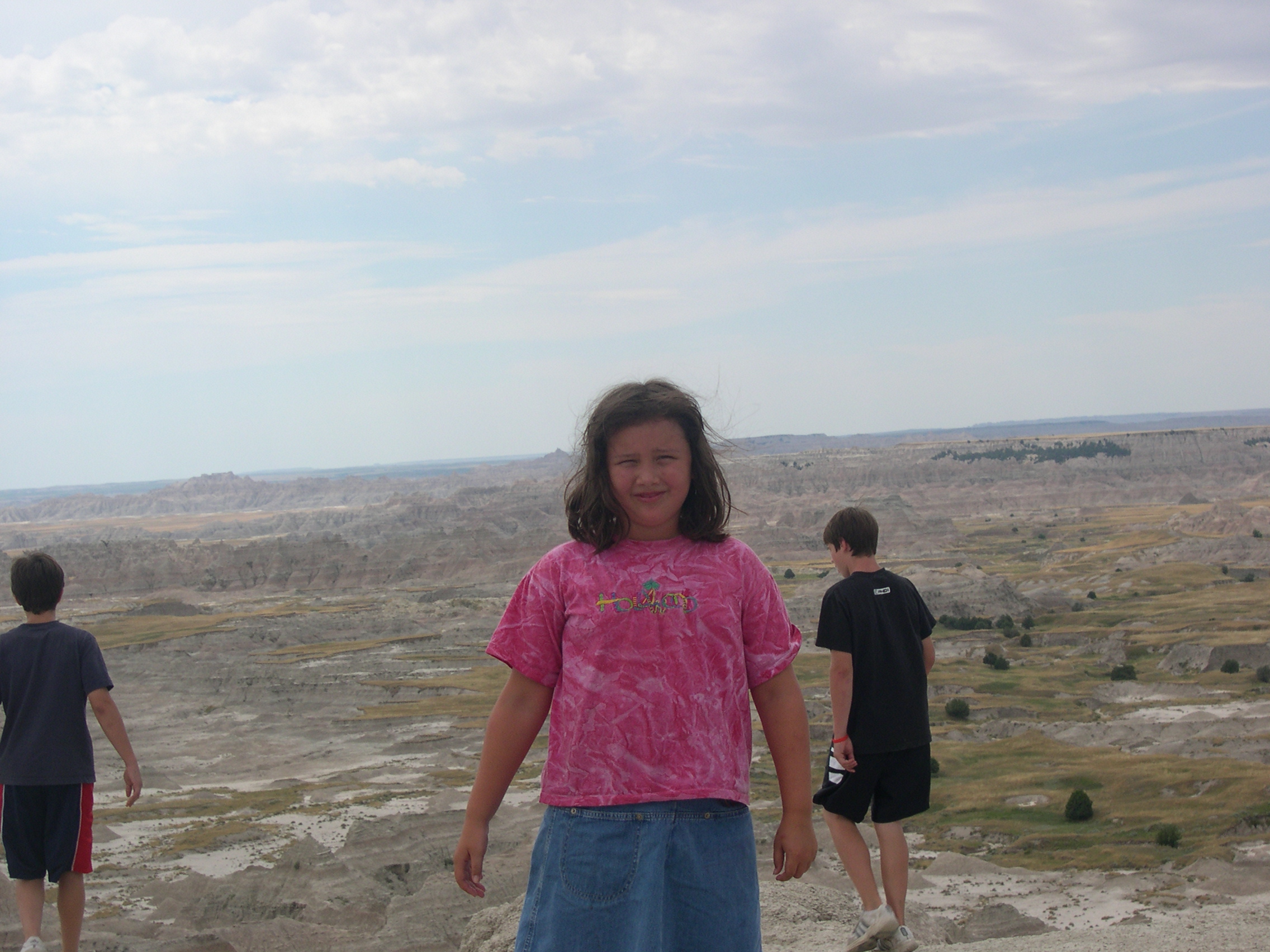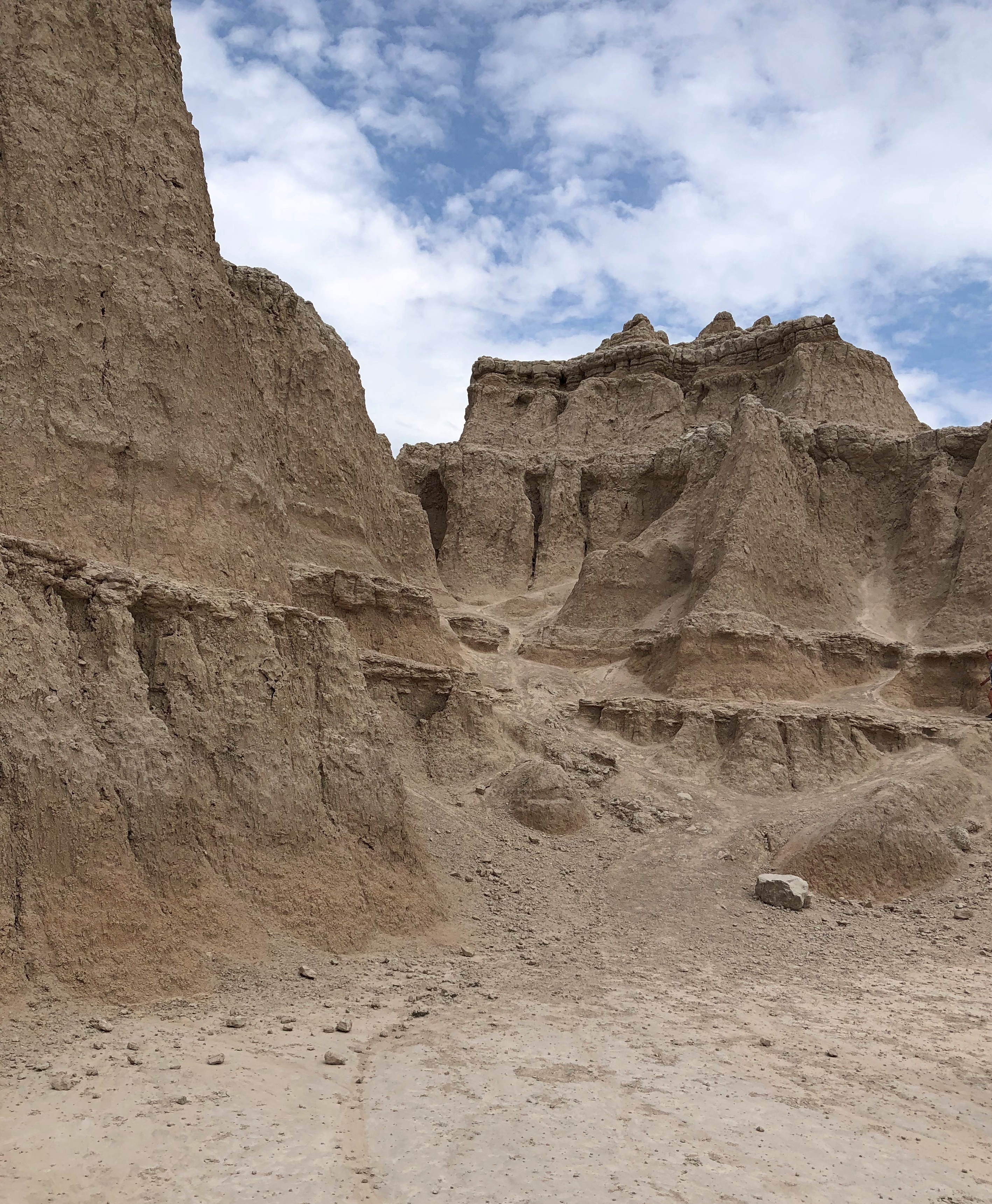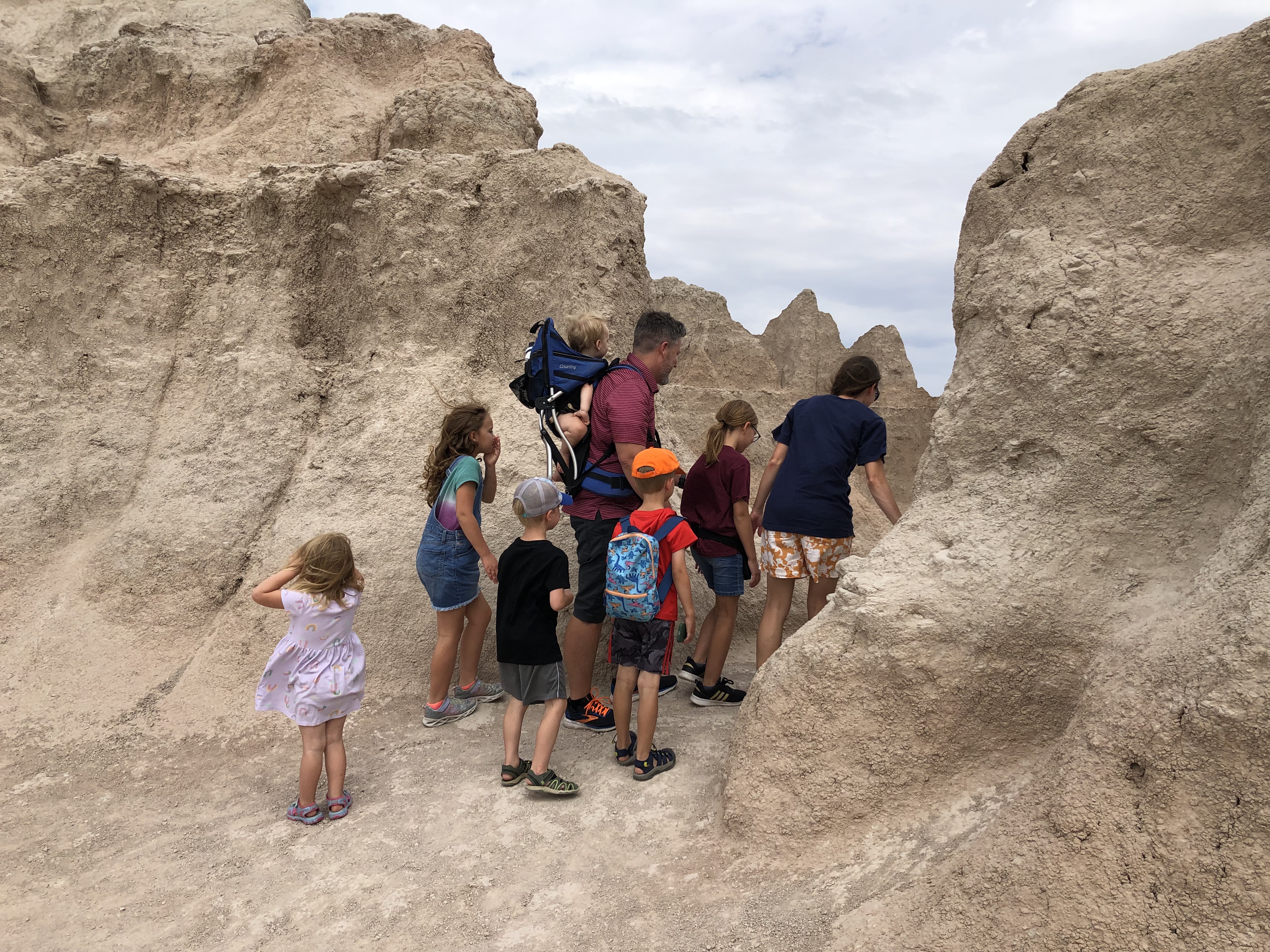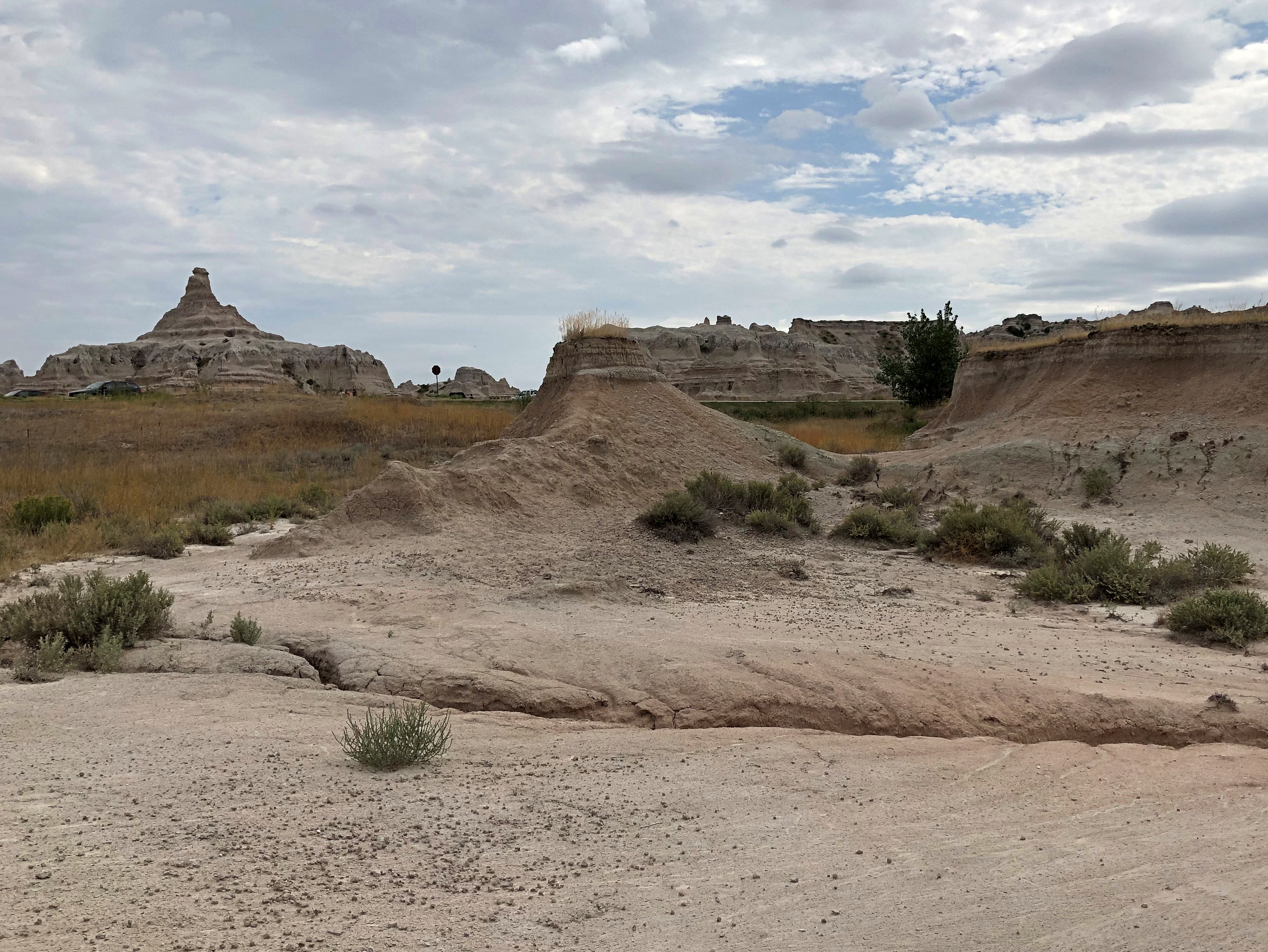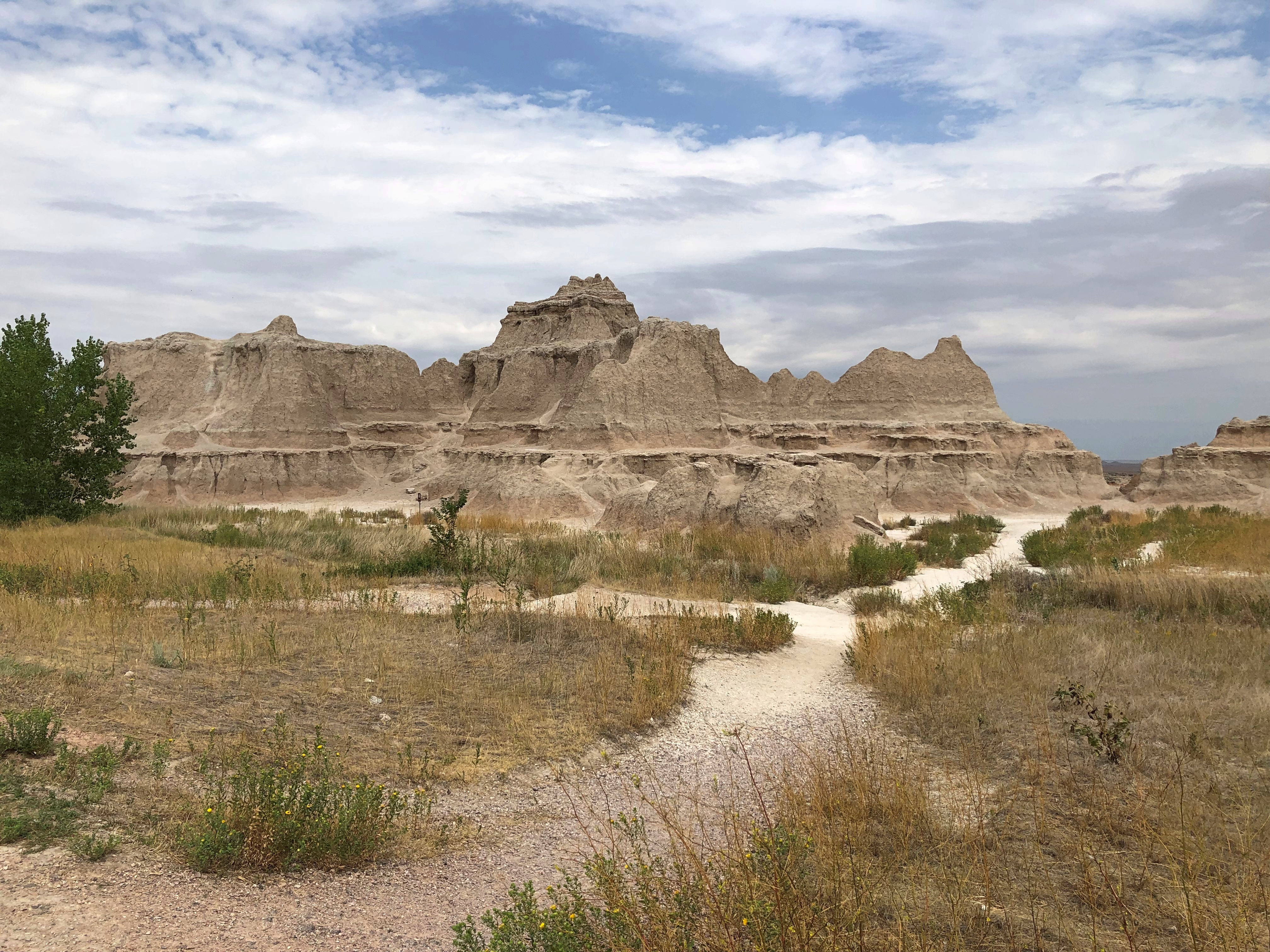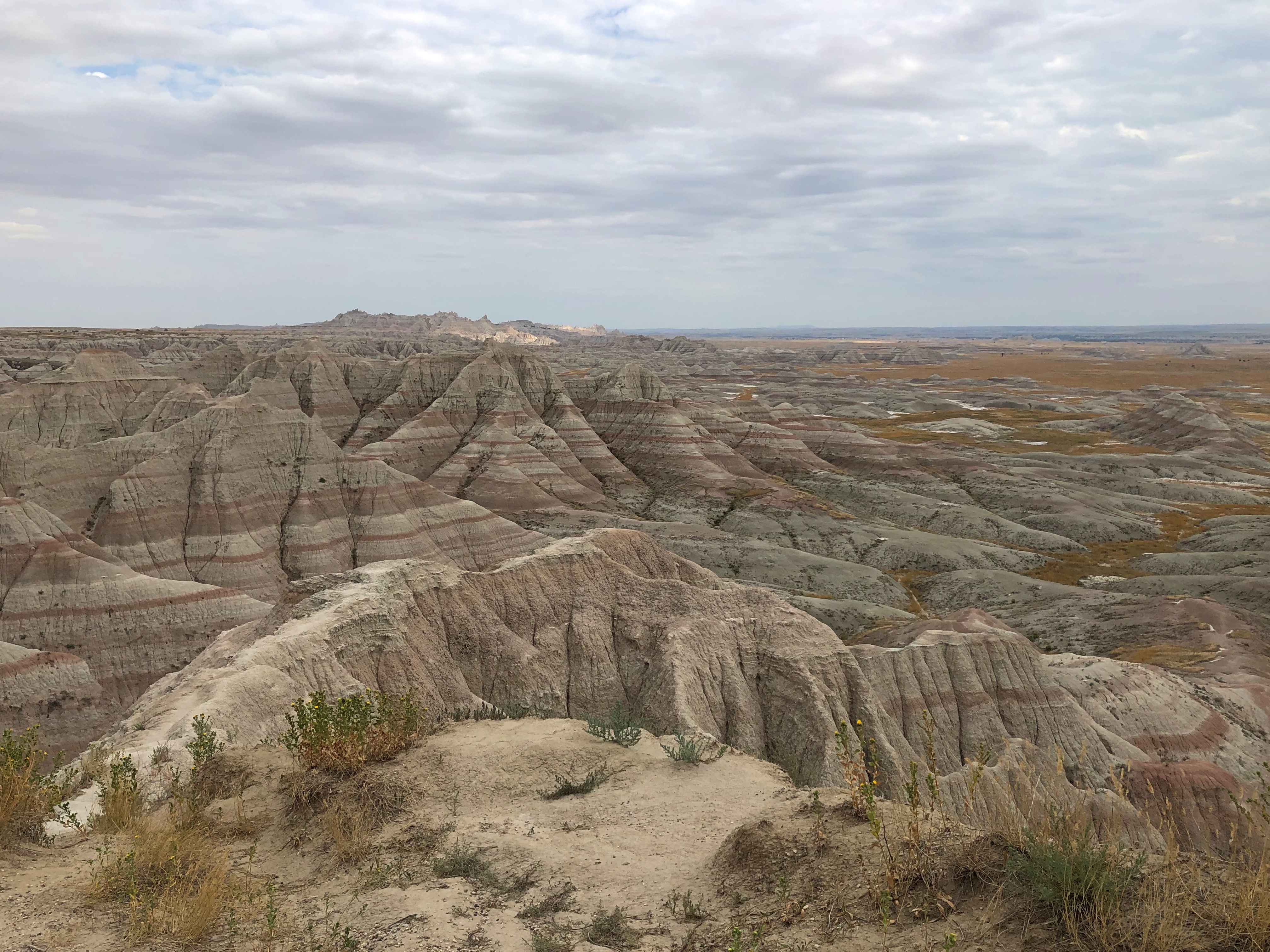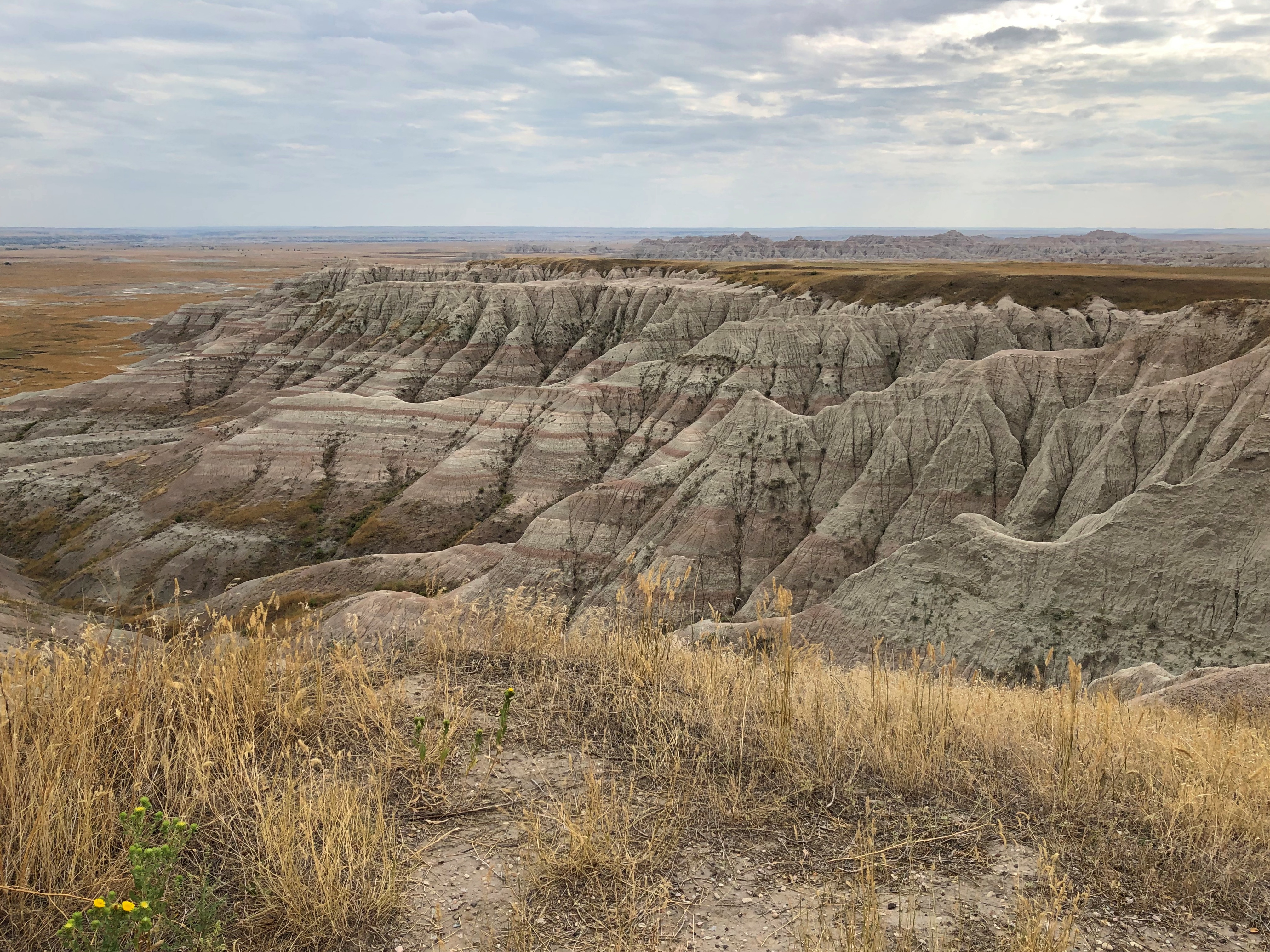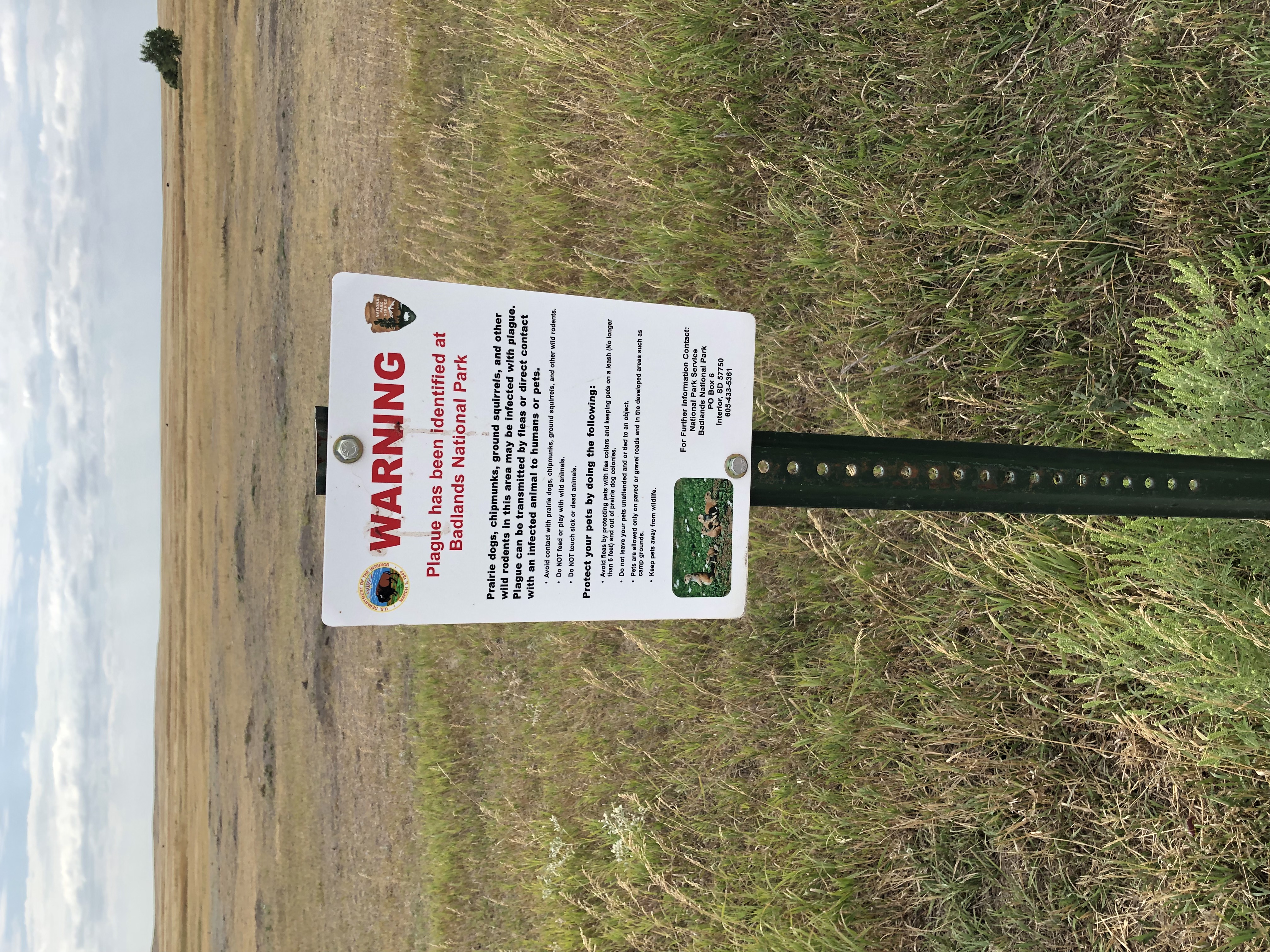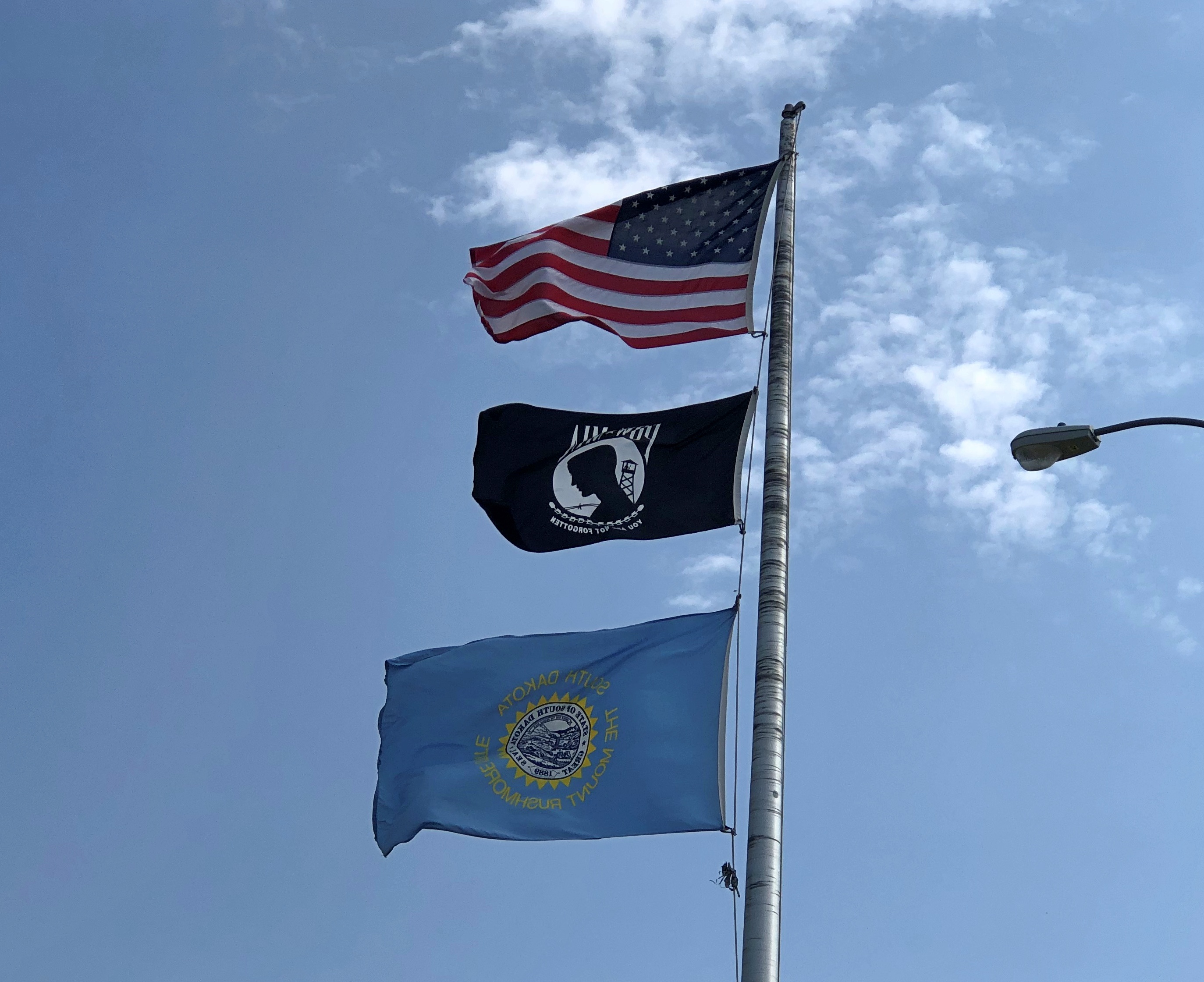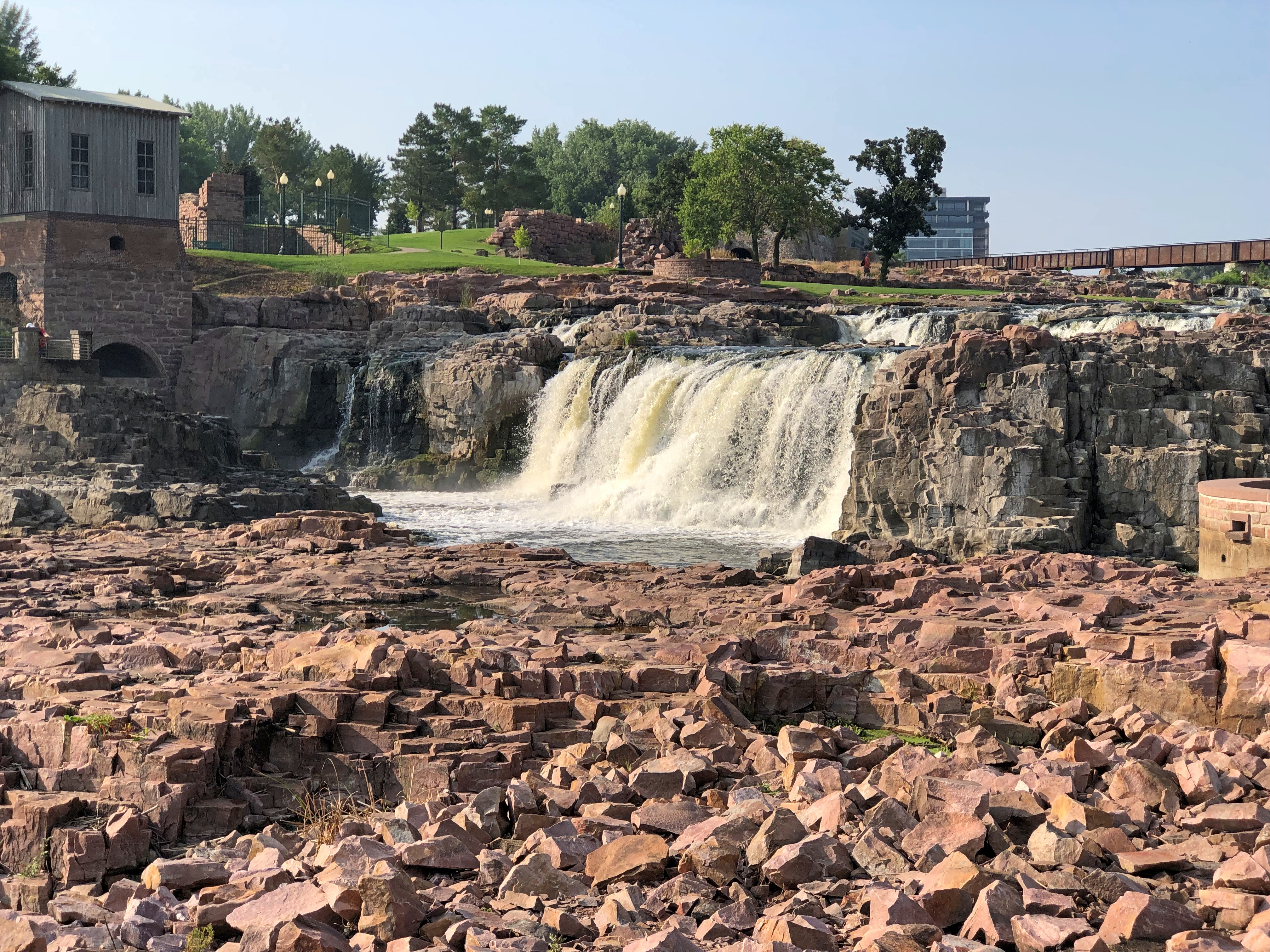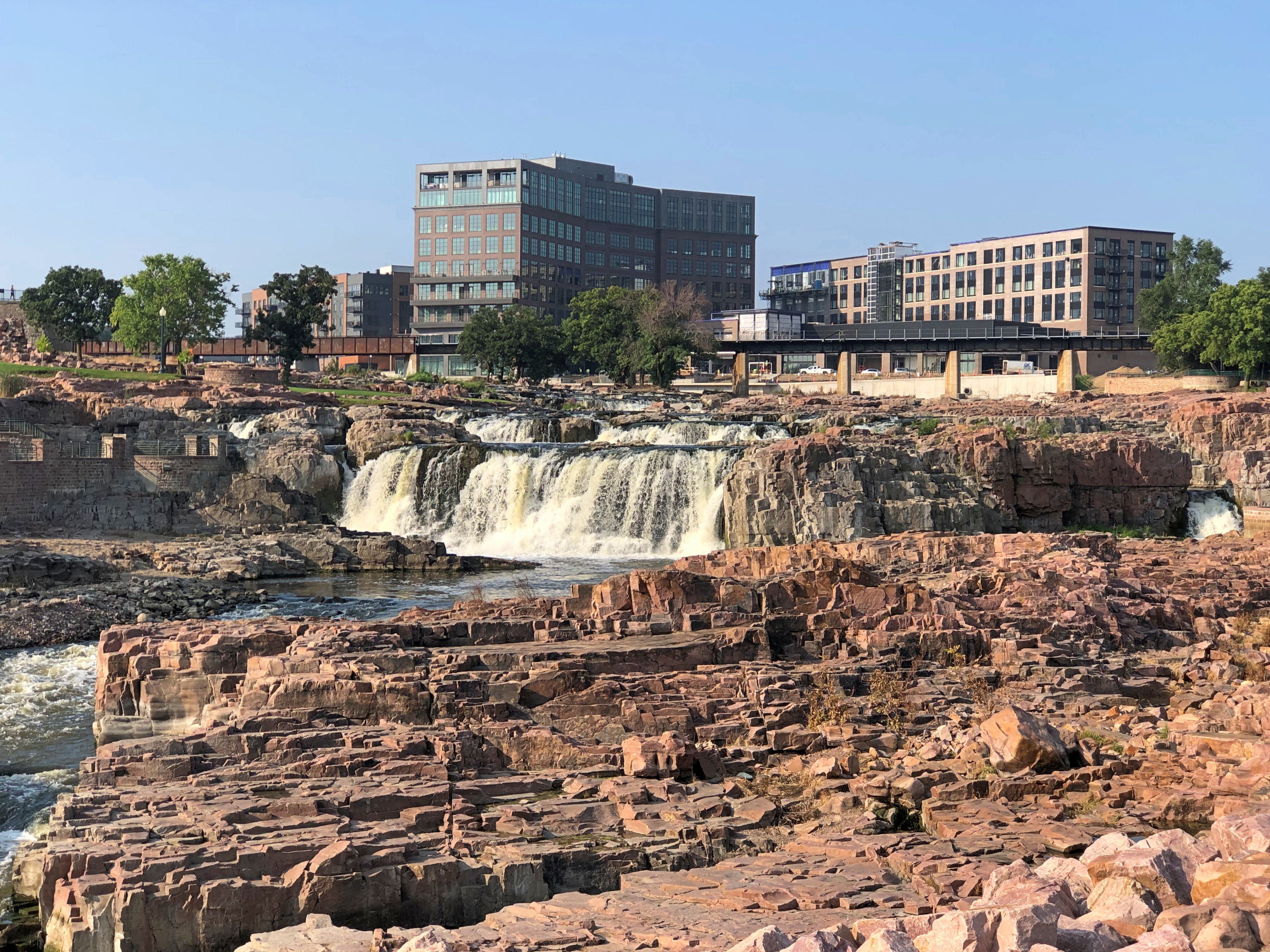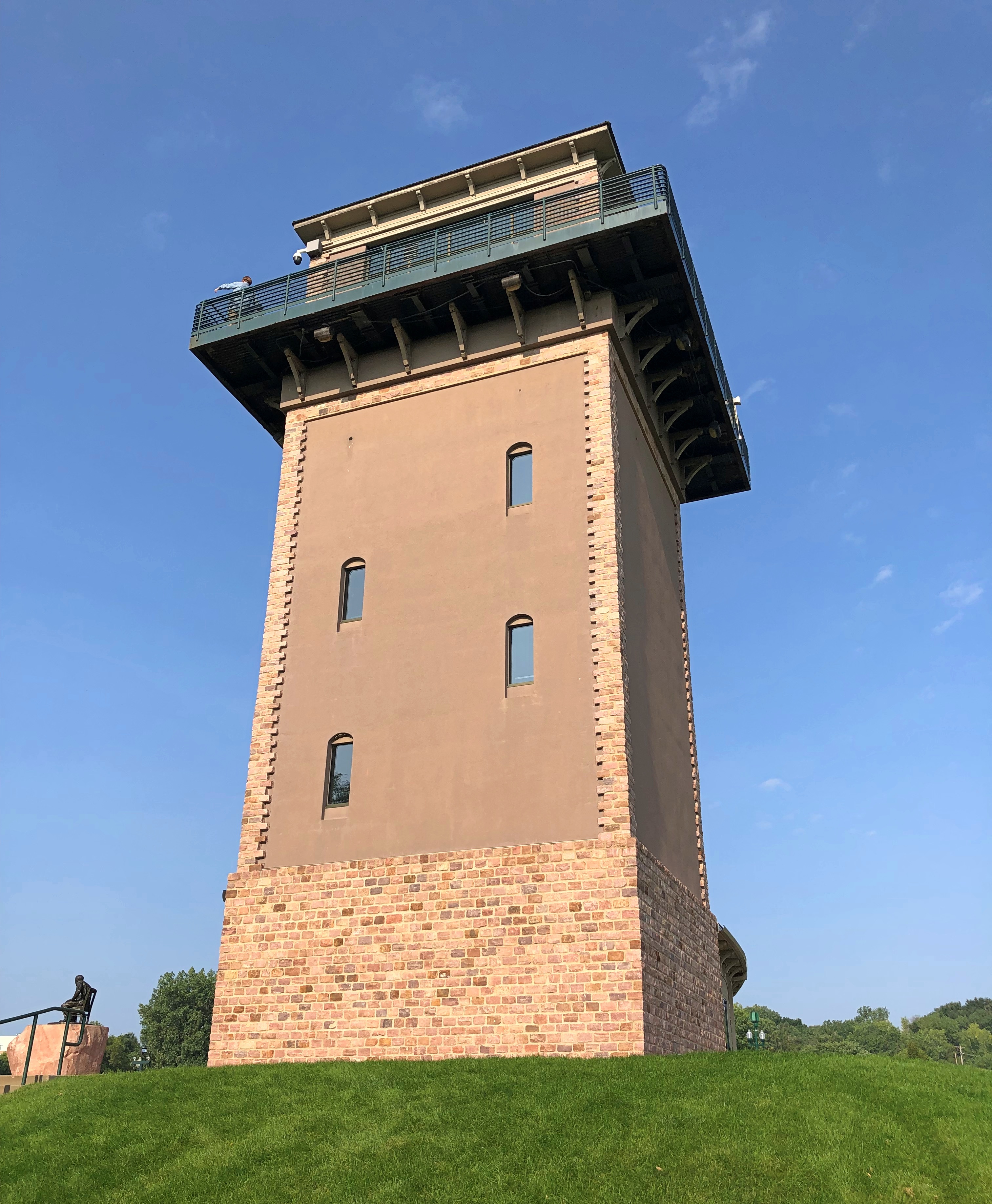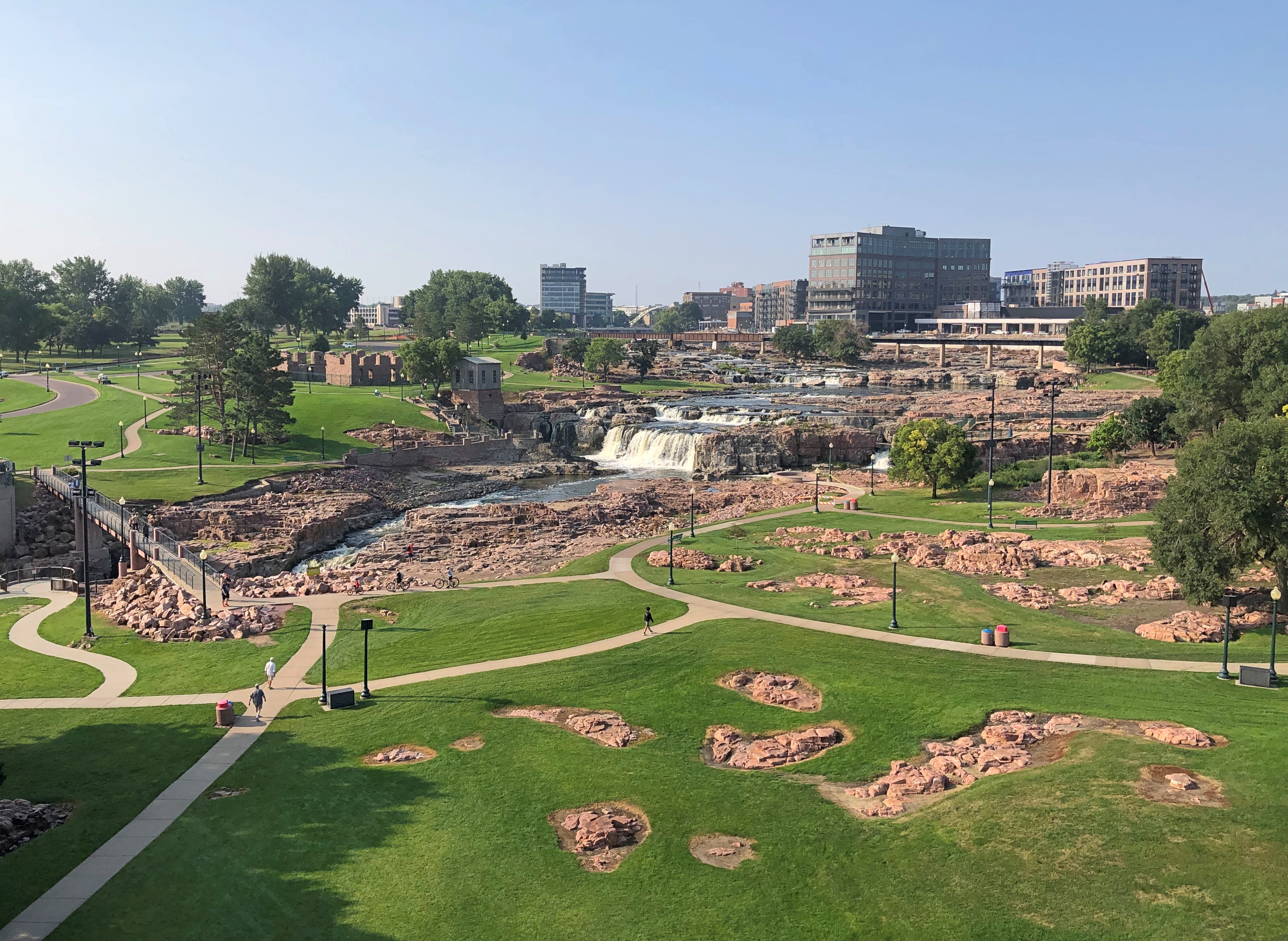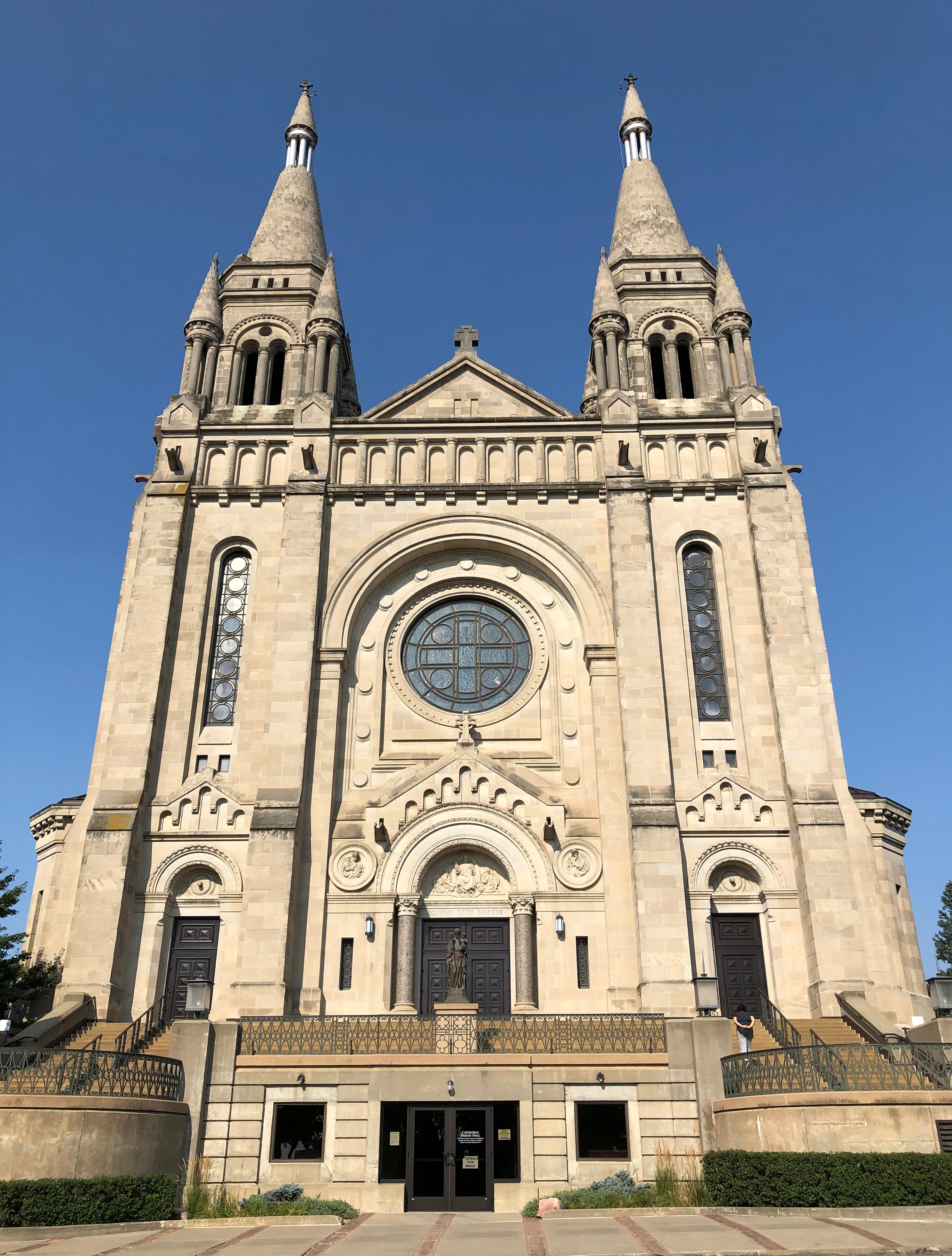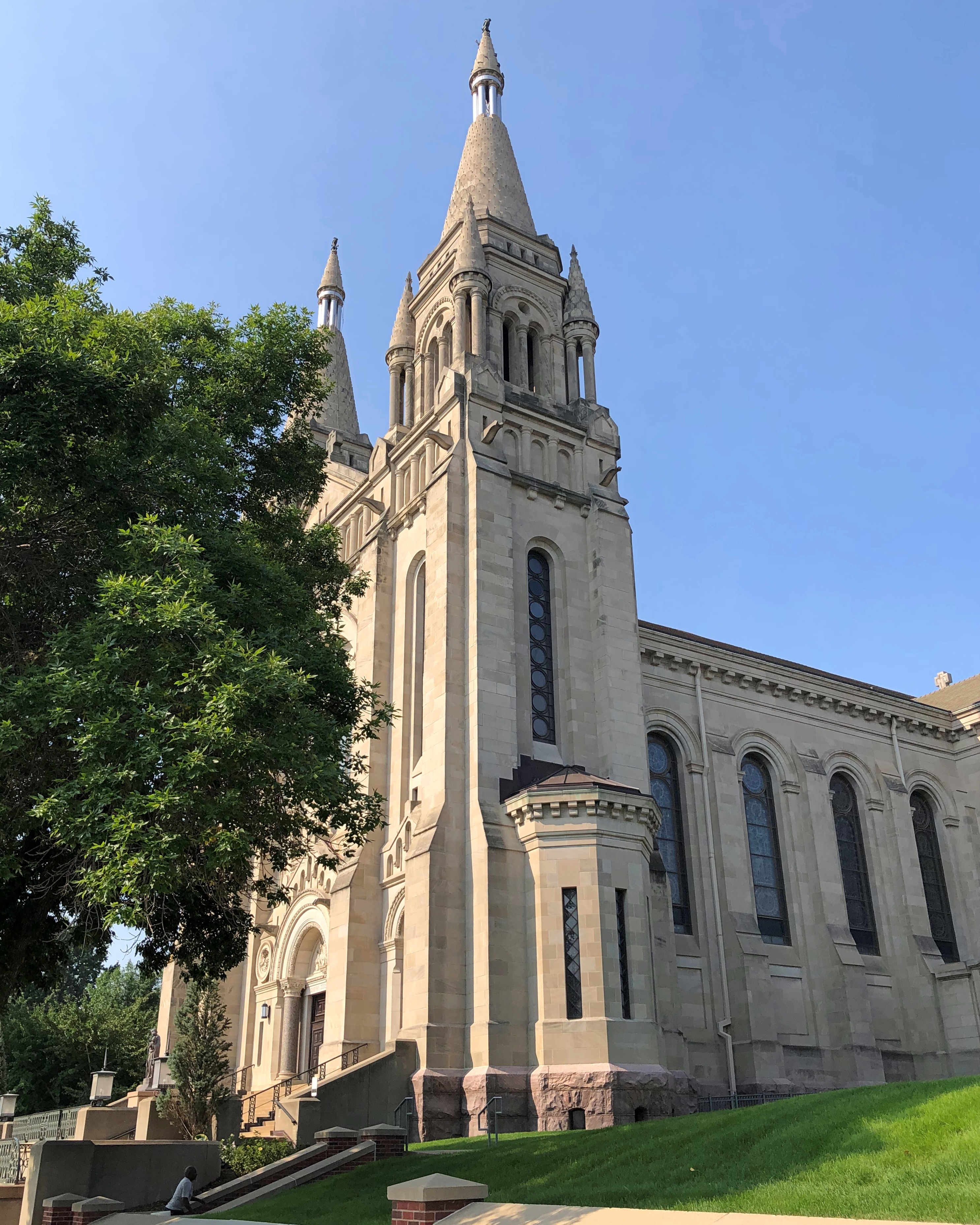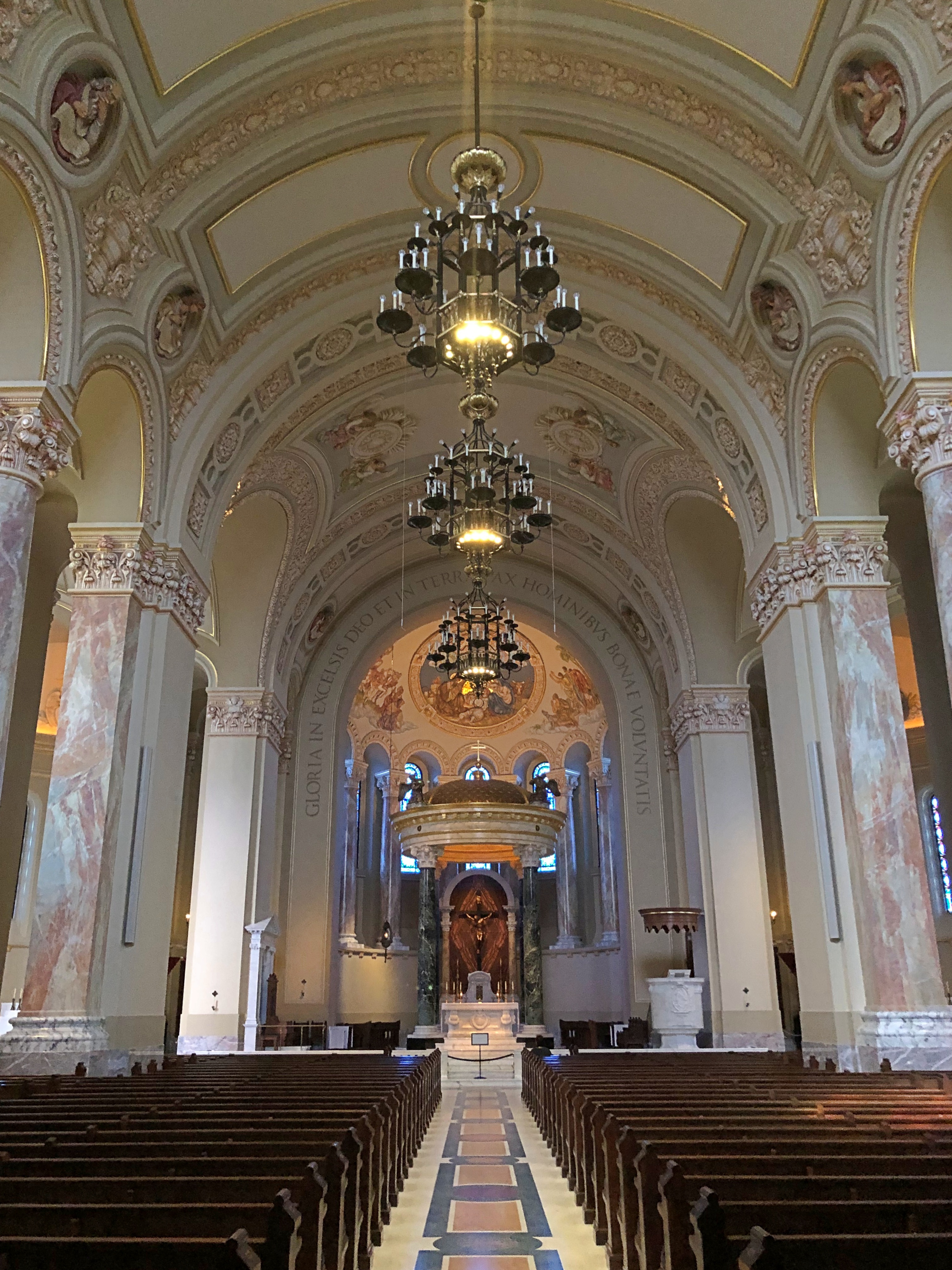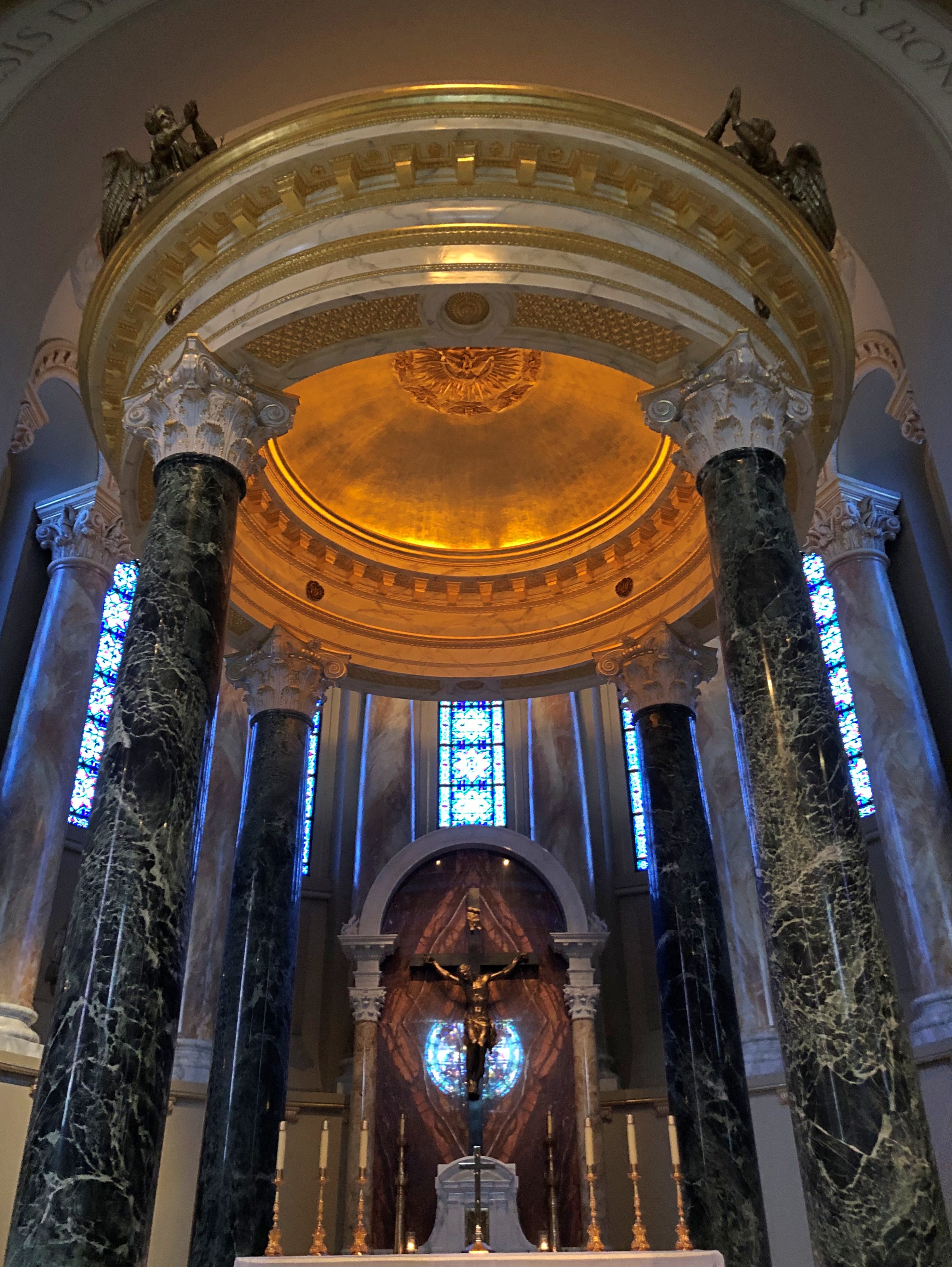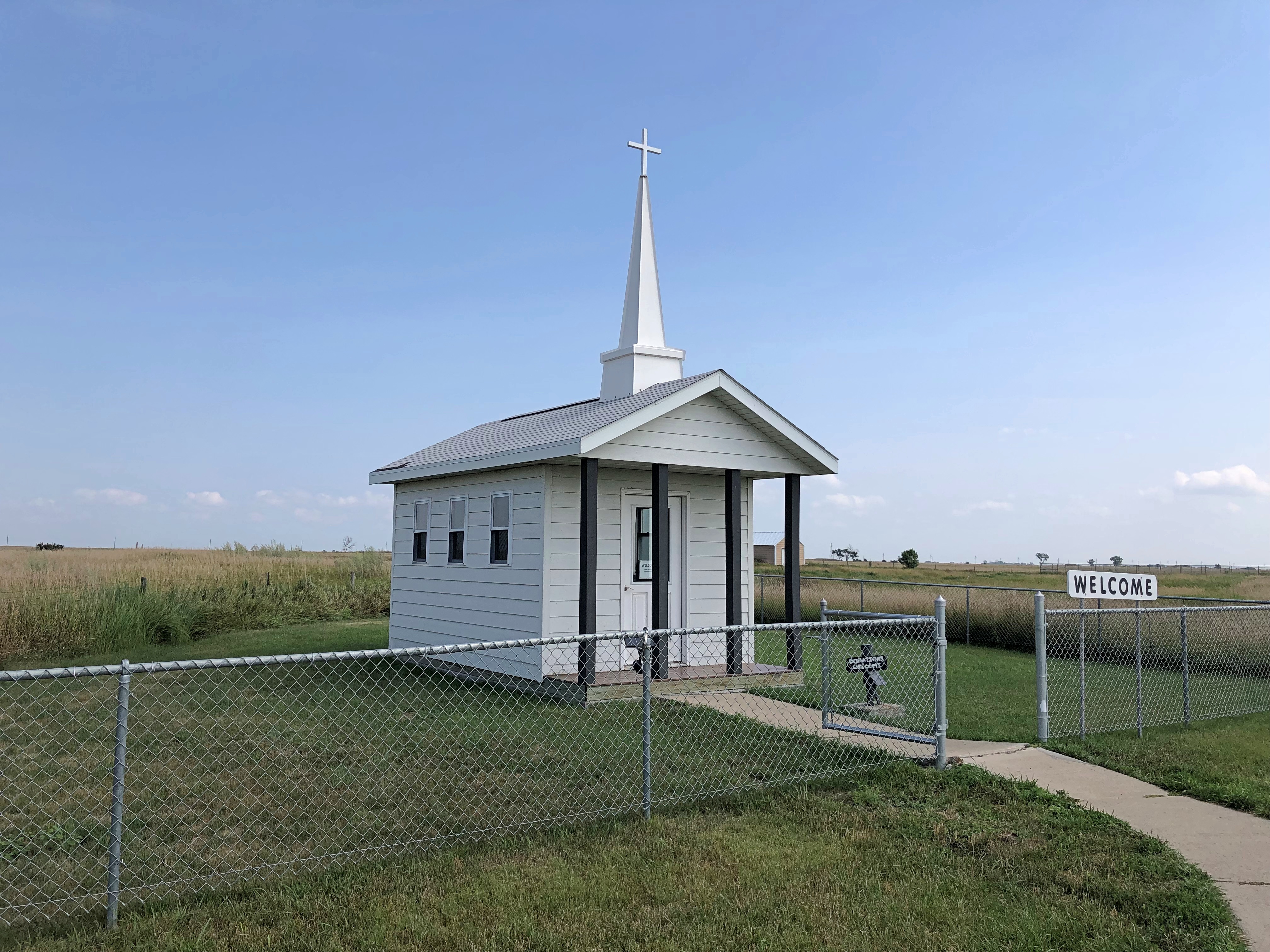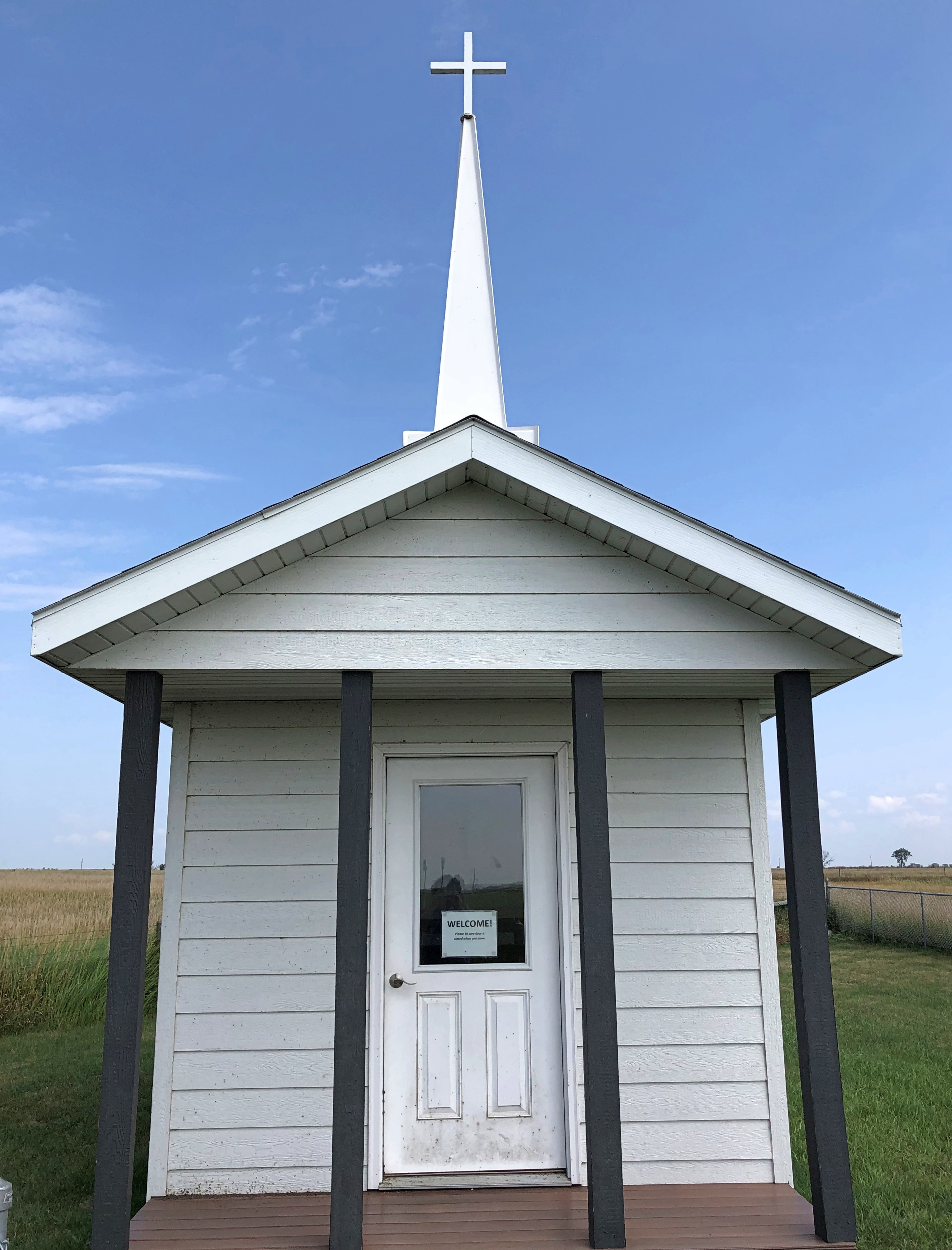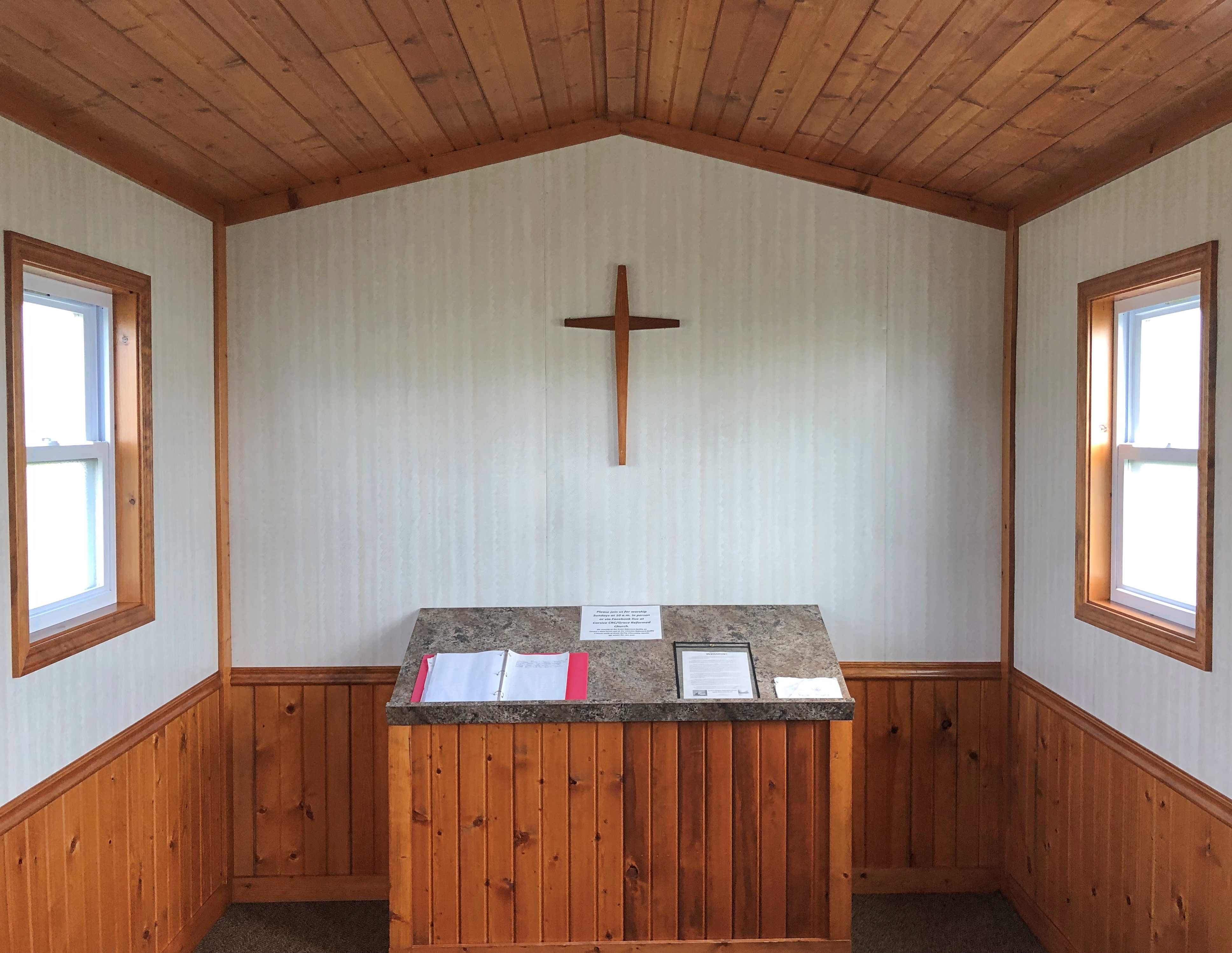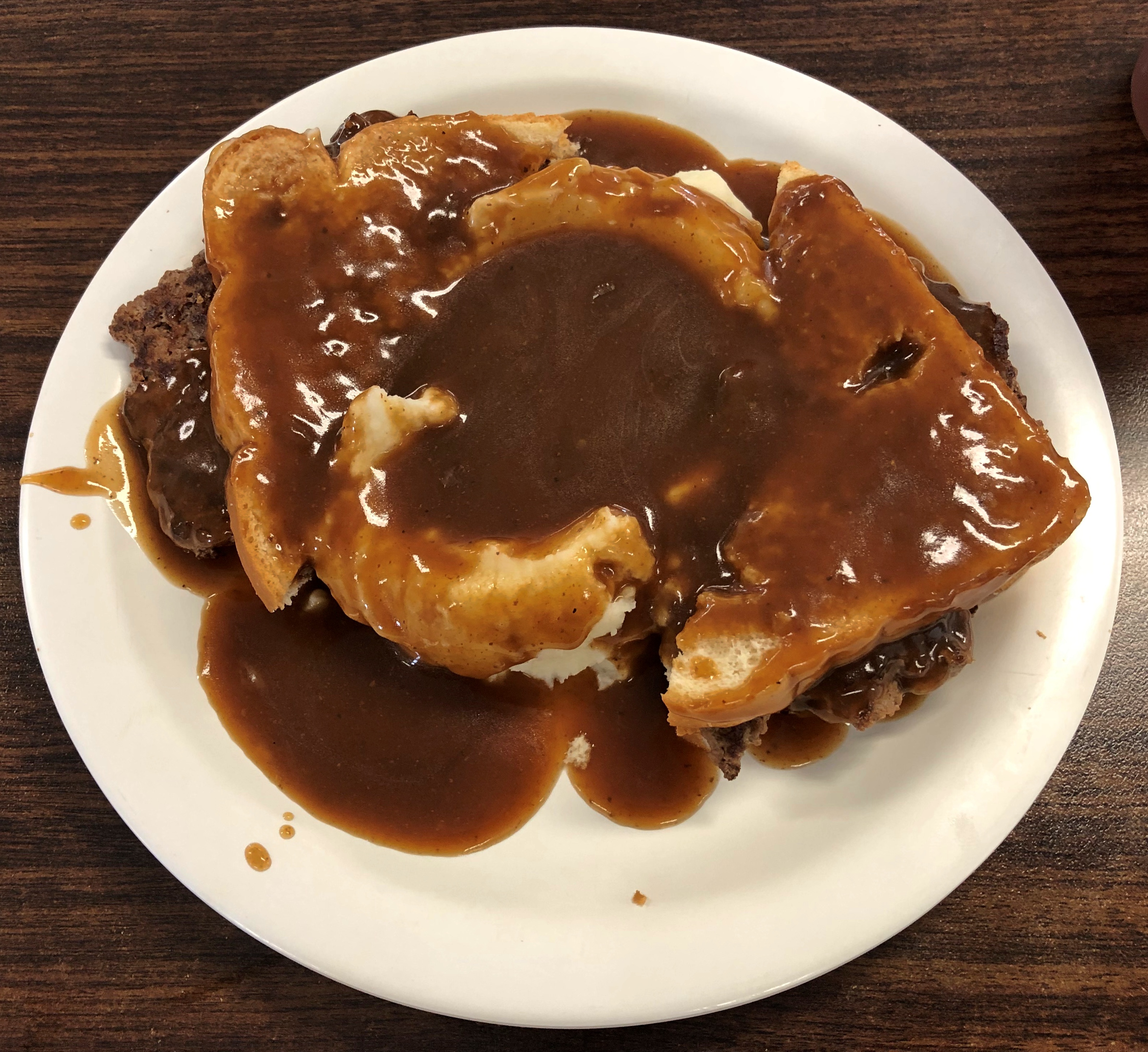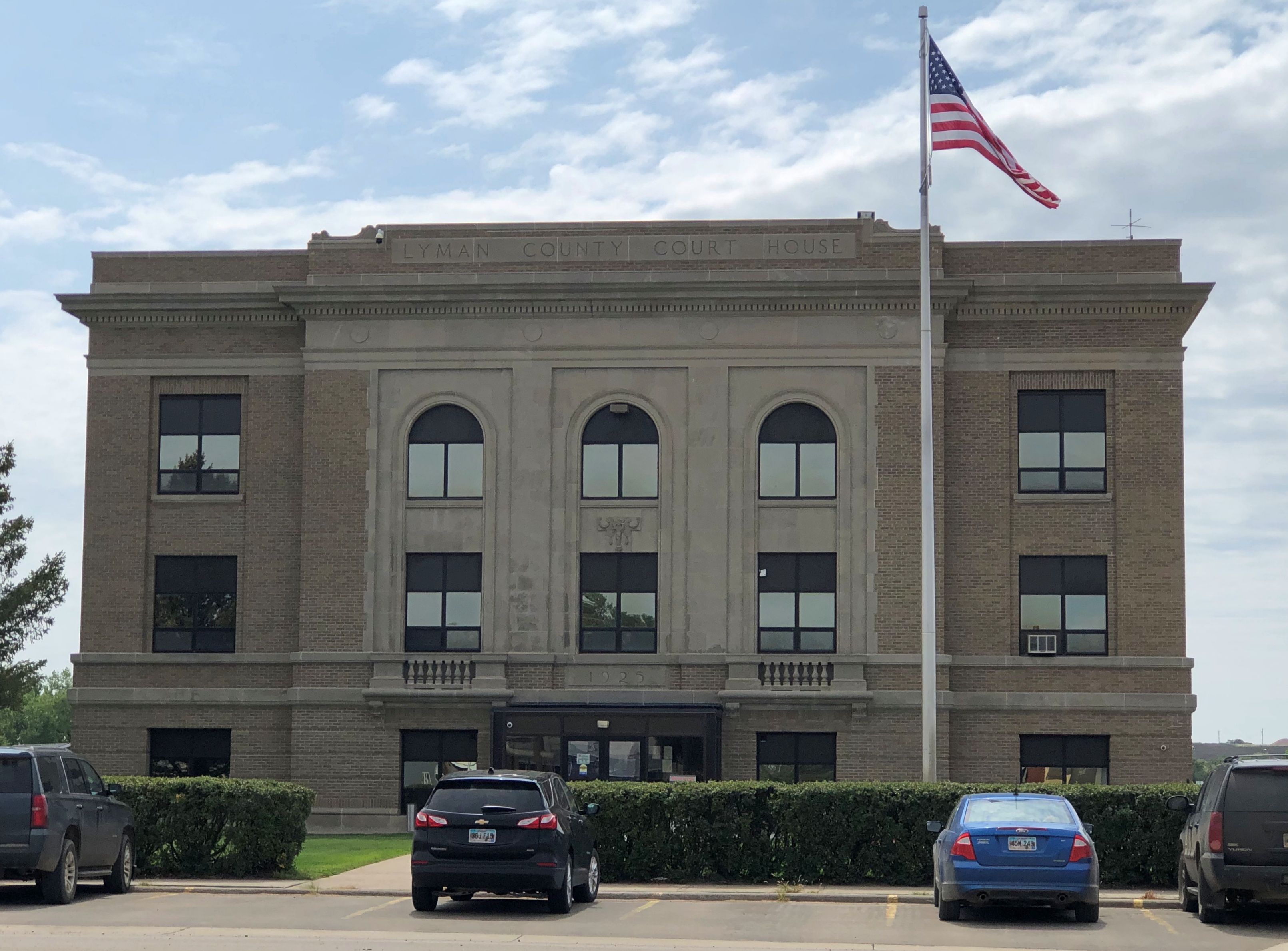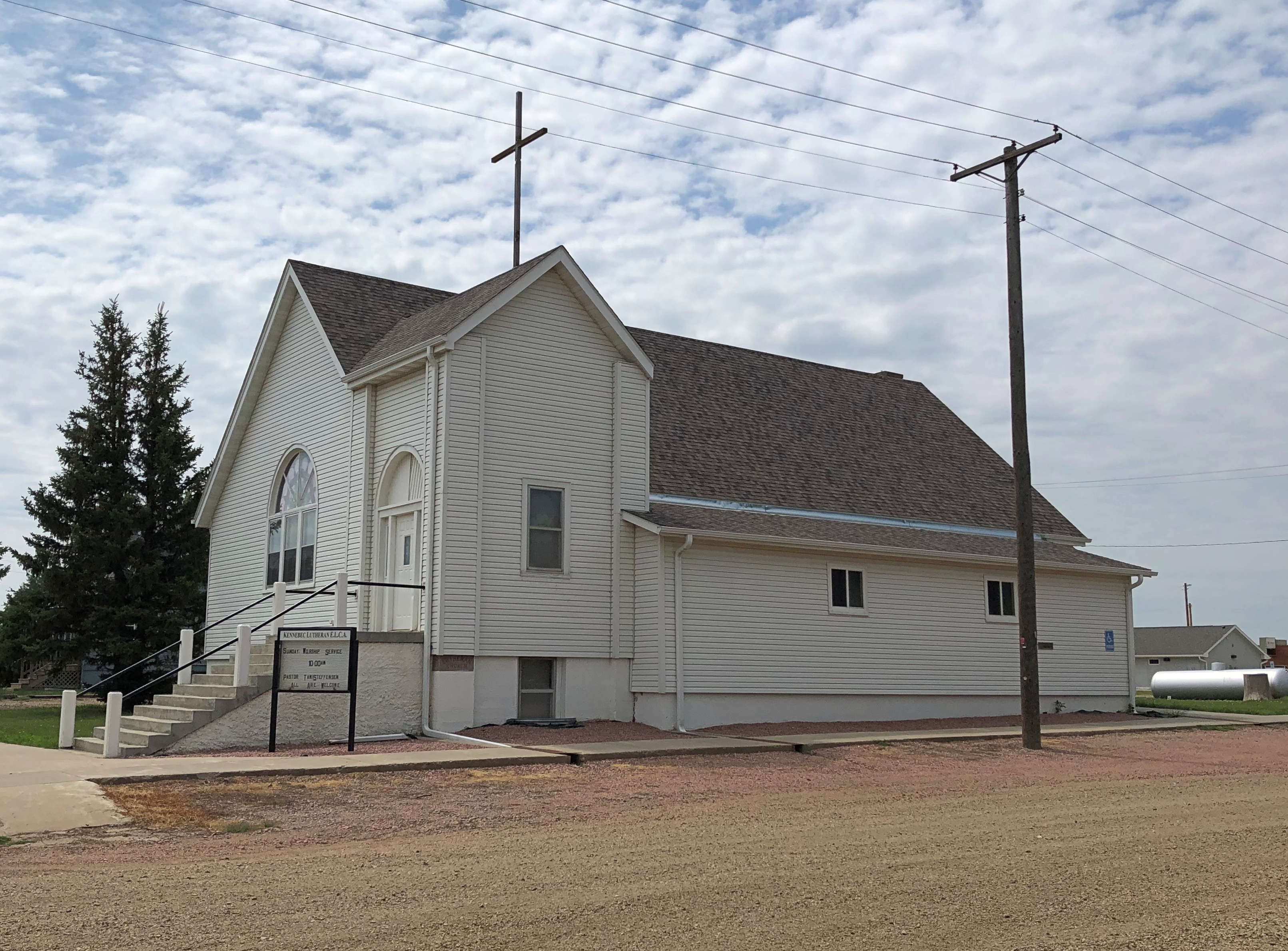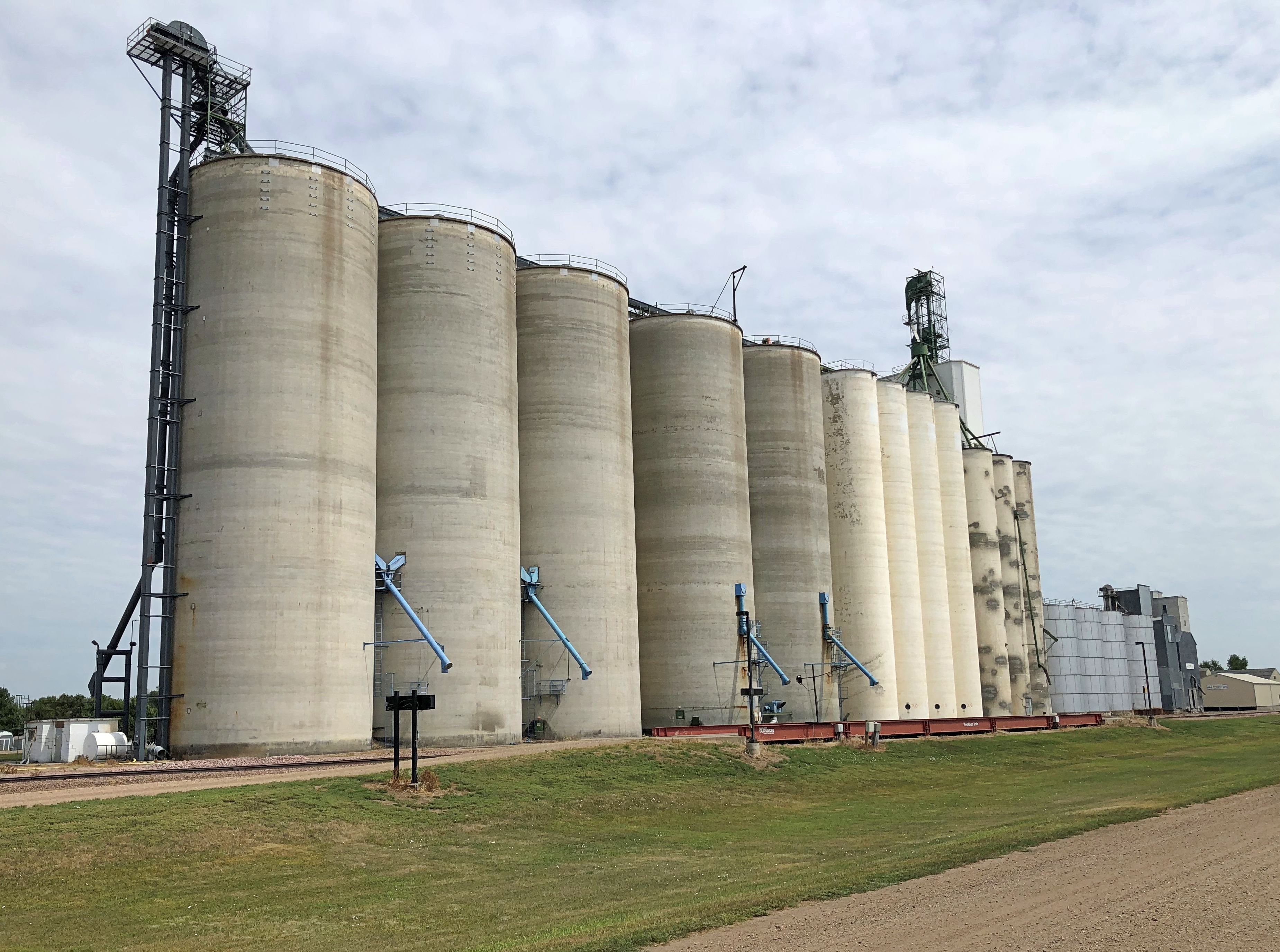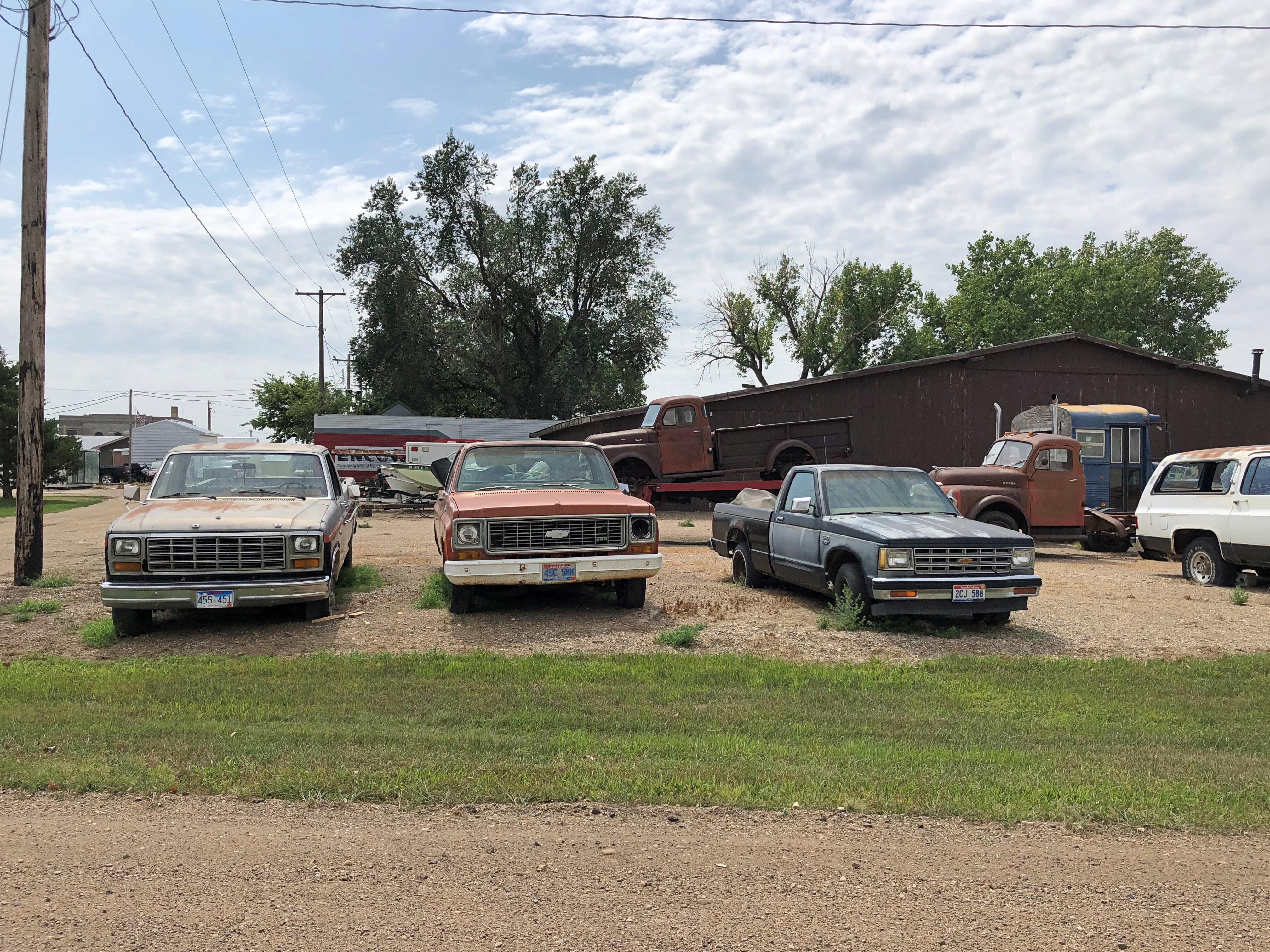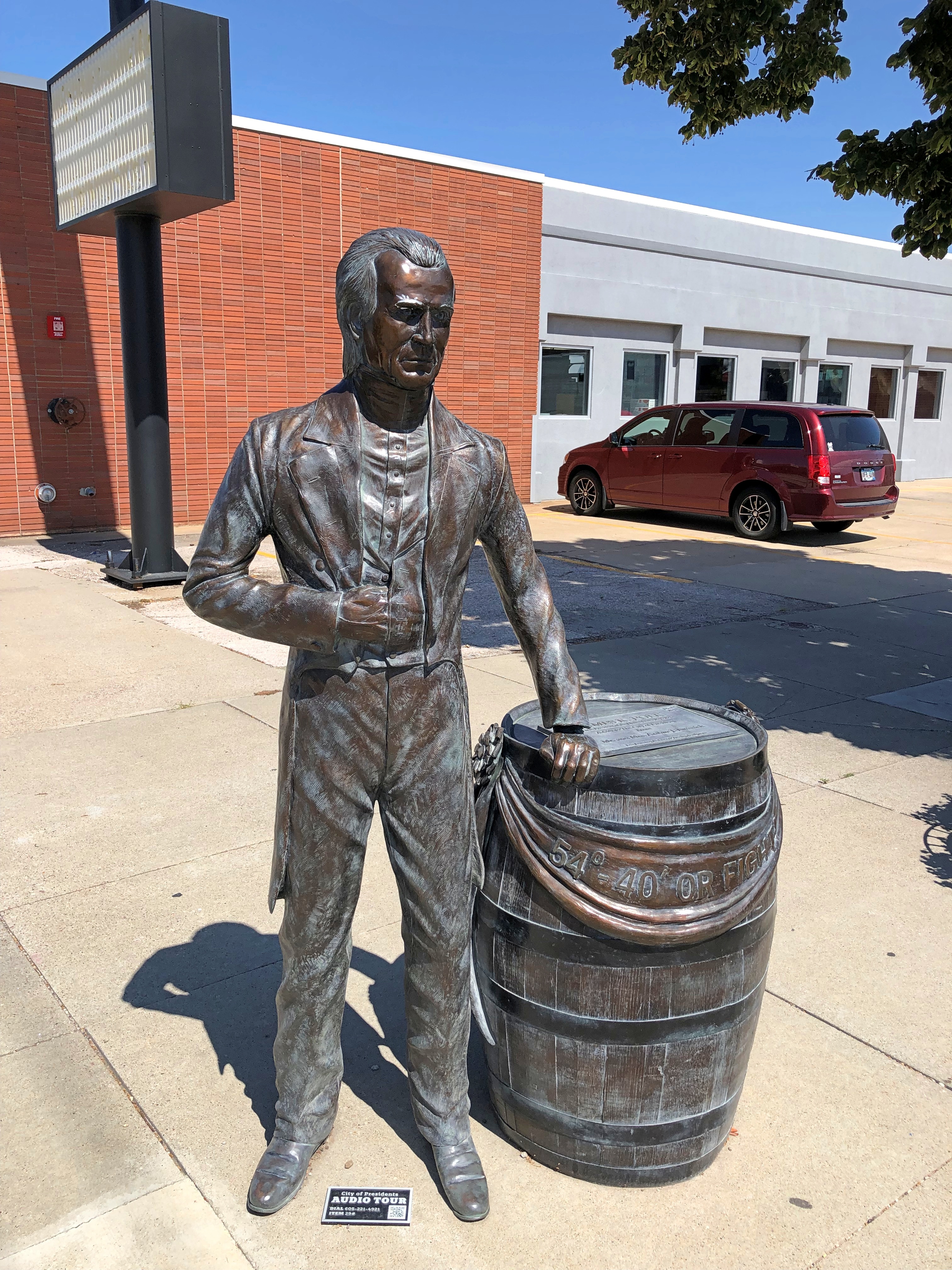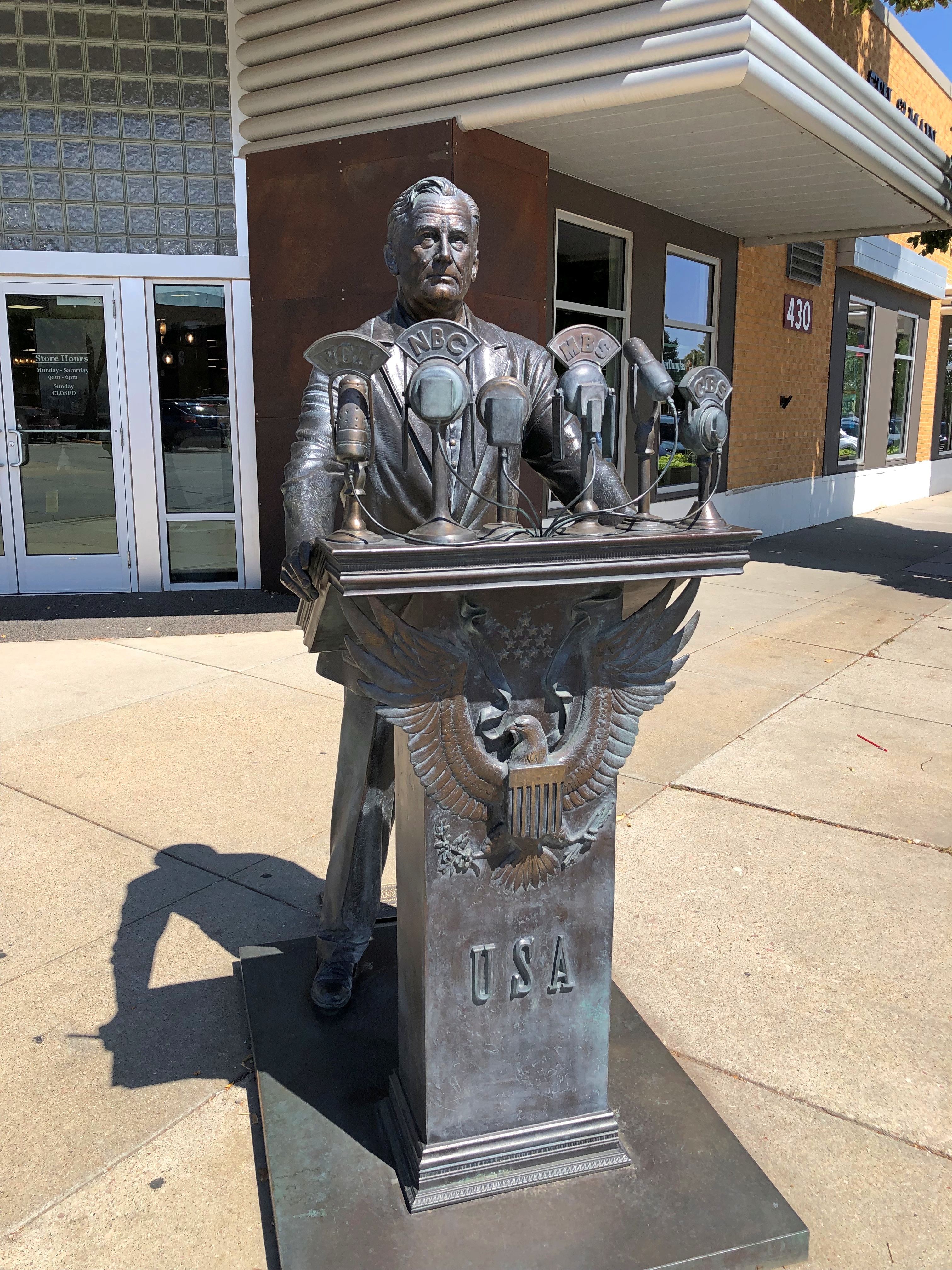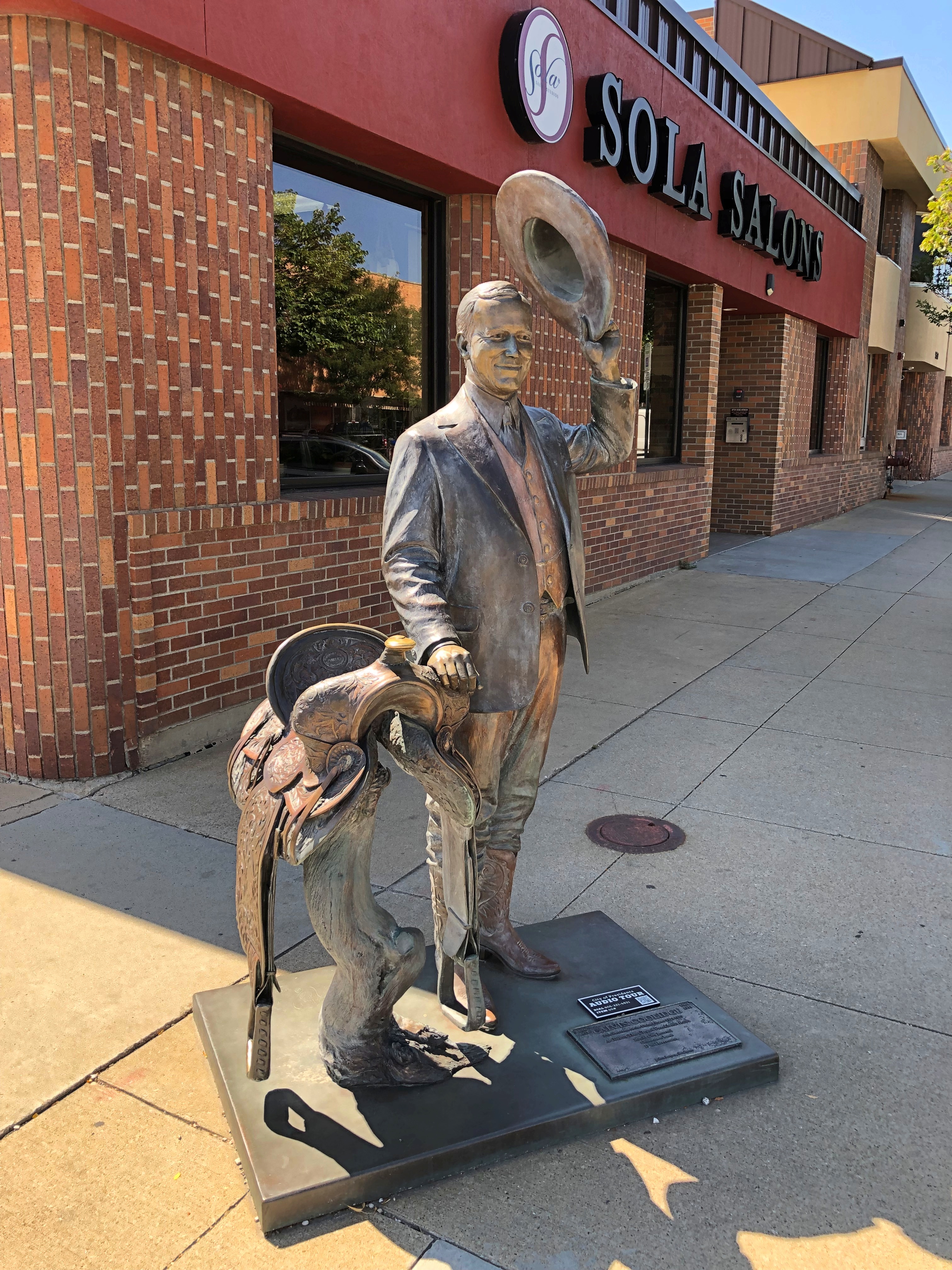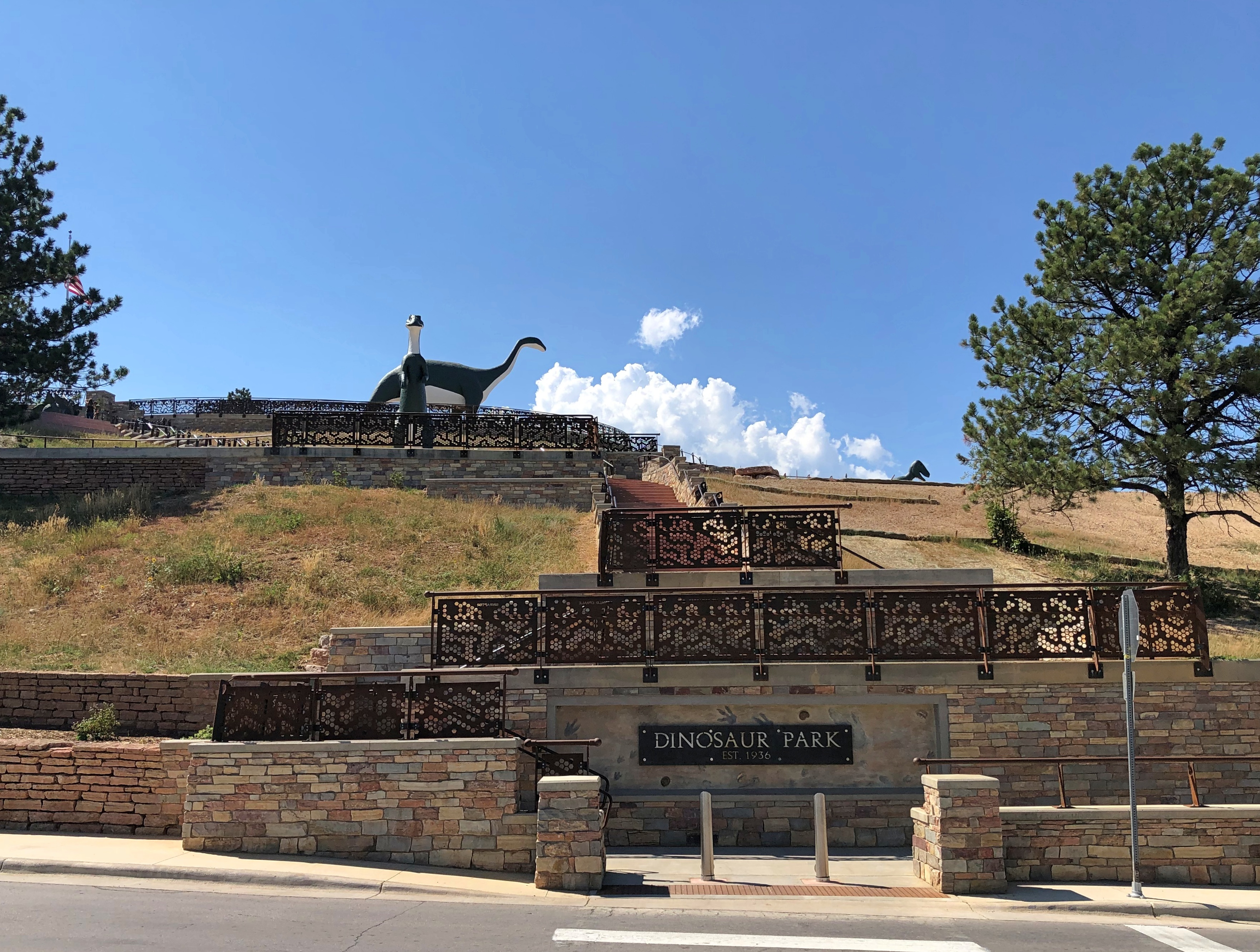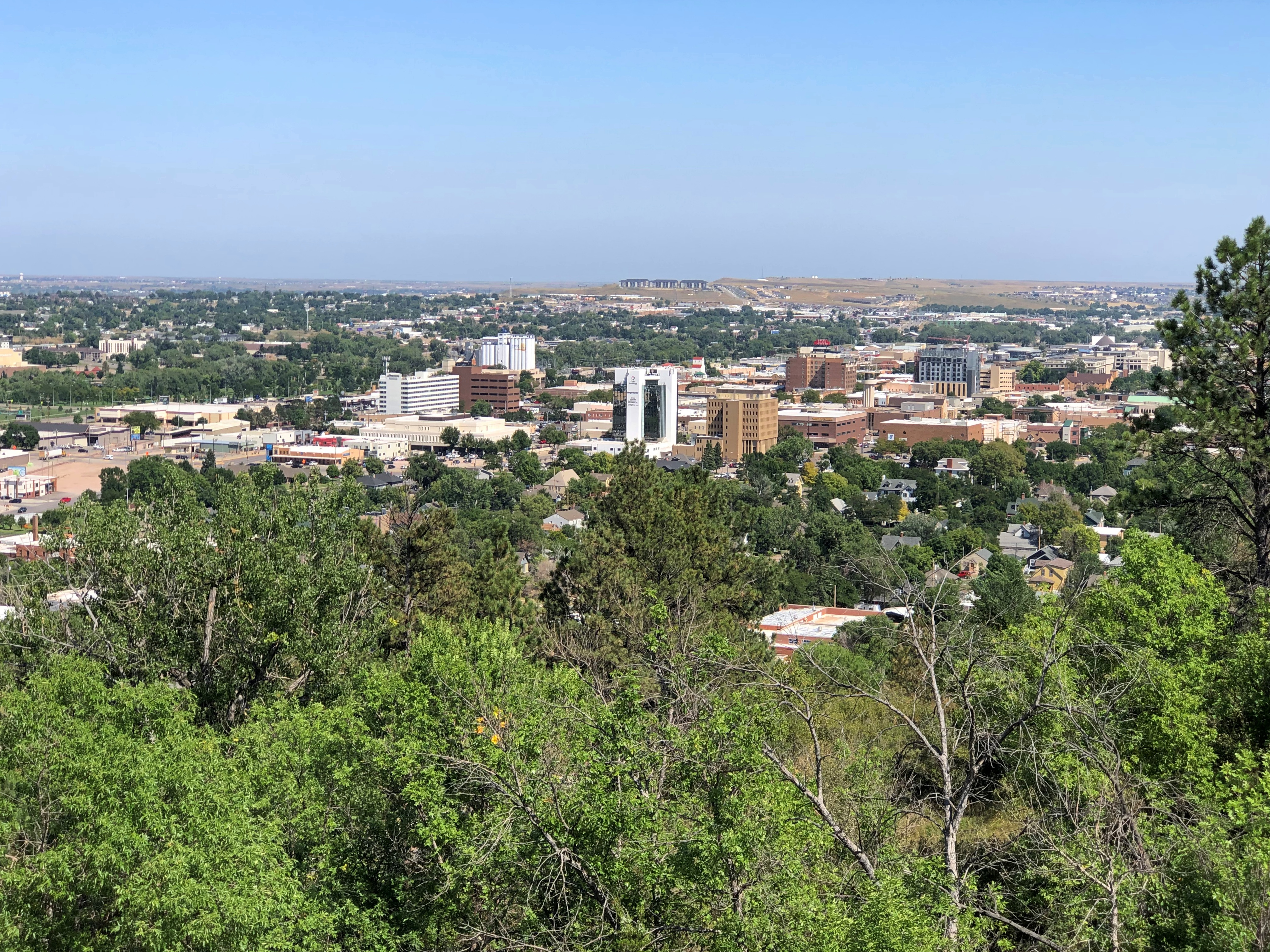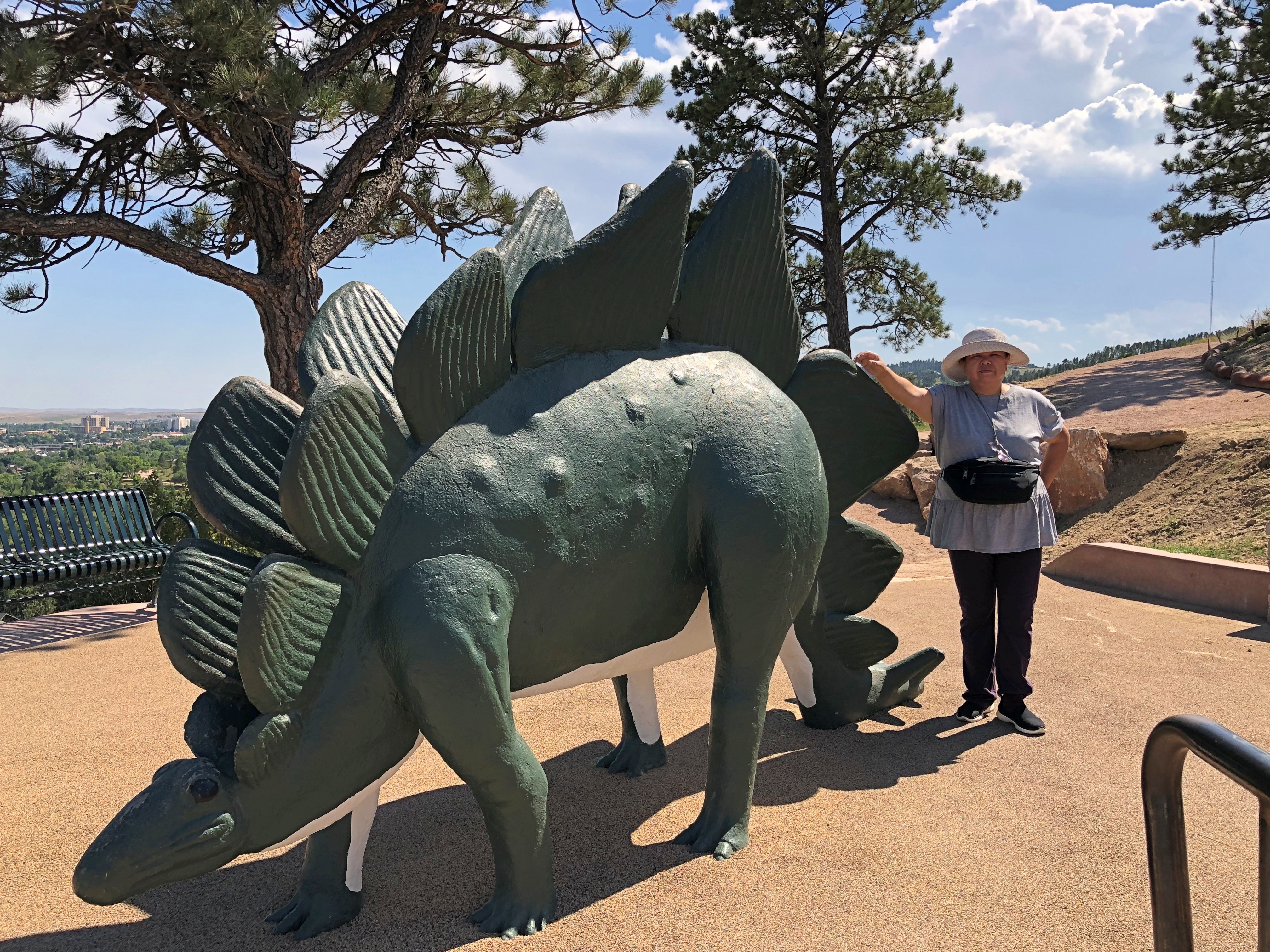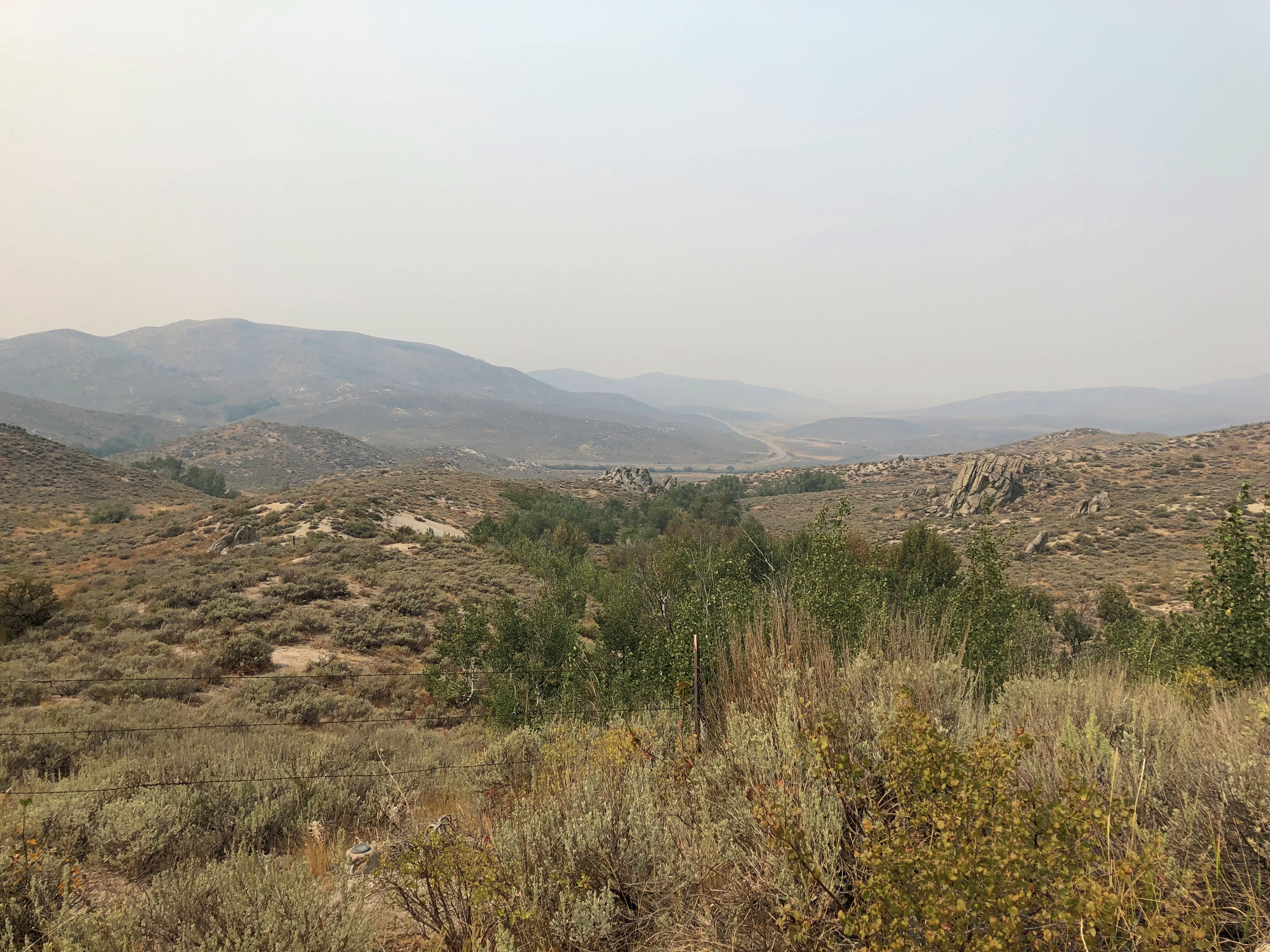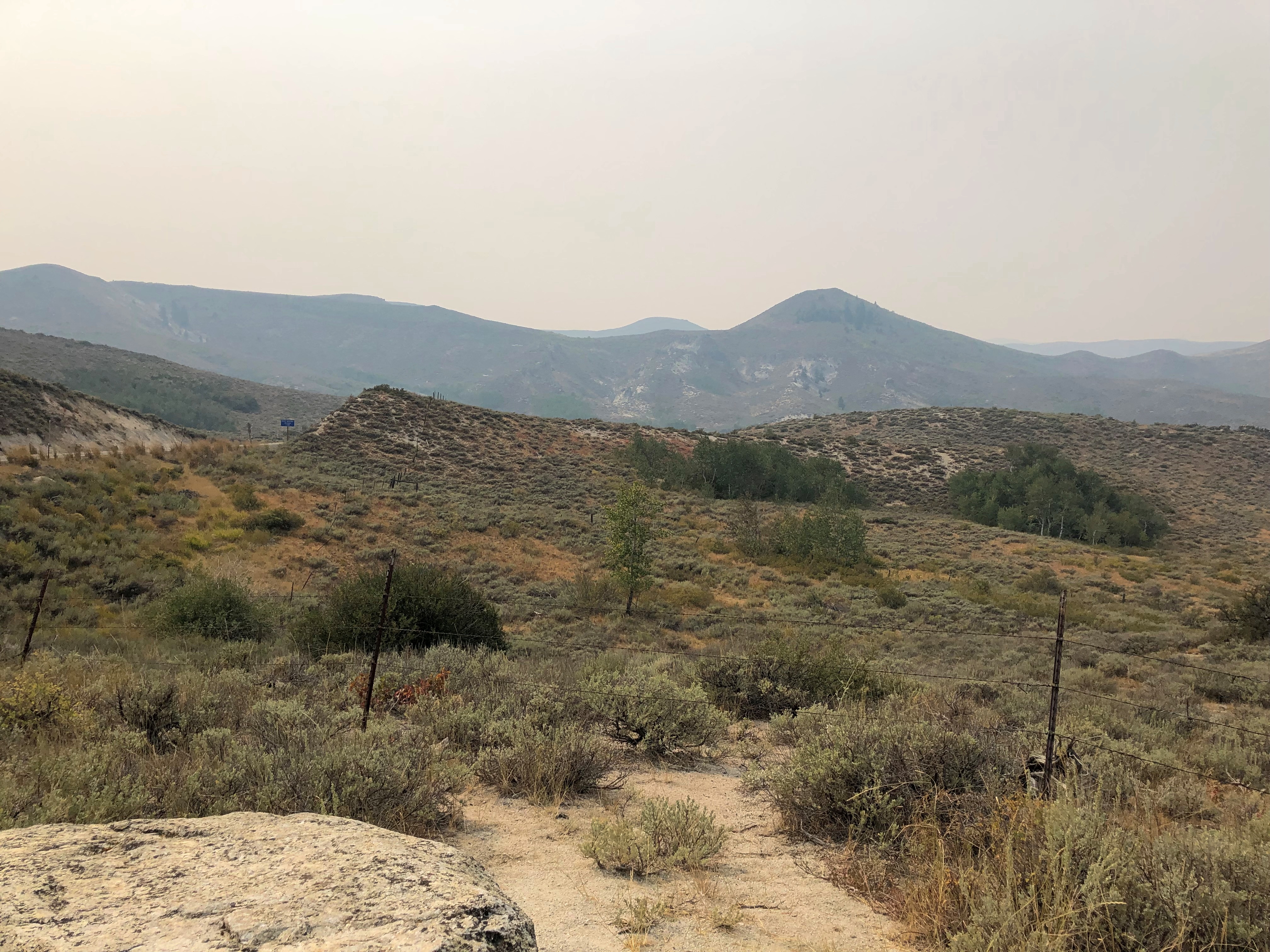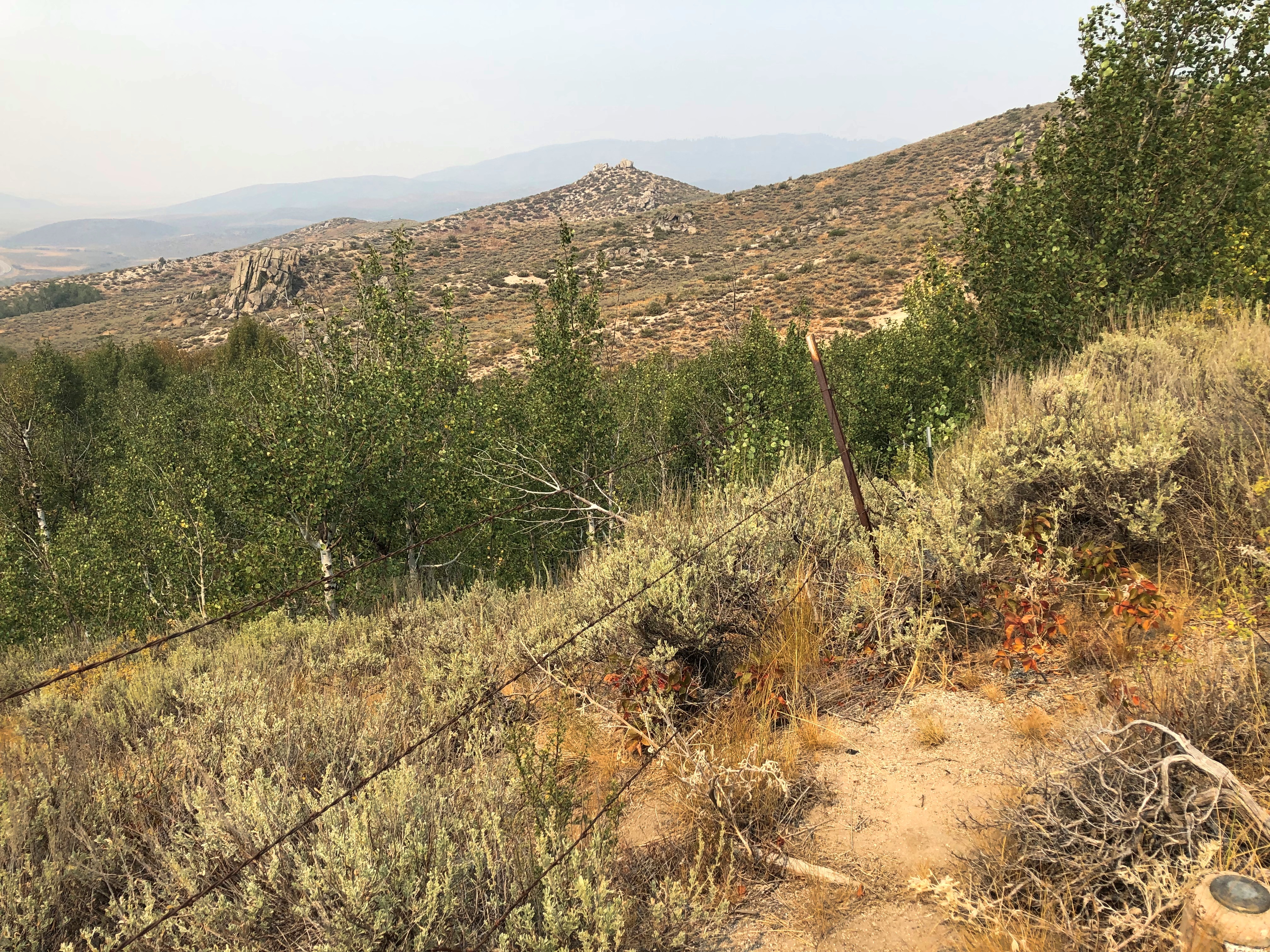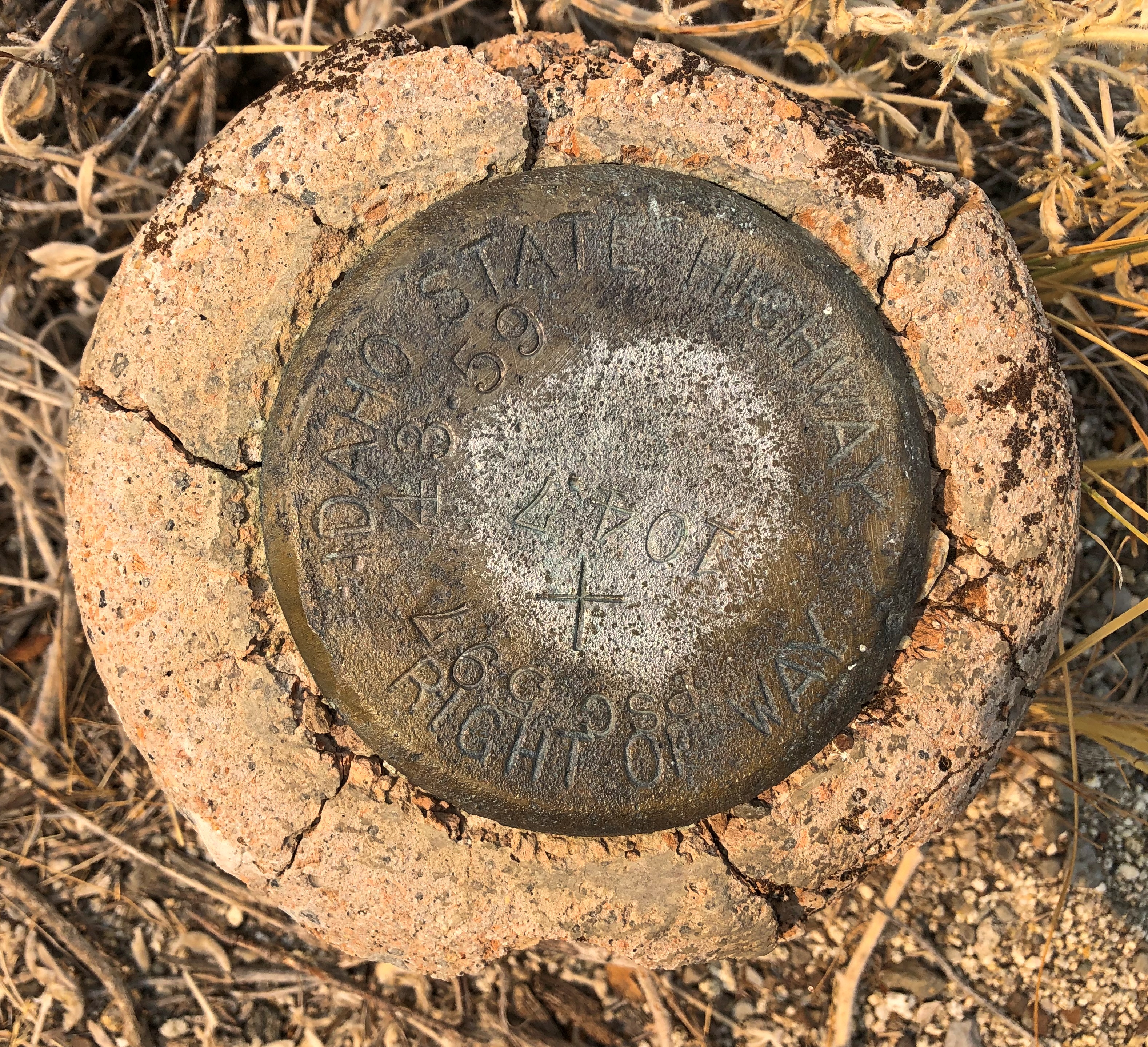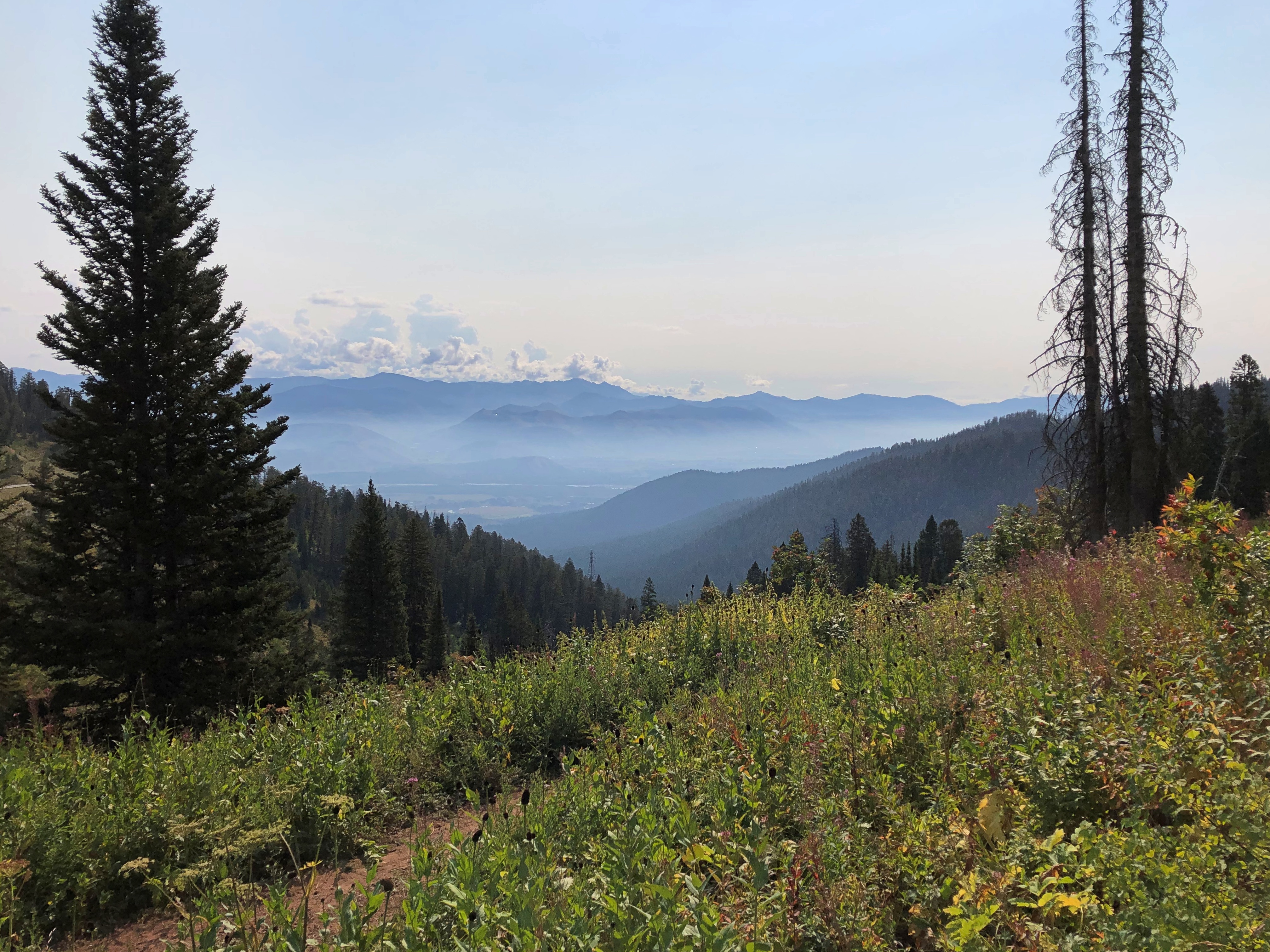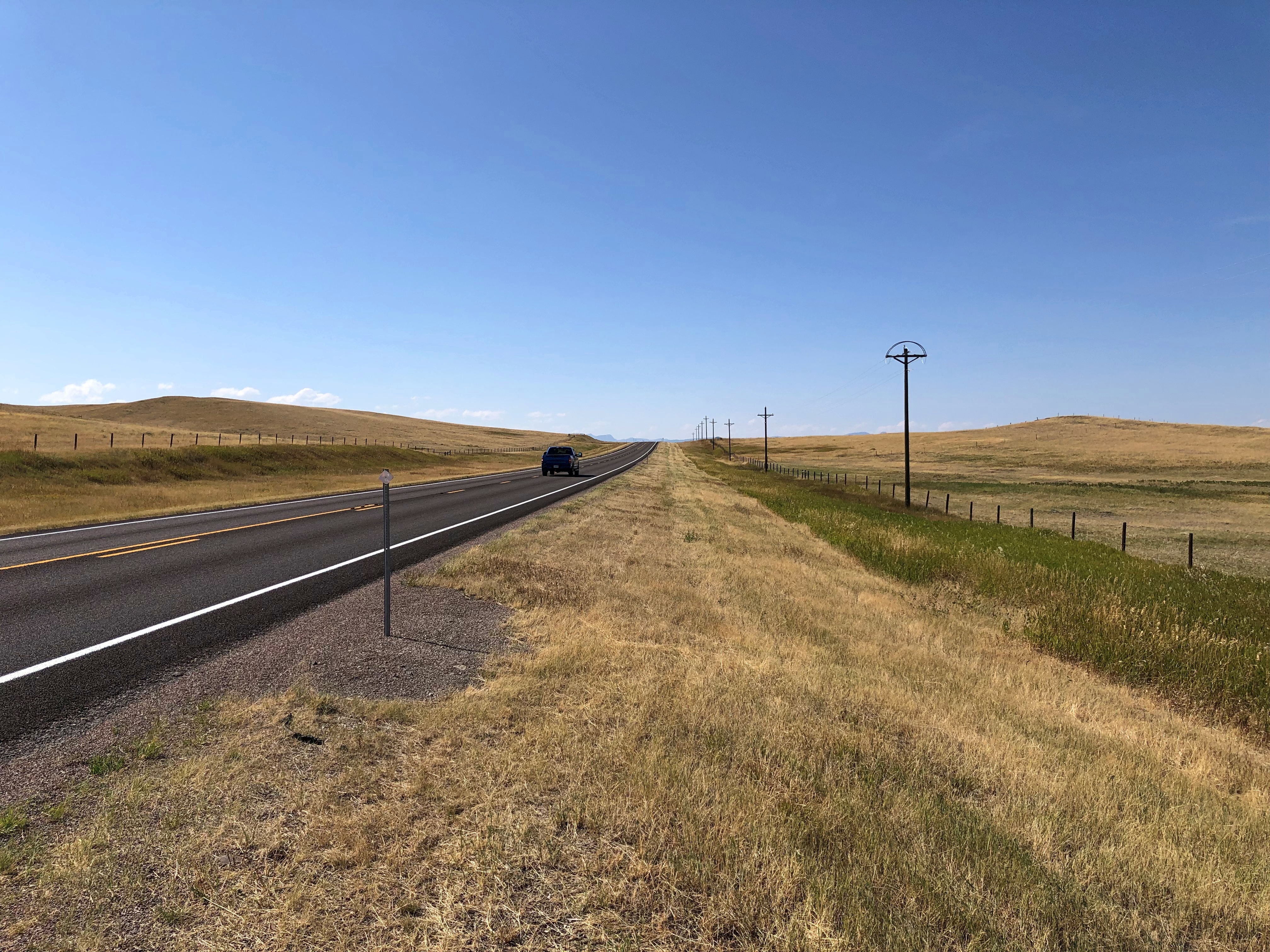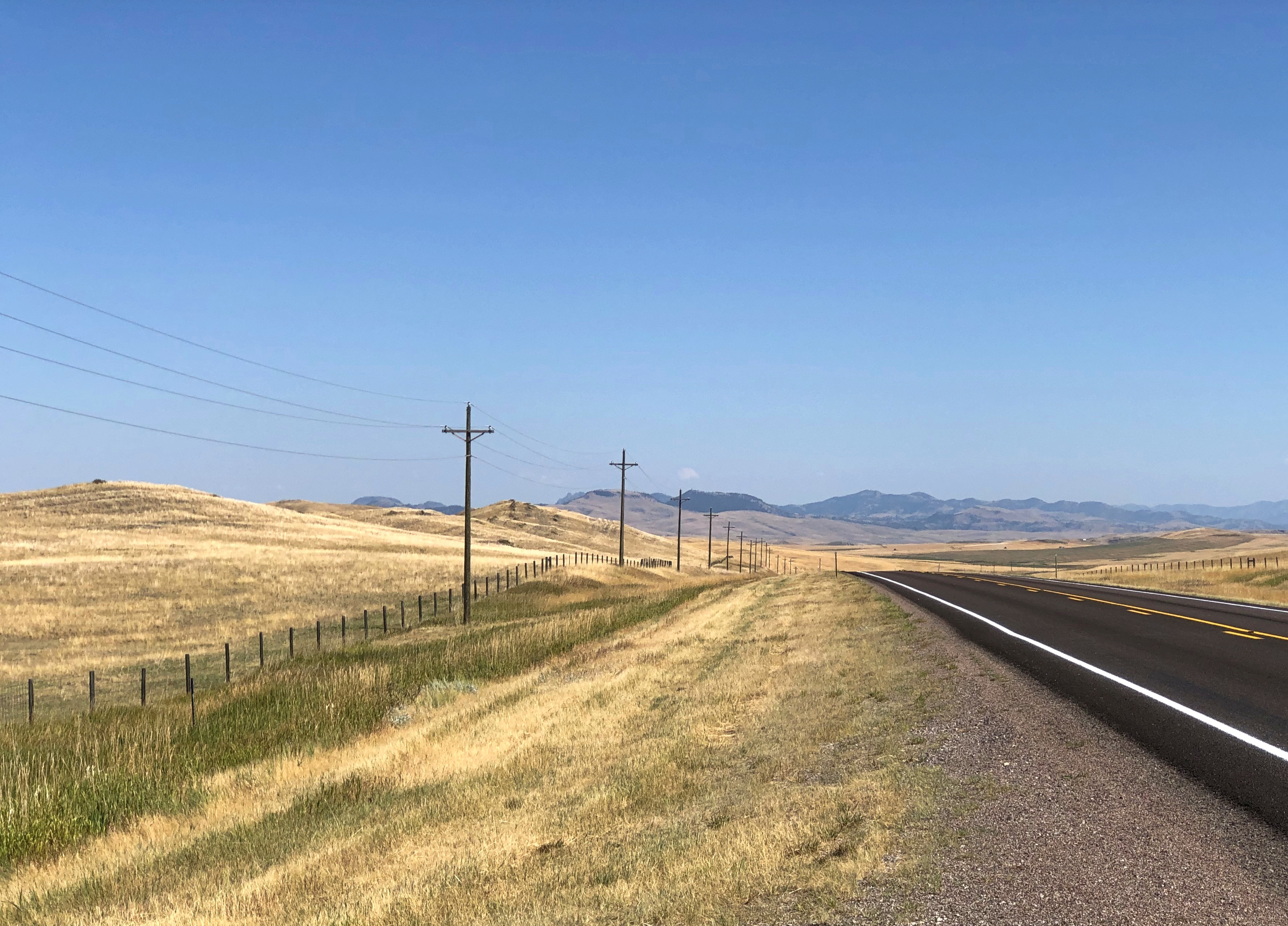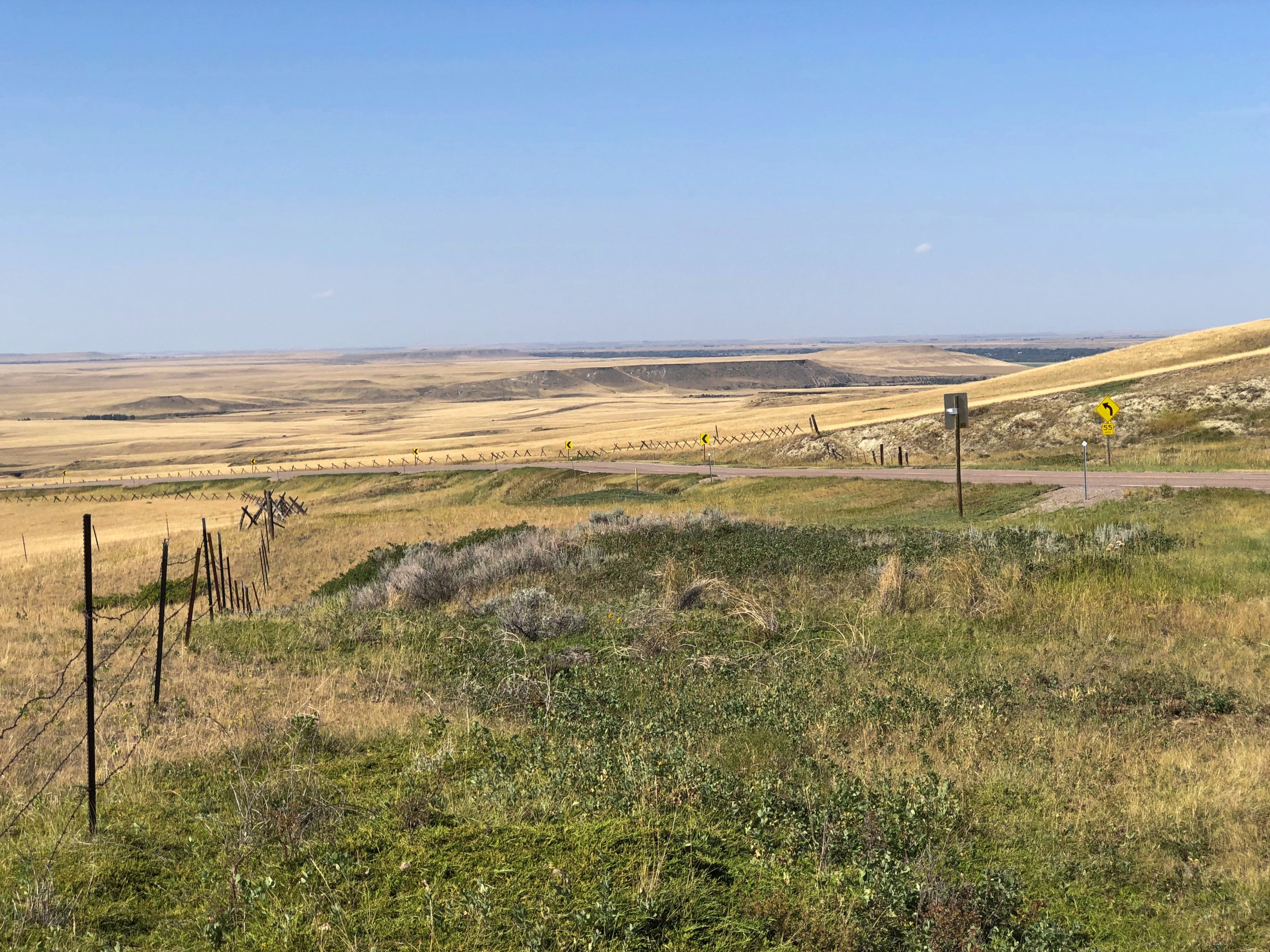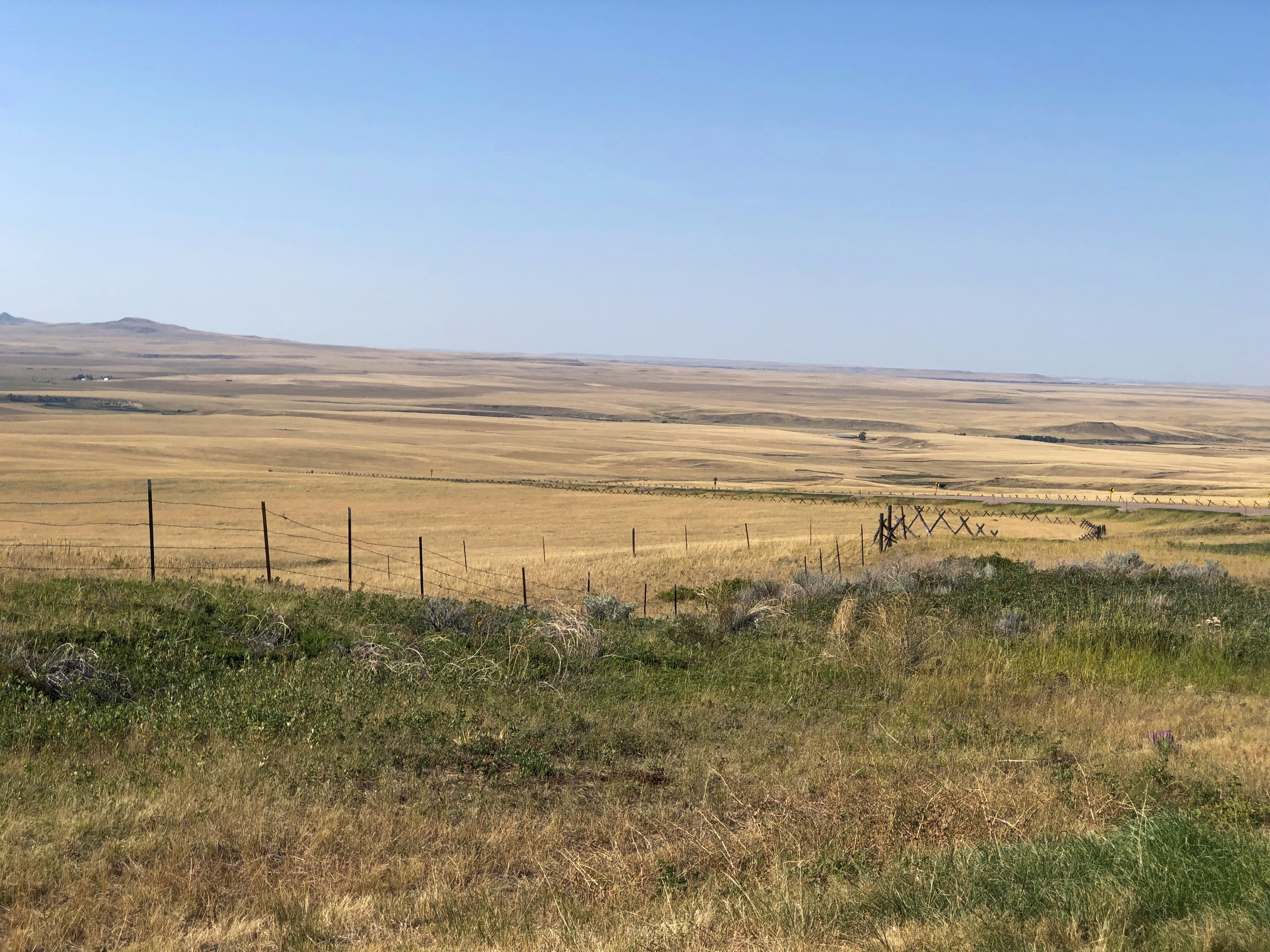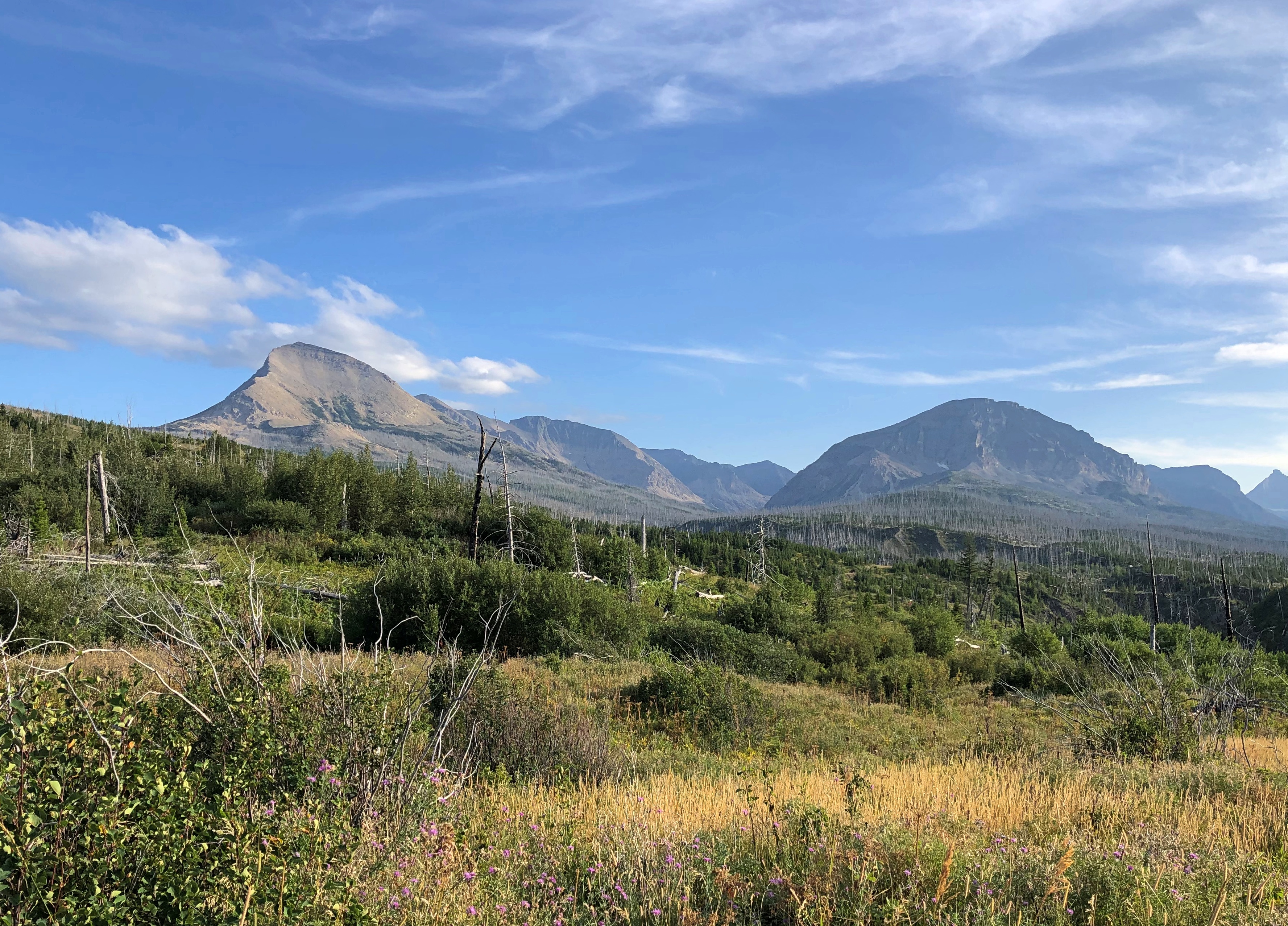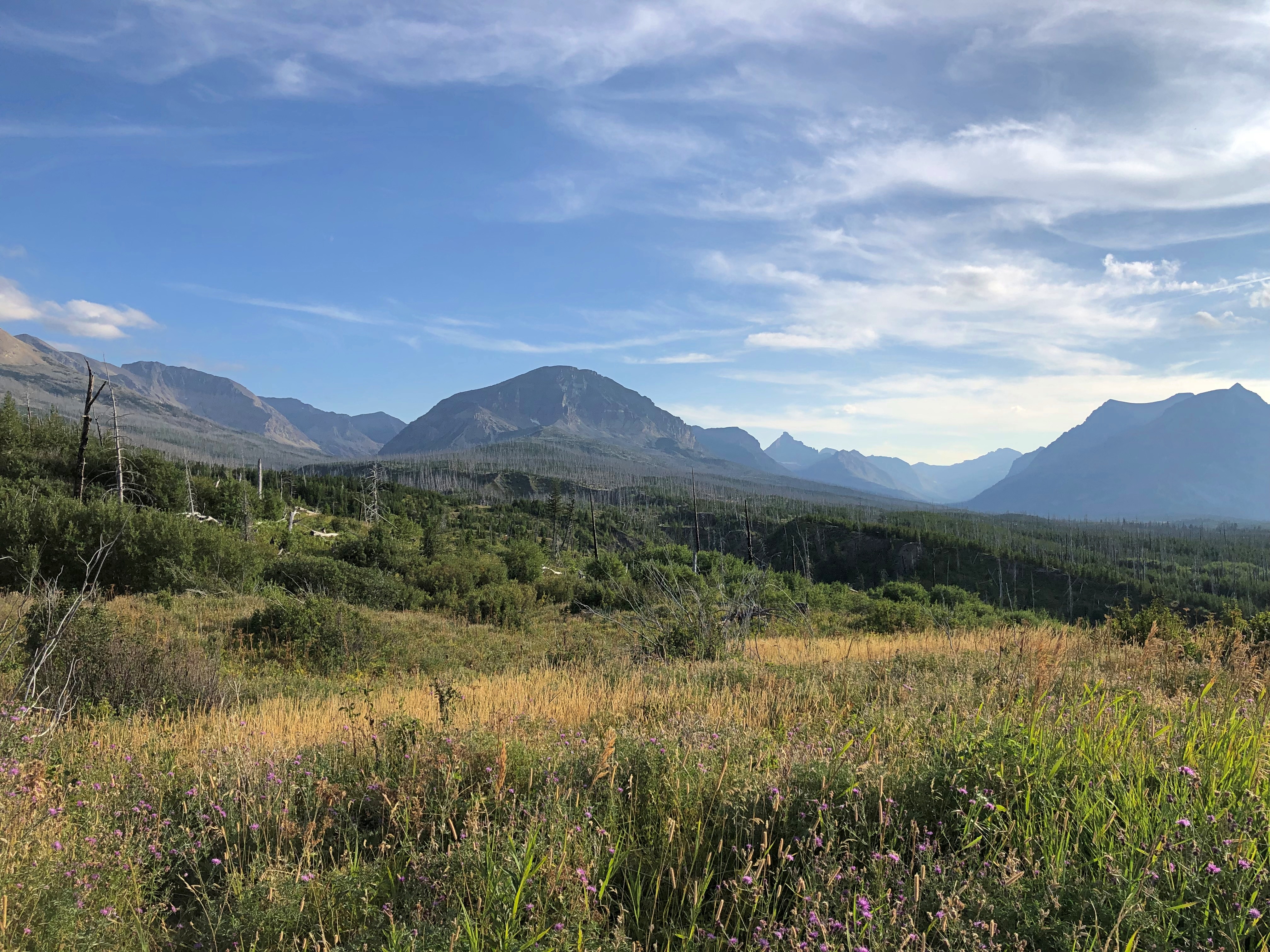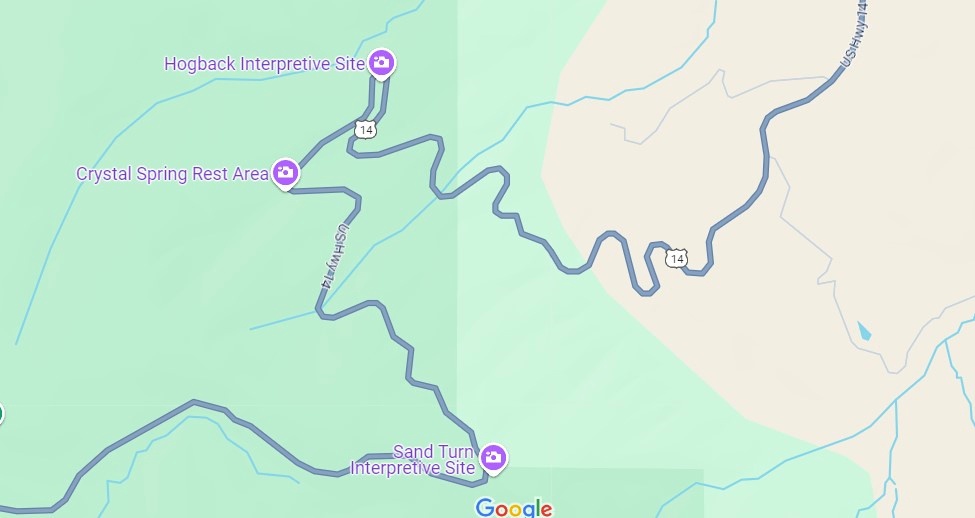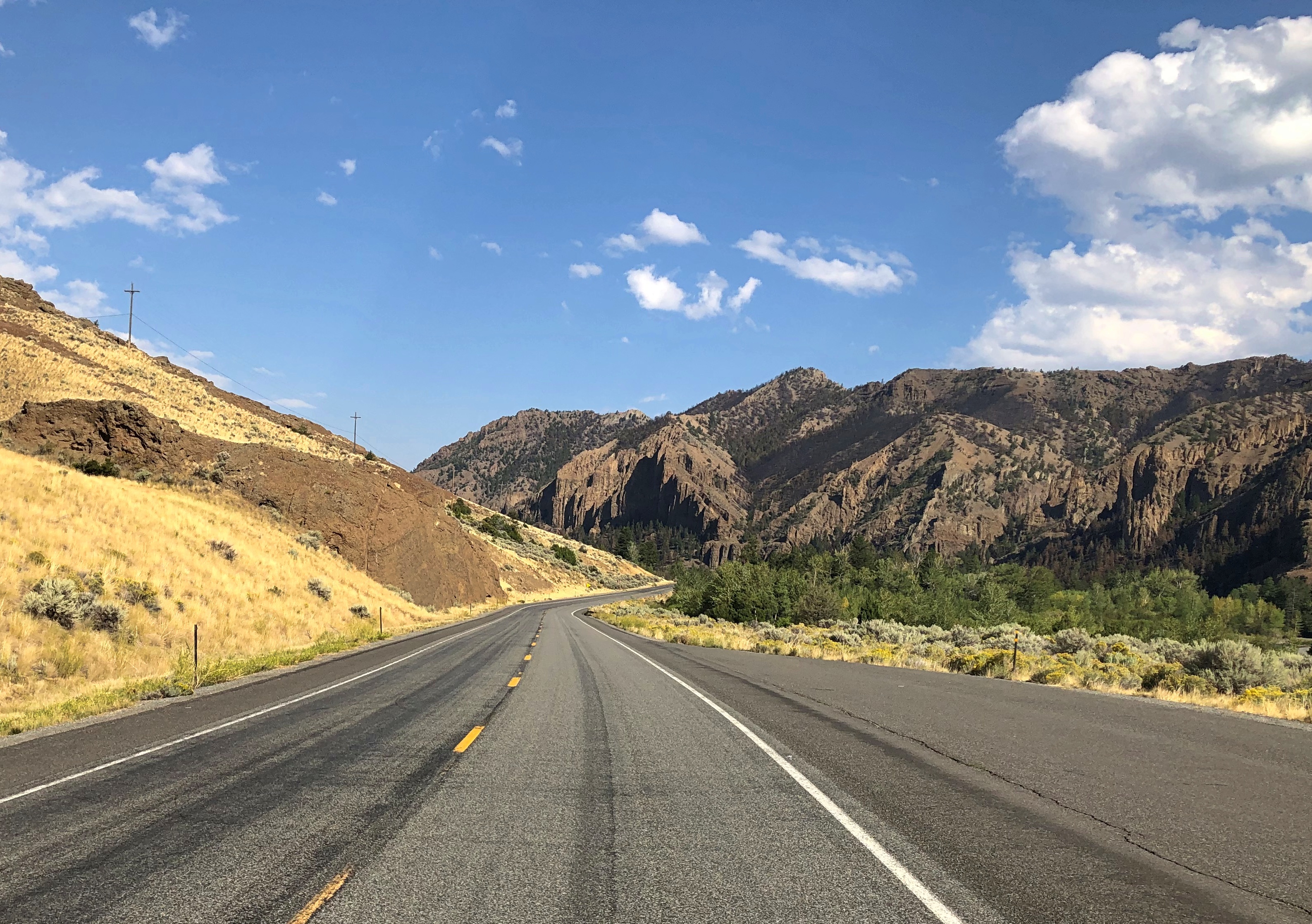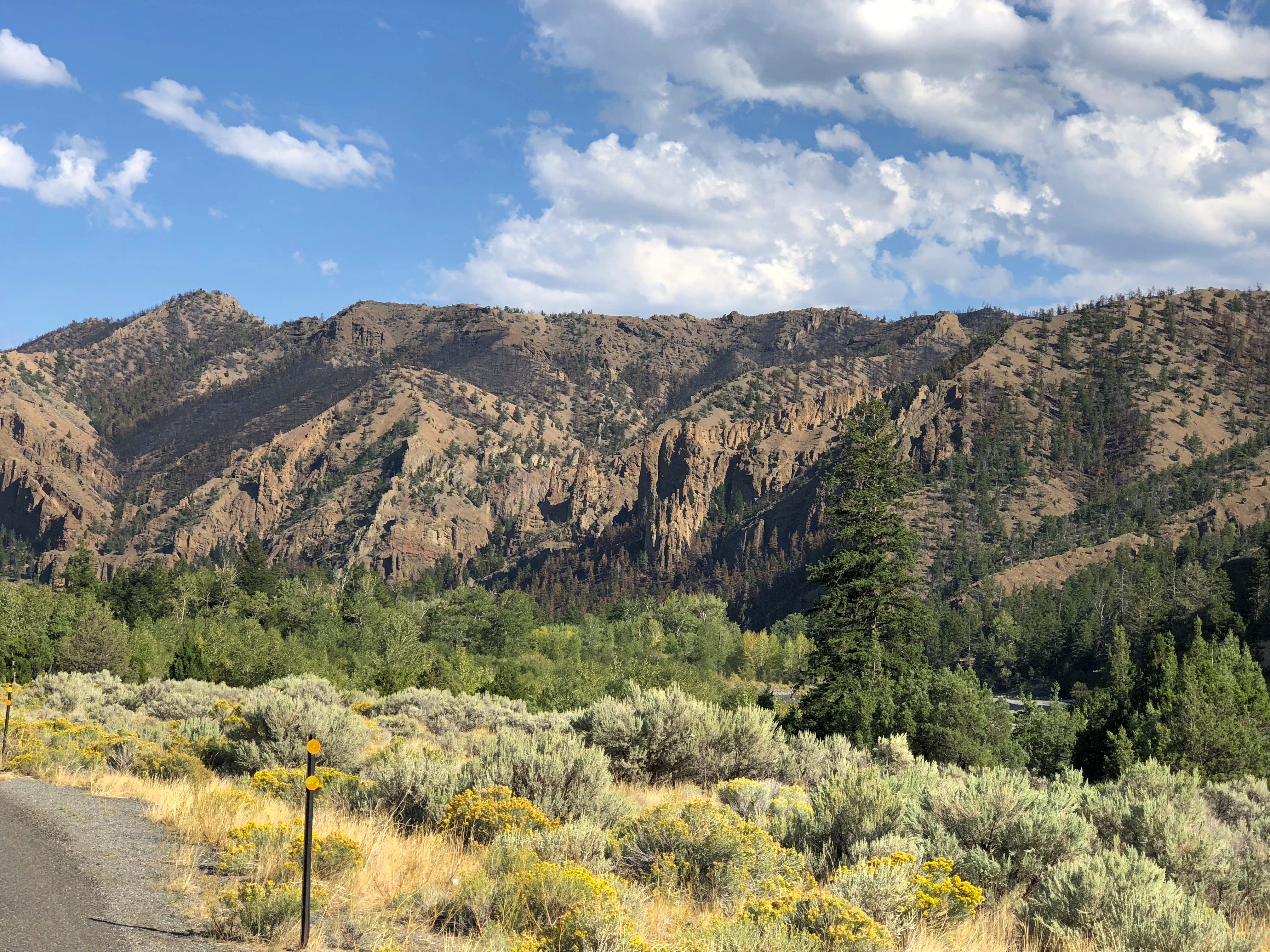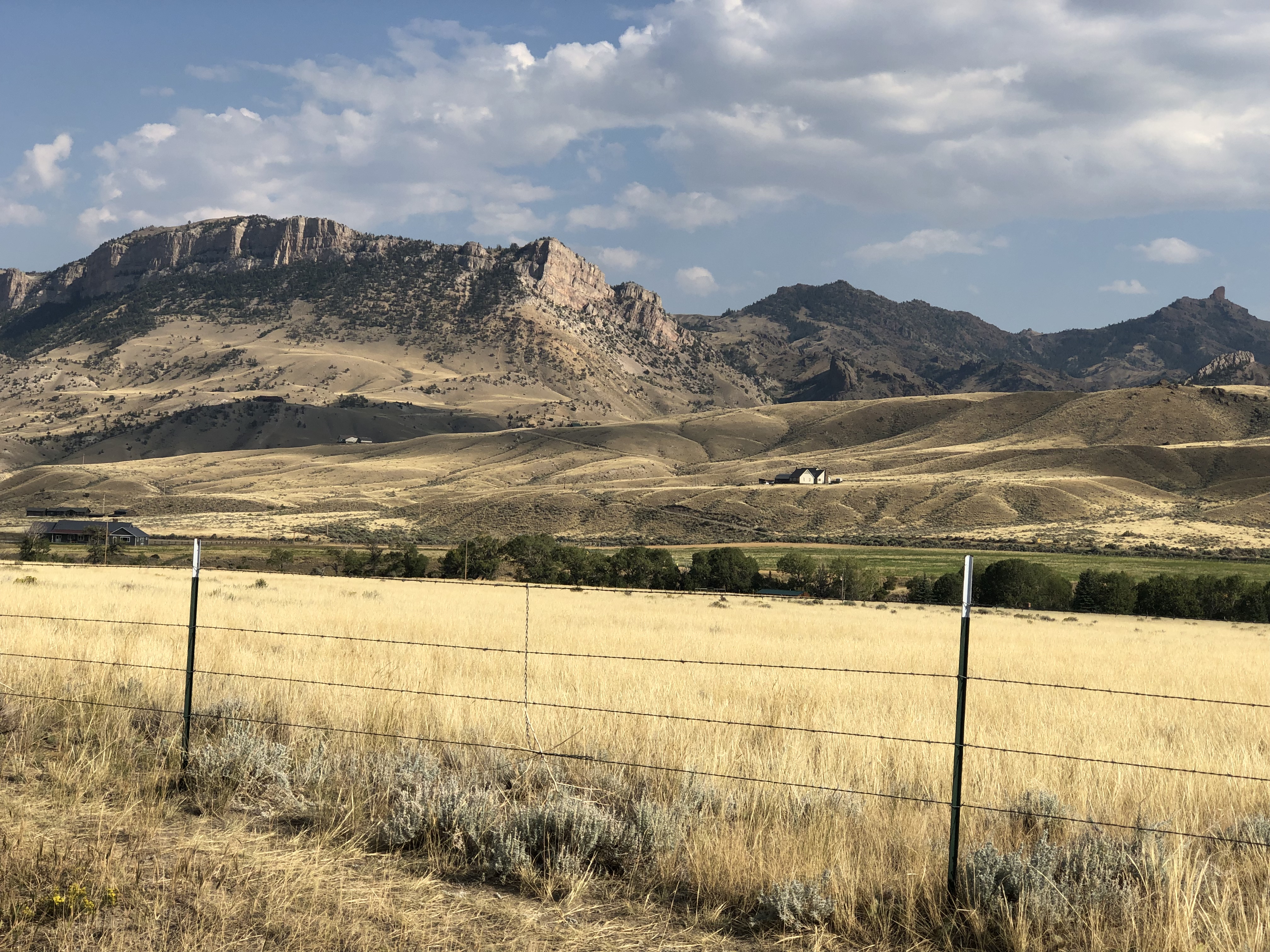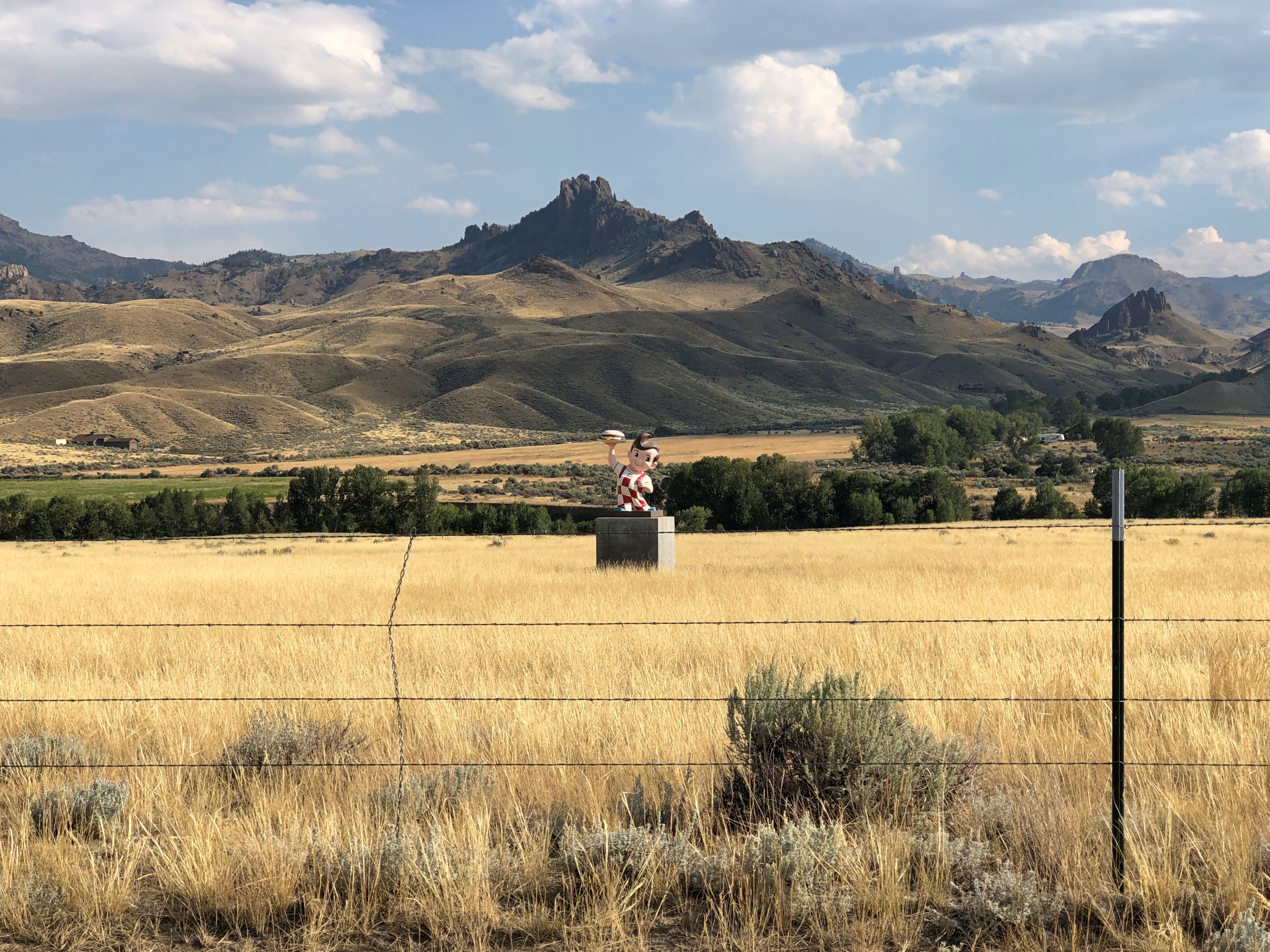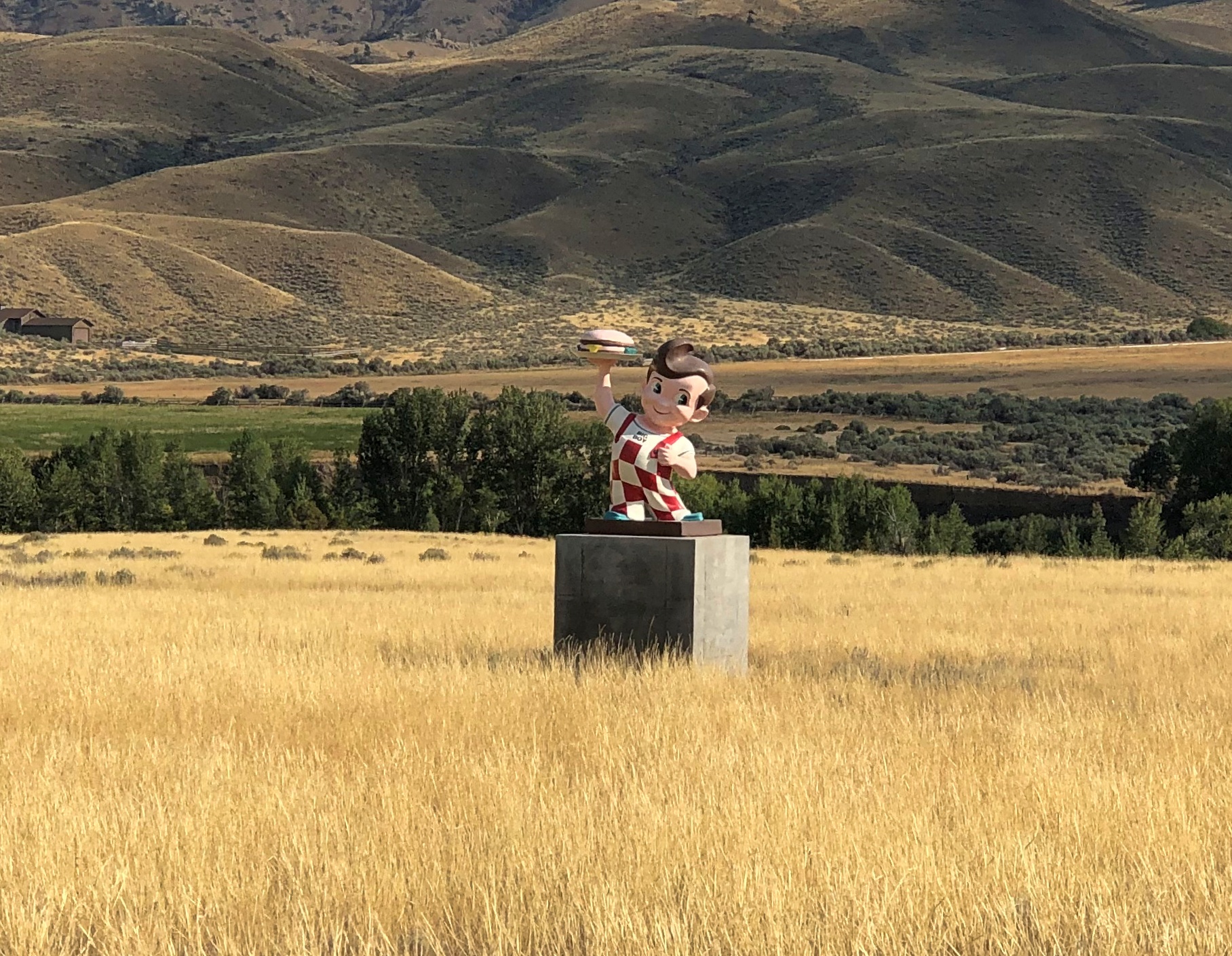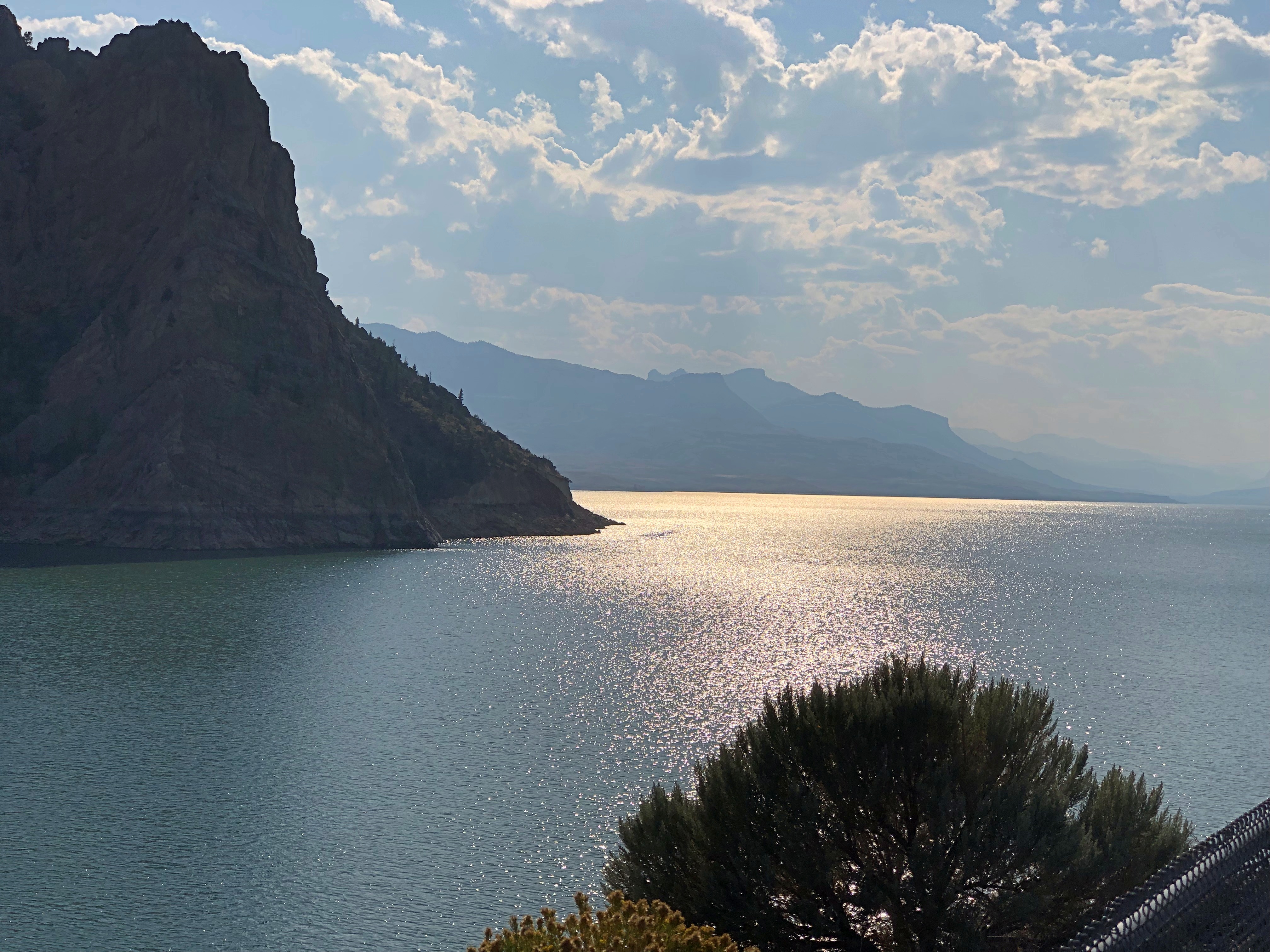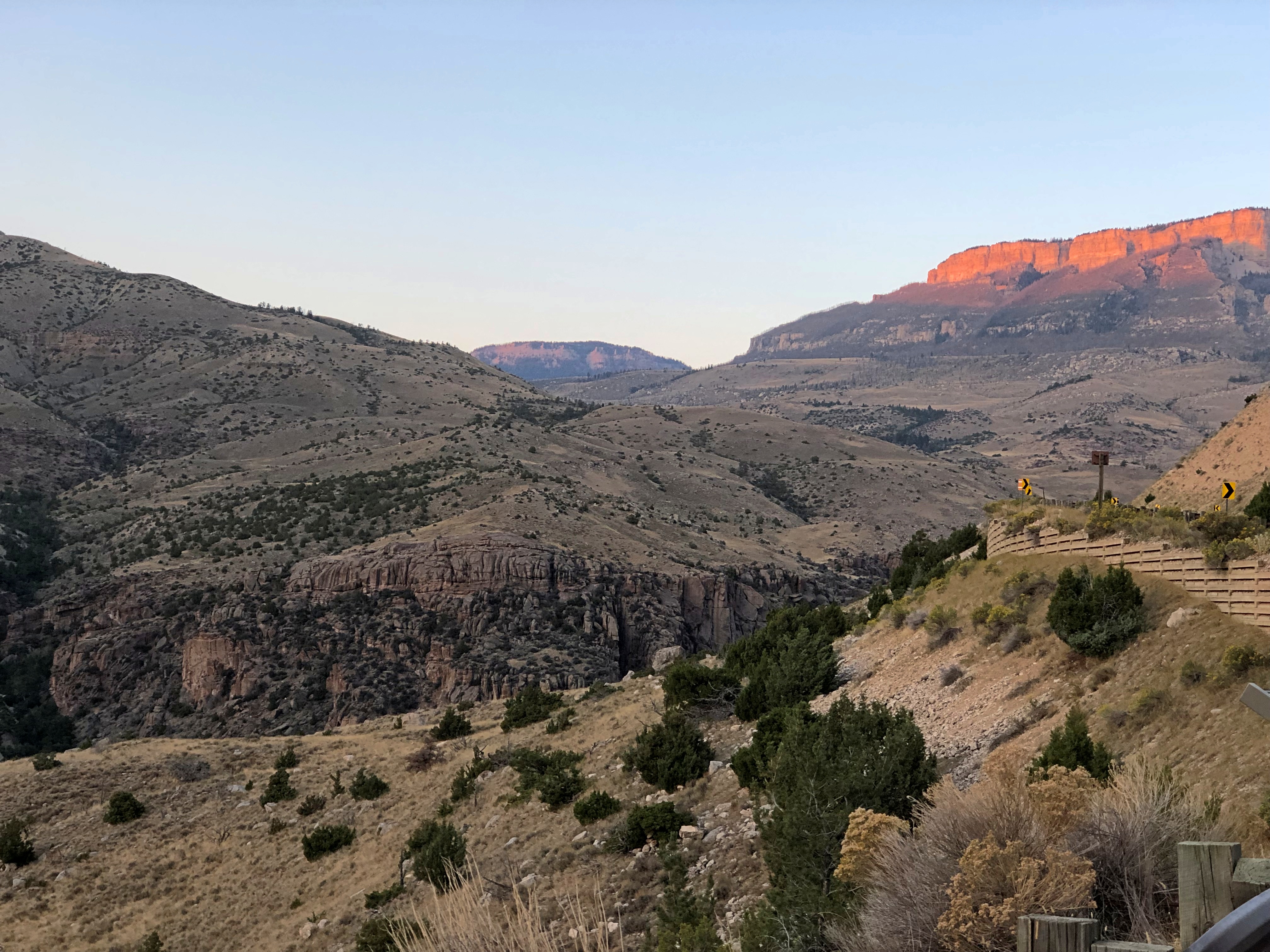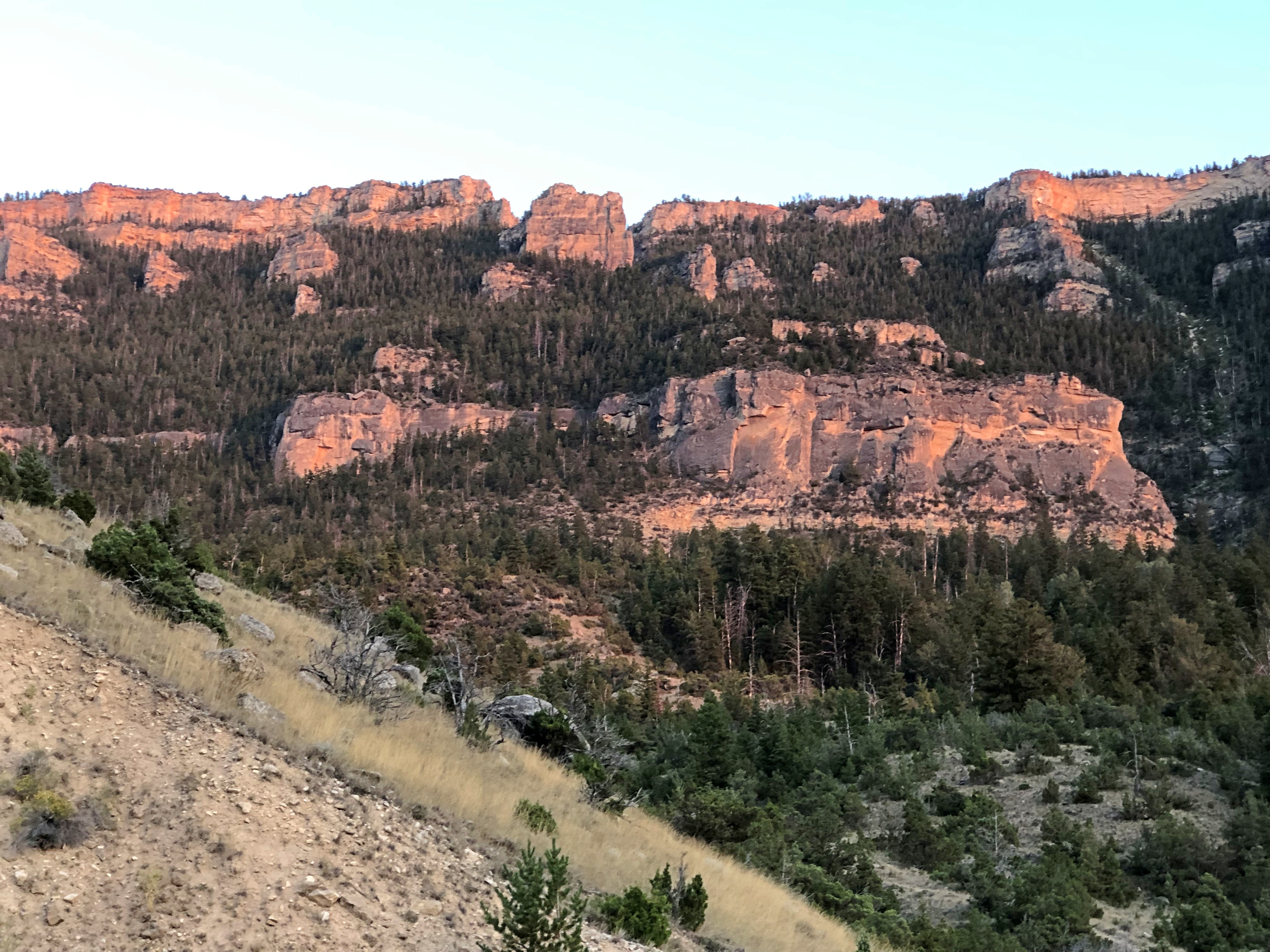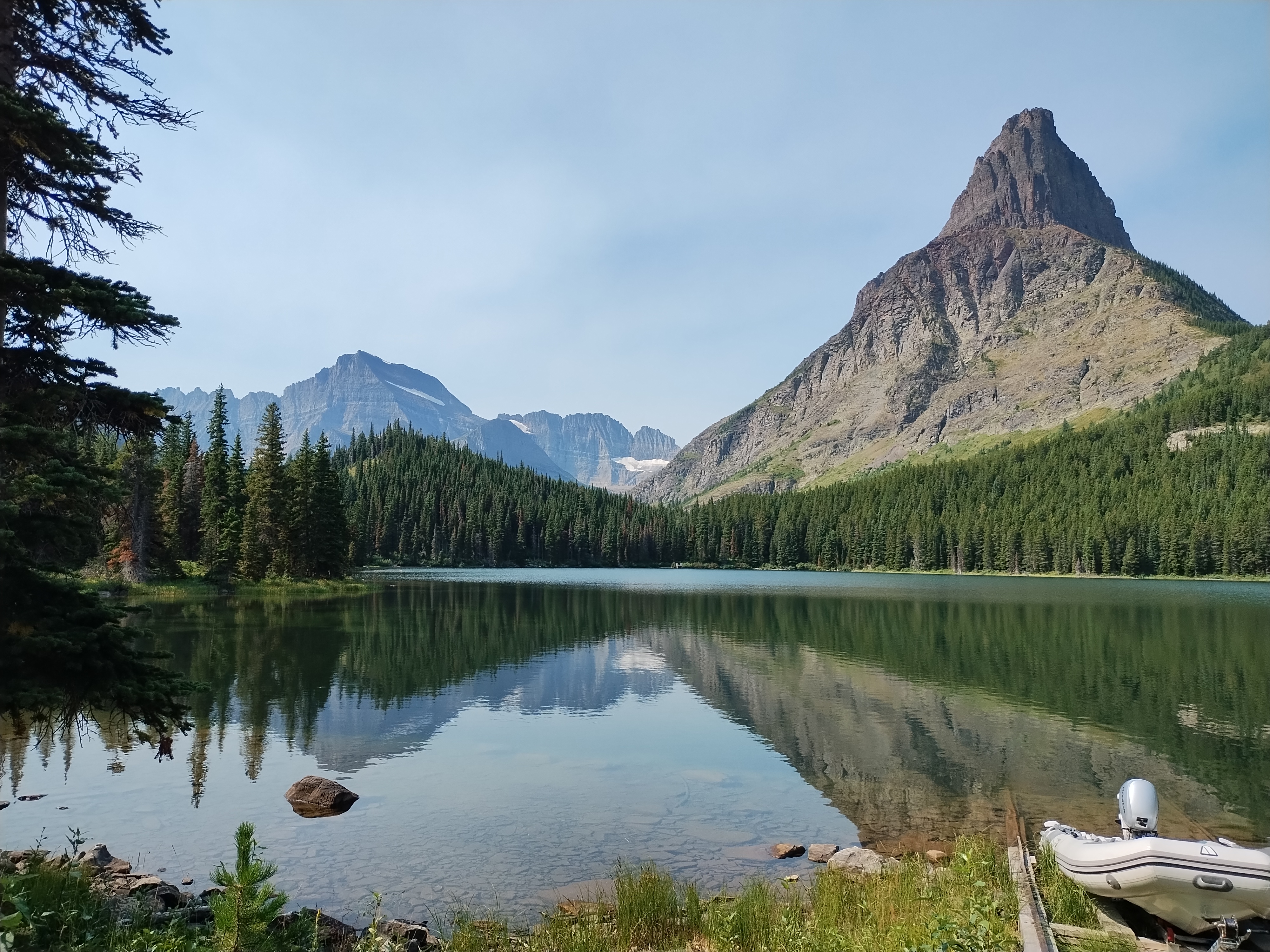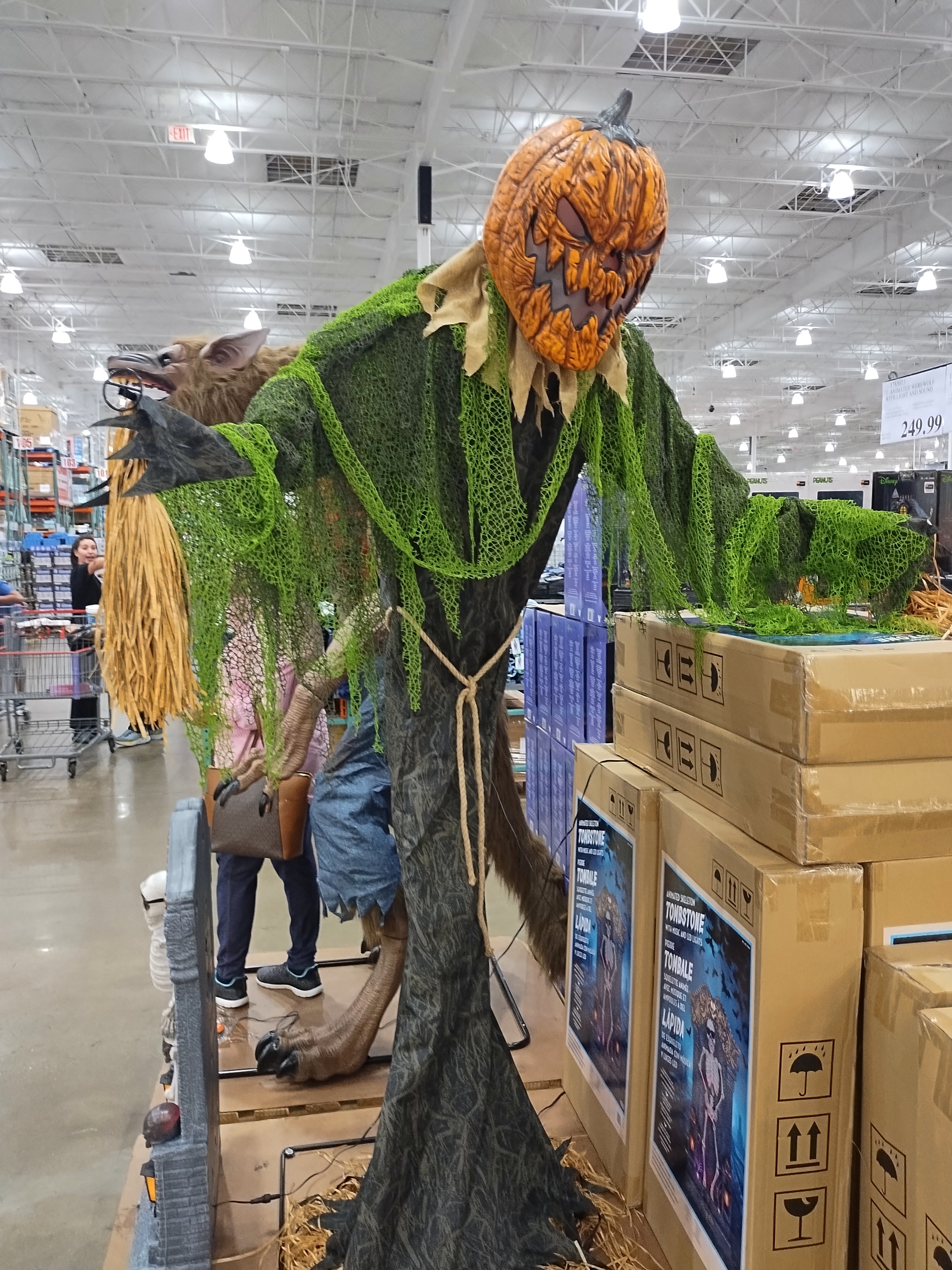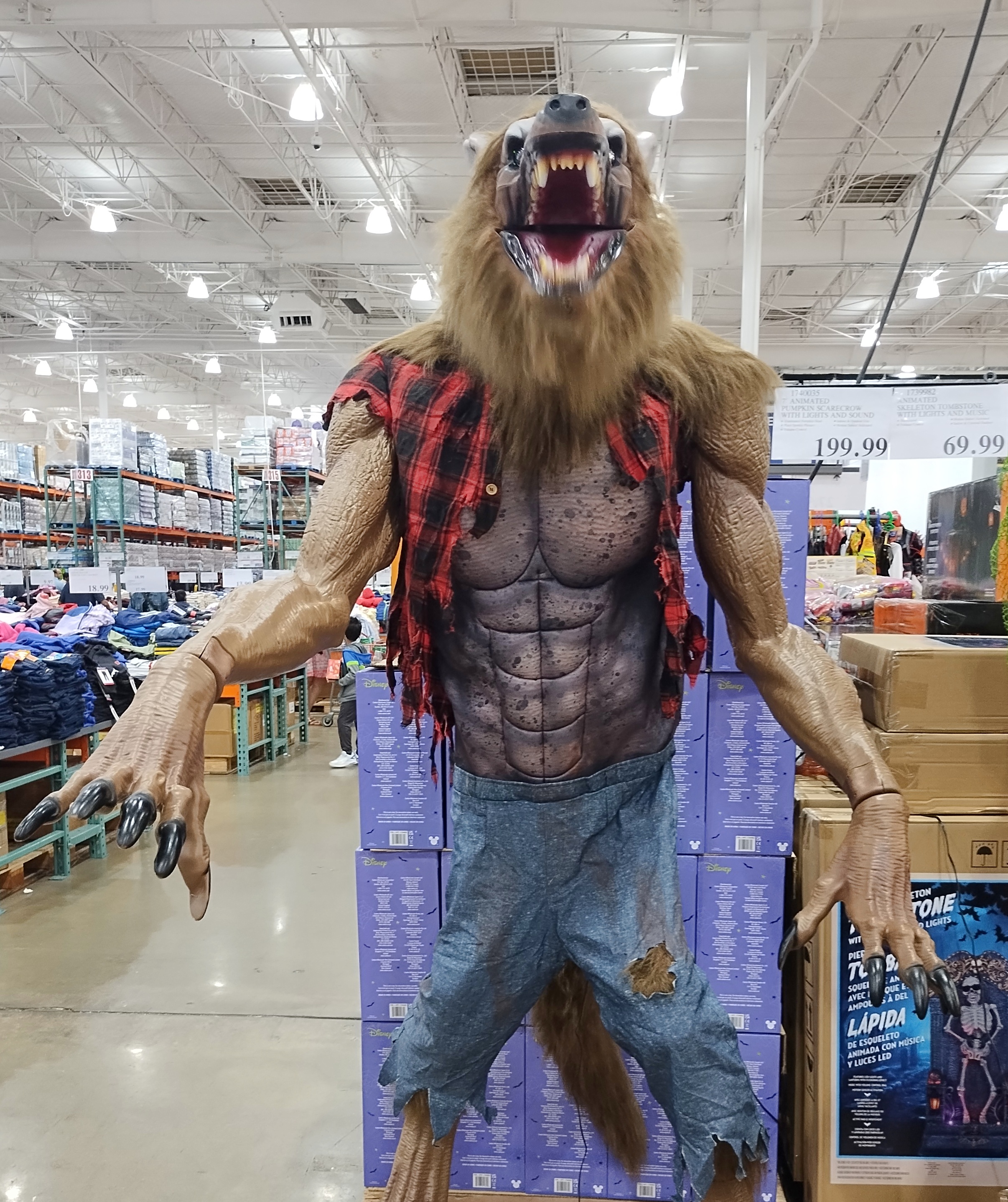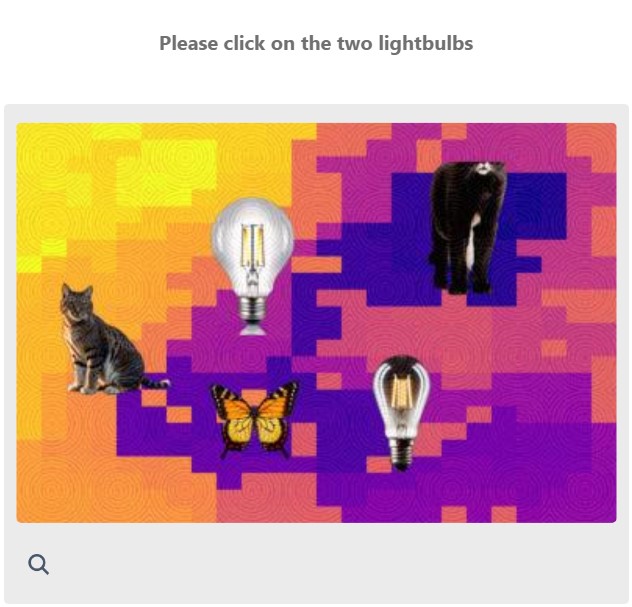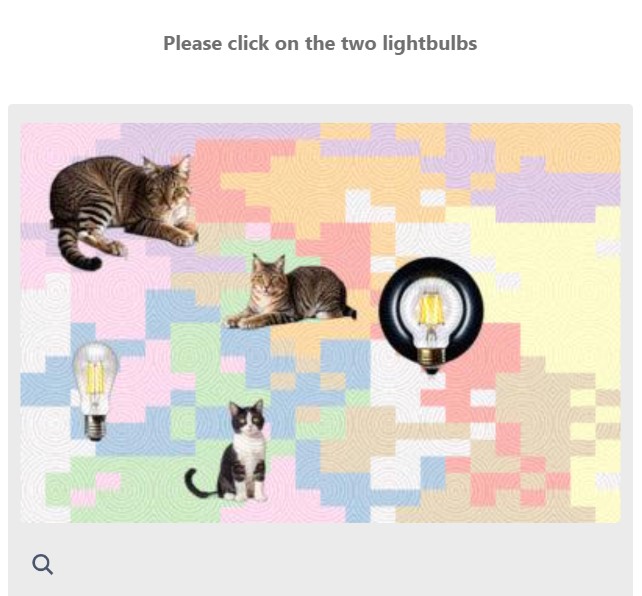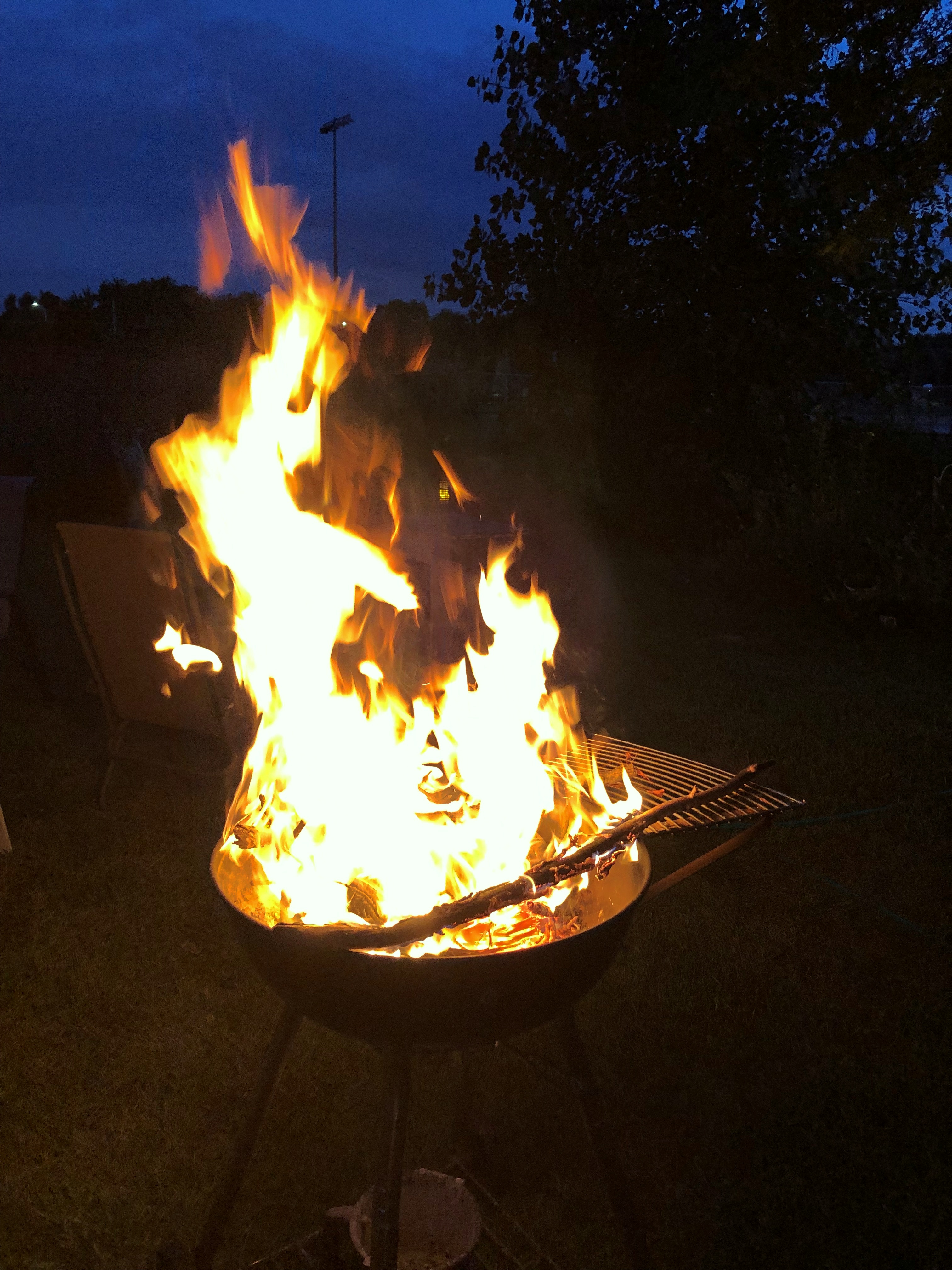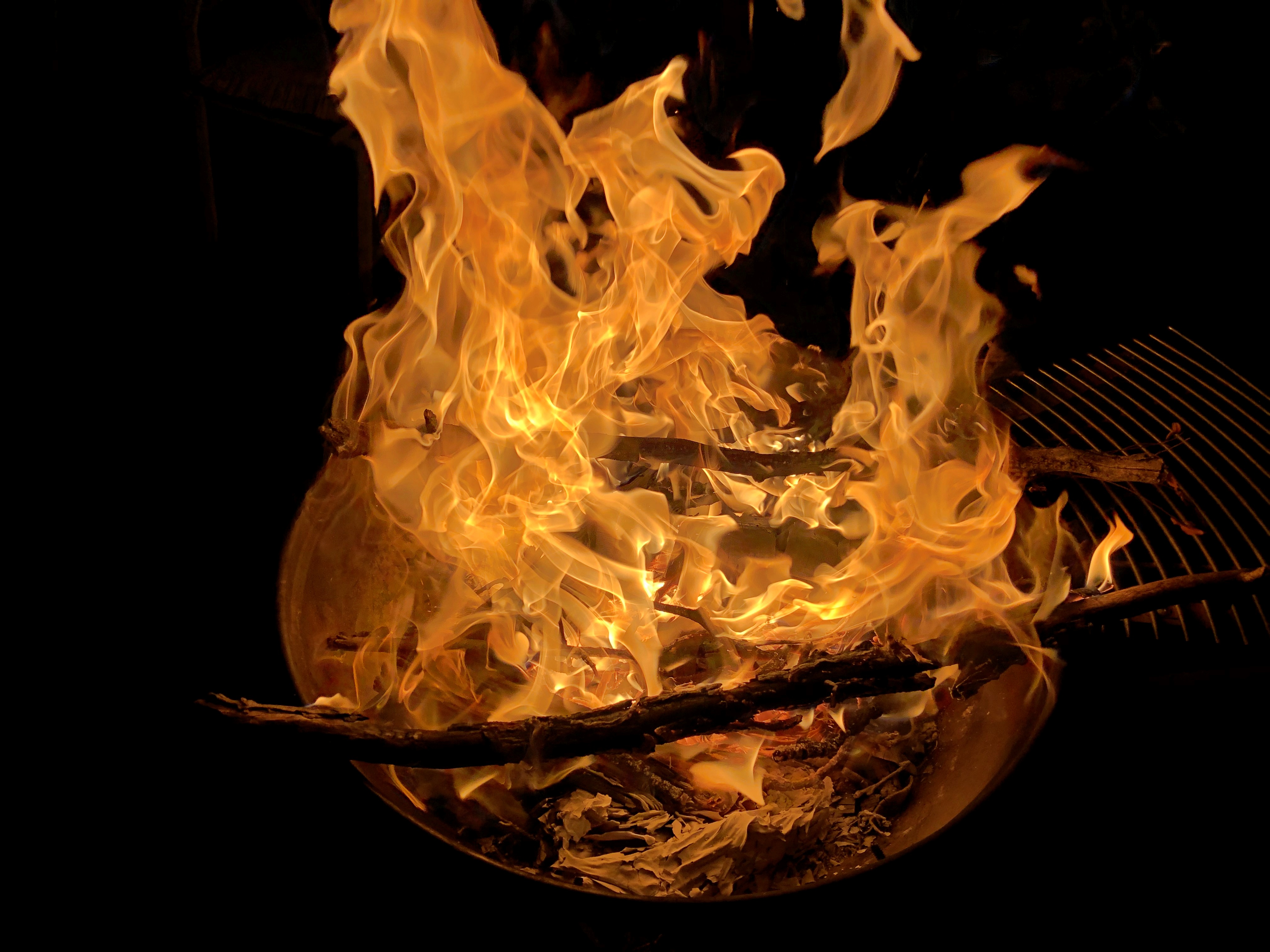Days are still fairly long in mid-August, so spending some time at Badlands NP before driving to Wyoming wasn’t a bad idea. As long as we got to our campsite with some light left, setting things up wouldn’t be difficult.
I’d checked the weather for our destination, Devils Tower National Monument, and the only time rain was expected was the late afternoon on August 19, exactly when we would arrive. Ah, well. Nothing to do about that but press on.
Skies were cloudy and the wind was up by the time we got to Wyoming.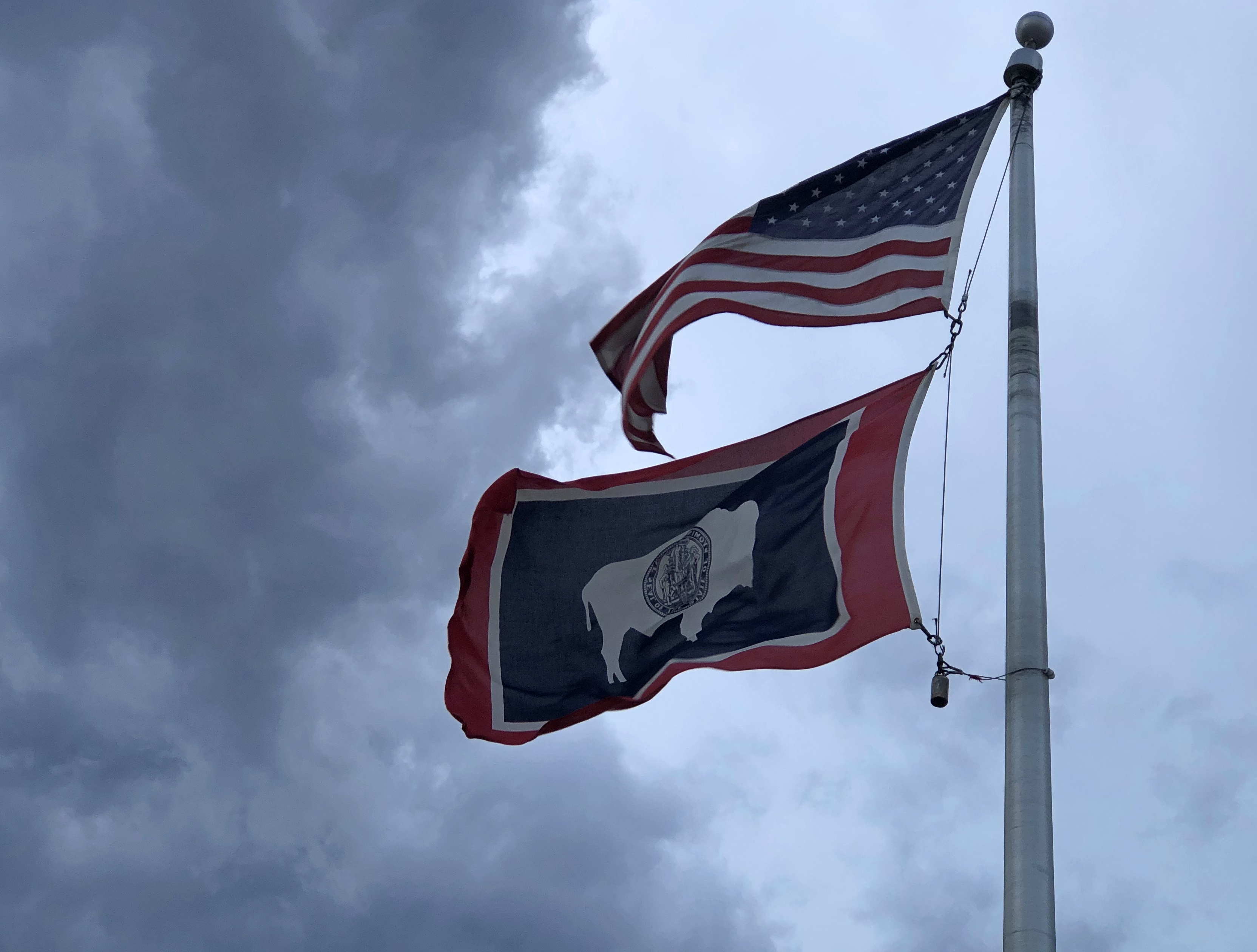
The monument isn’t far from the border with South Dakota. Take I-90 to Sundance, then US 14 and then a short stretch of Wyoming 24 to the monument. Soon after we got off the Interstate, that ominous gray cut loose some fierce rain, so heavy at times that it was best to find a wide place in the road to stop and wait for it to pass. That happened more than once as the rain variously intensified and slacked off.
Even so, we got the the entrance to the monument – and the campground just outside the entrance – well before dark. No worries. Did it snow here while it was raining on us a few miles away?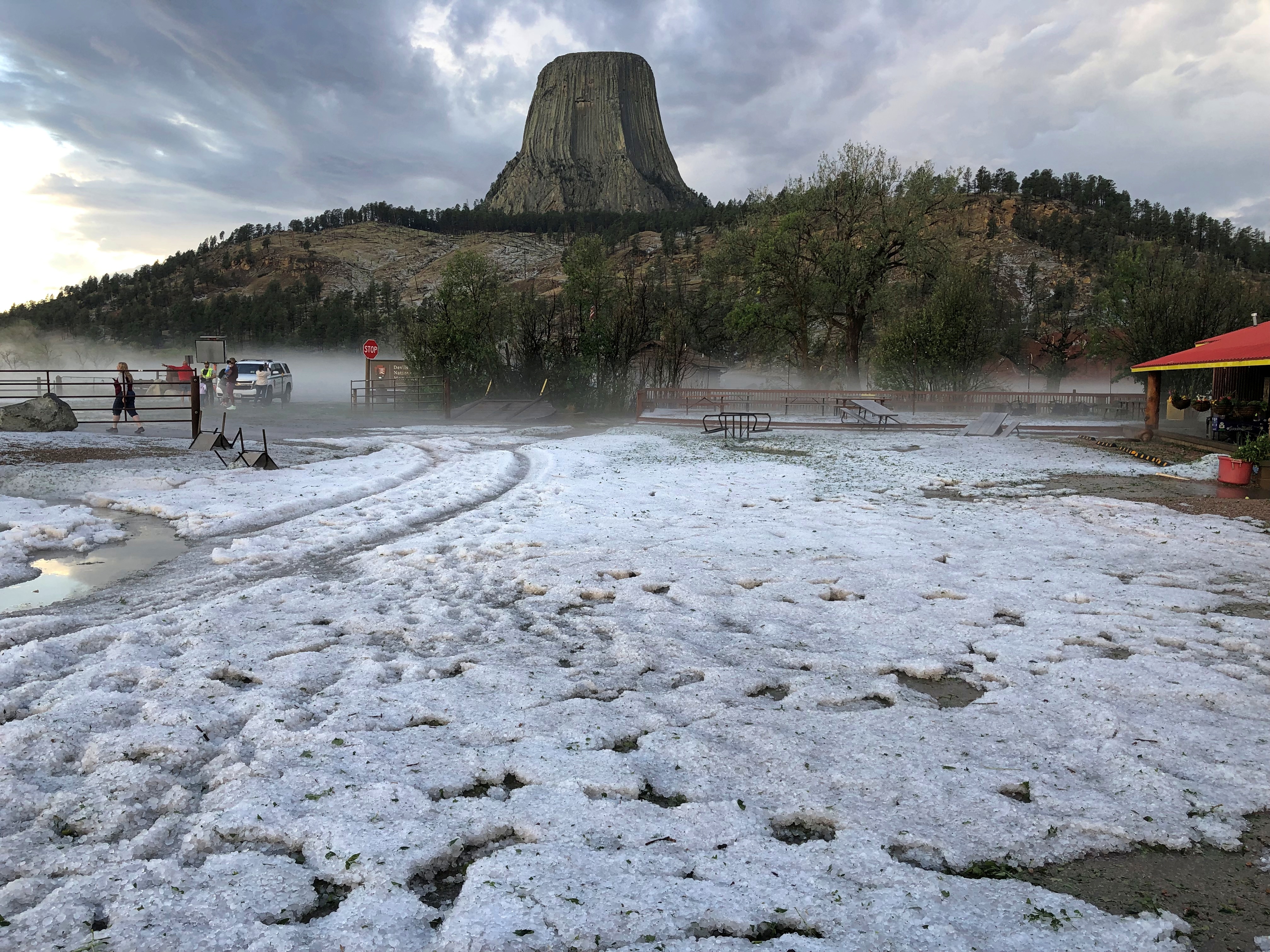
No. That was hail. Some fairly big hailstones, too; not quite golf ball-sized, but not too far off the mark. We went in to register to find that the campground had lost its power.
“Storm knocked out your power?” I asked the clerk, a middle-aged woman. It had, she said, and done a lot of other damage, including to vehicles parked in the campground. She also explained that the places where tent campers go was probably covered by melting ice. She offered to do a refund for the day’s worth of camping we’d paid as a down payment on two days — as soon as the computers were up again.
And she did. Cell service was possible in the area, to my surprise, and I looked into a couple of motels in Sundance, about 20 or 30 minutes away. The Bear Lodge Motel had what we needed: two nights at a middling price. The motel was a comfortable independent with a fairly traditional streak when it came to motel décor and amenities, though (damn it) no bottle opener attached under the sink outside the bathroom and no Sanitized For Your Protection ribbon. Nice beds, though, and bathroom for that matter.
The next morning was clear and after a simple breakfast in the room, we returned to Devils Tower with the idea that we’d hike the trail that circles the tower. This time I had the leisure to document the approach to the monument.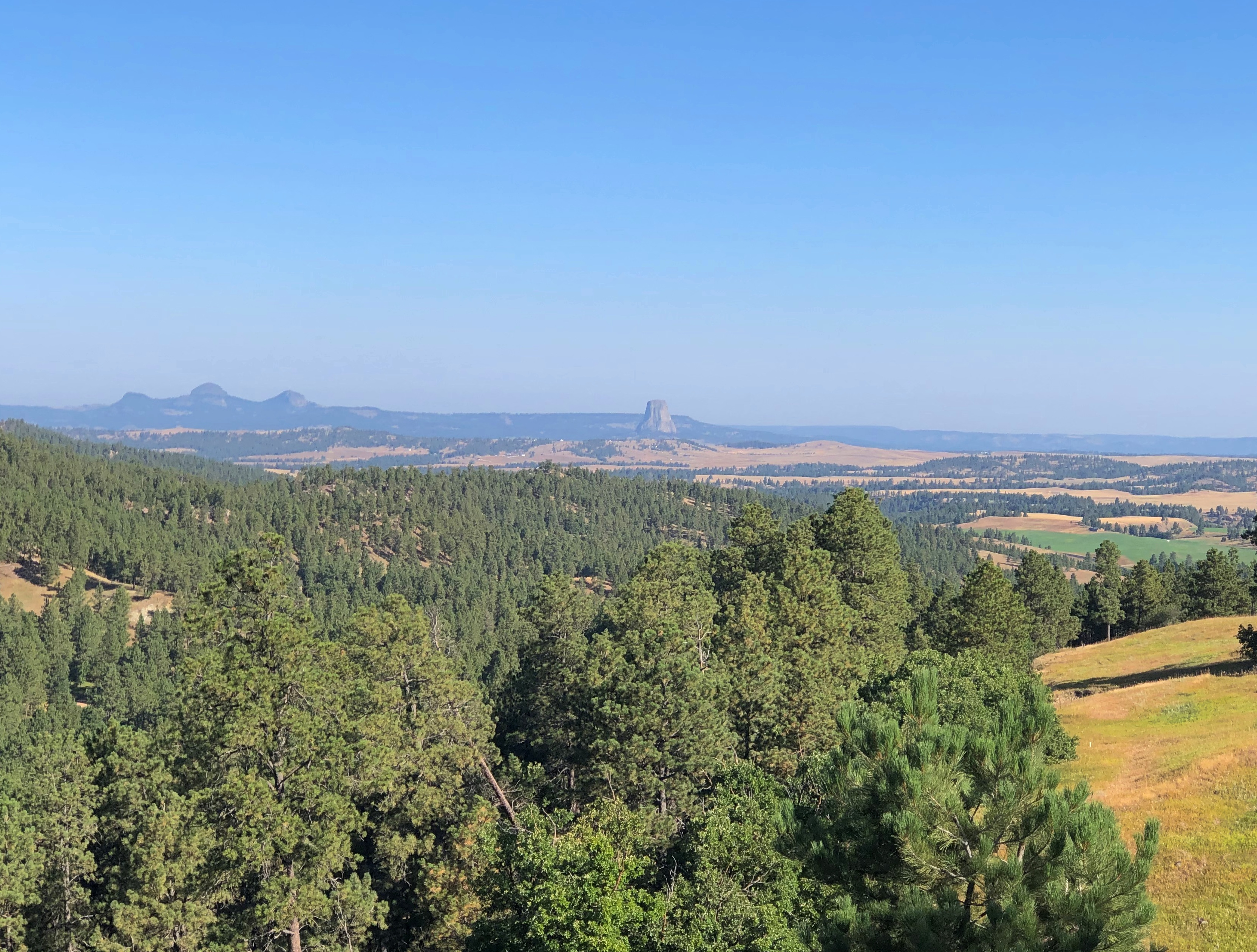

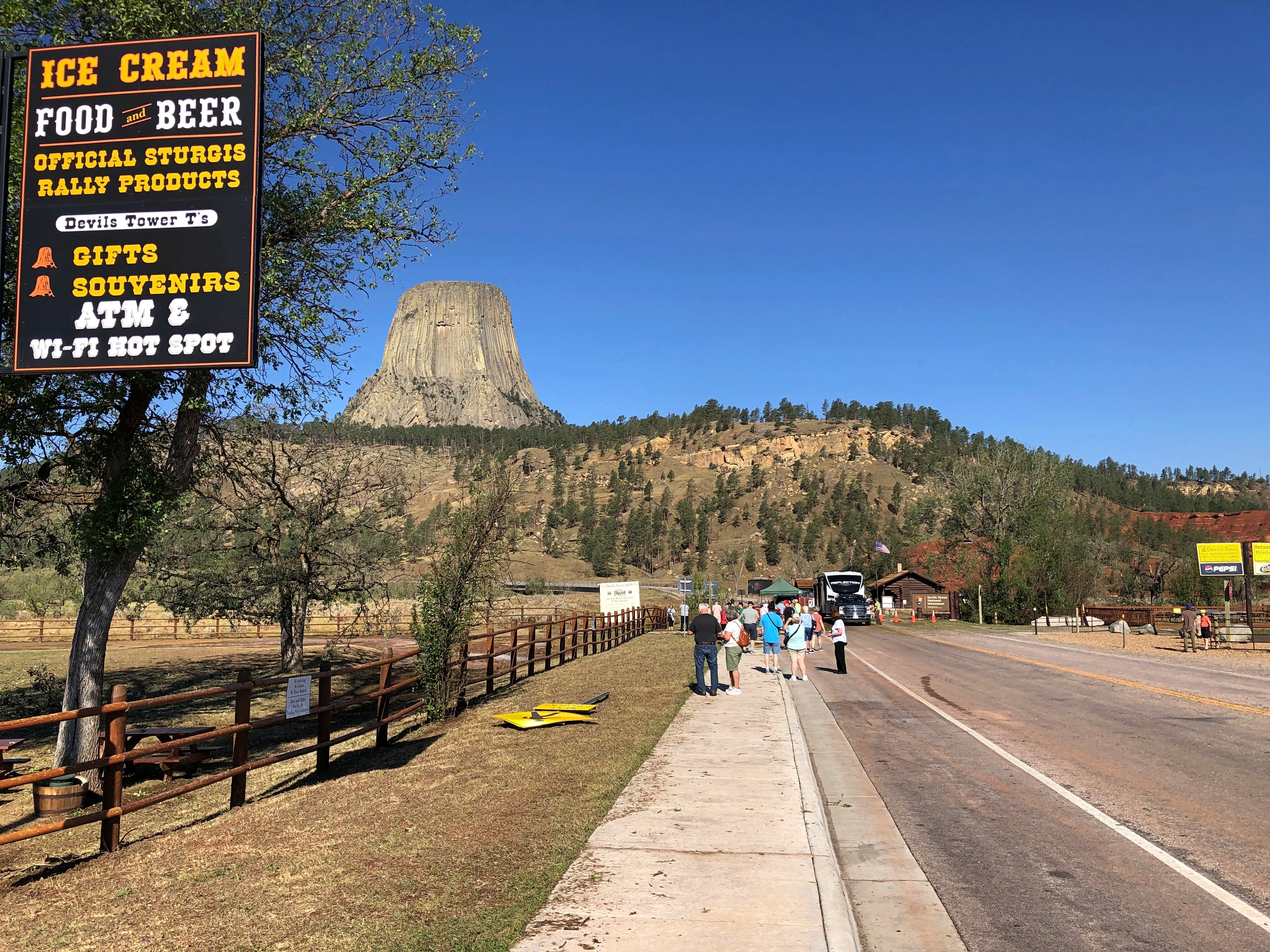
Soon we discovered that the monument was closed. People from their cars and tour buses found out the very same thing.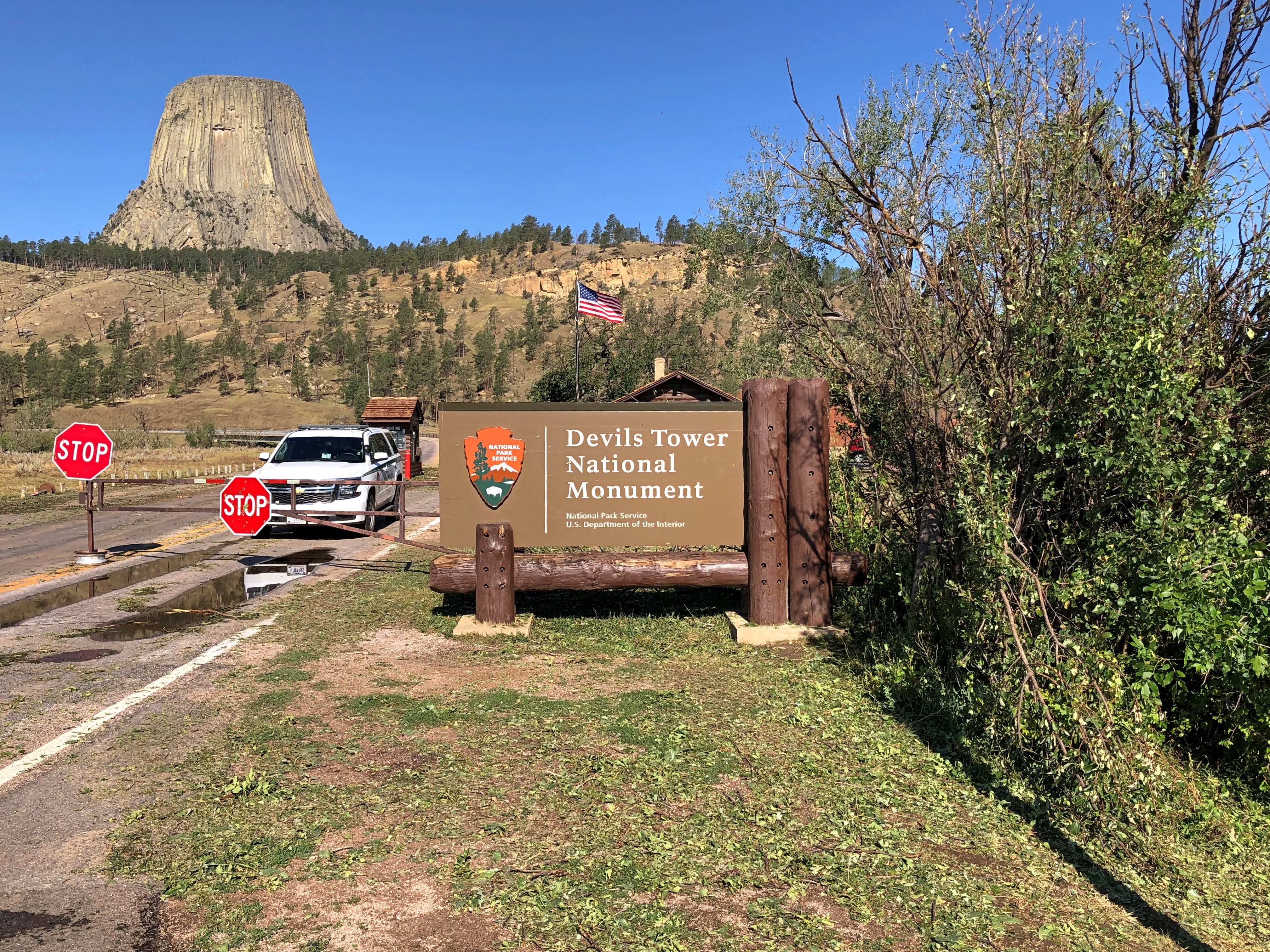

I asked a NPS ranger at the entrance about it, and he said that a lot of trees and maybe rocks and other debris had fallen on the road inside the monument, and he didn’t know when it would open again – though he guessed not today, stressing that that wasn’t the official word. I thanked him and we figured, not today was about the size of it.
We wandered around a bit, taking a look at the thing. “Bear Lodge” is the translation of native names for the tower. The reference to the Devil was a Victorian-era creation (another of the four fonts of the modern world, and a particularly big one).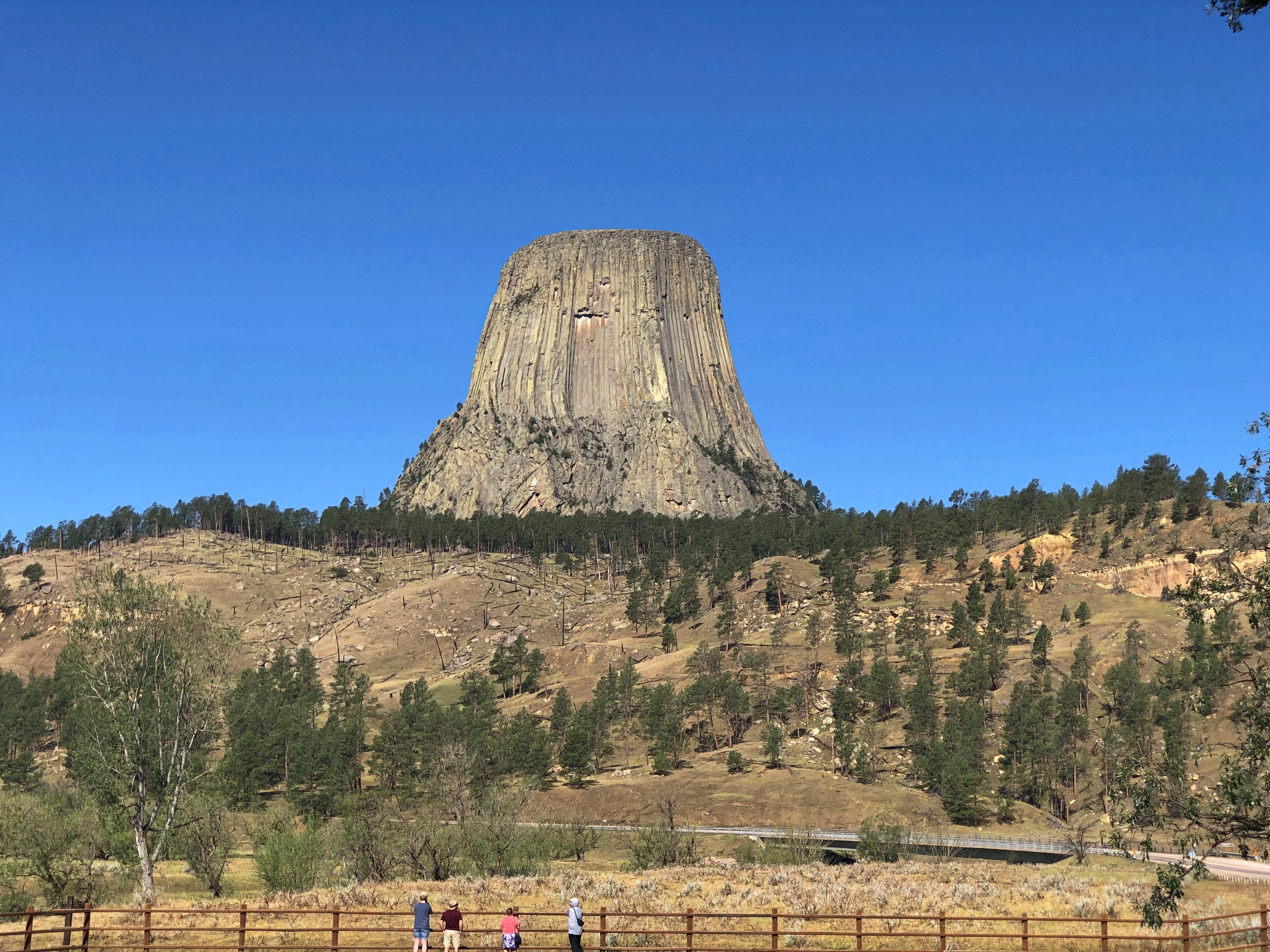
Impressive. If I understand what I read, scientific opinion isn’t quite solid on the exact process that caused the rising of the tower, but there it was: an igneous tower rising over sedimentary plains. Lording over the plains? There’s nothing that can’t be anthropomorphized.
Speaking of which, bipedal and stretched-body space aliens of a distinct green hue can be found in the main gift shop outside the entrance (not a NPS shop).
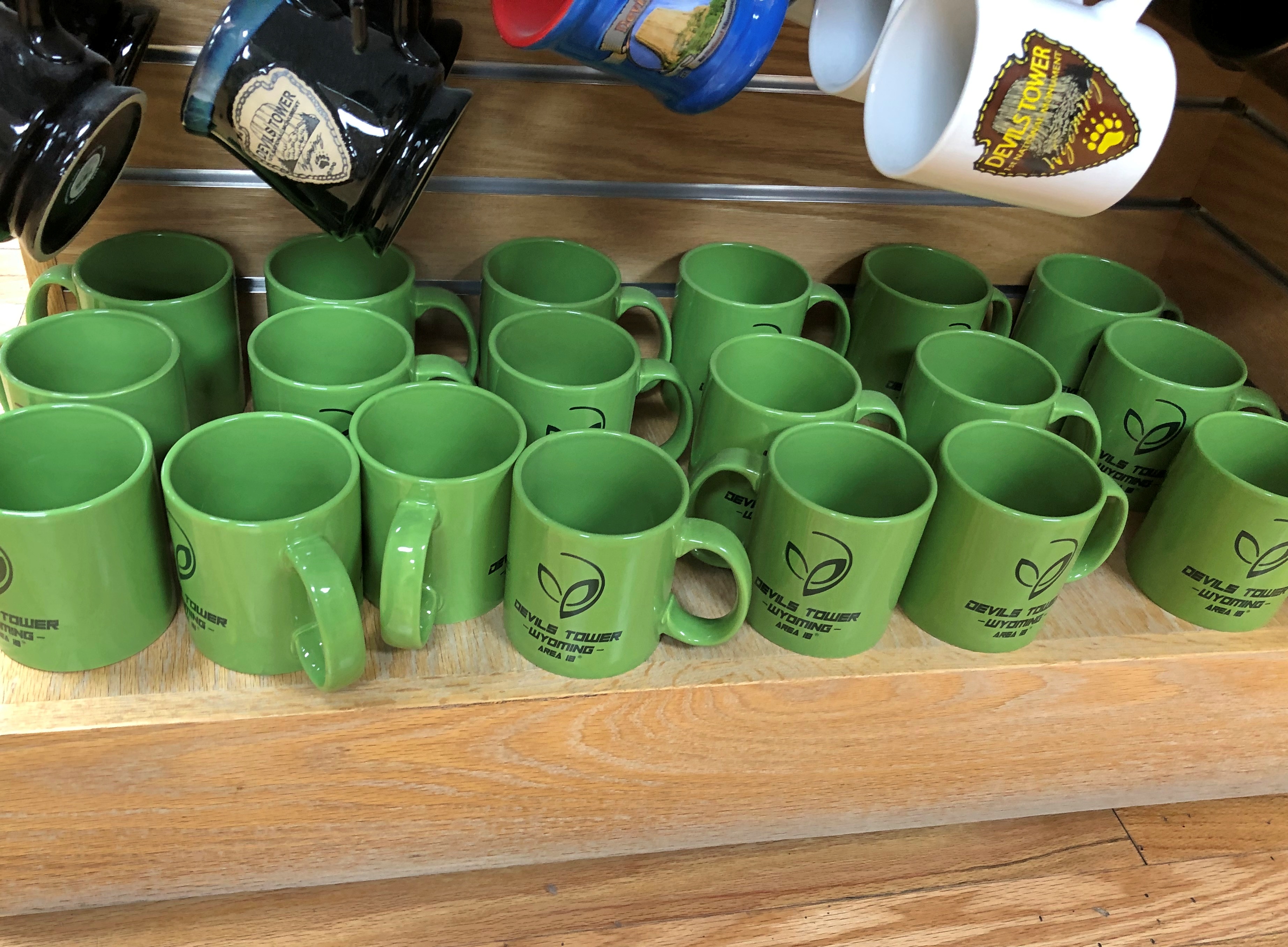
Remarkable, the ongoing influence (though admittedly minor) of a movie that came out nearly 50 years ago. Guess that shows the value of putting a catchy tune in your movie.
I hadn’t thought about that movie in years, much less seen it. In fact, I’ve seen it only once, as a new movie in late 1977, in those heady first months of having a drivers license, which meant I could take girls out. I did to Close Encounters of the Third Kind, though I’m not quite certain now which girl I took.
If you asked me, the gift shop had too much space alien bric-a-brac and not enough Teddy Roosevelt. His name is on the presidential proclamation creating the monument, the very first one under the Antiquities Act of 1906.
I sent a picture of the tower to my old friend Tom.
Tom responded with a text: *Hears the movie theme to Close Encounters*
Me: Looking at the gift shop, you’d think there was a permanent alien settlement on top.
Tom: *Looks around shiftily.* Isn’t there? Have you actually been up there to find out? They could have their own Starbucks up there for all we know.
Me: The truth is out there.
Tom: And it might be caffeinated!
